


"Warrior's Pearls" "Warrior's Pearls" "Respect is nothing but the right distance"
"Respect is nothing but the right distance"




"Warrior's Pearls" "Warrior's Pearls" "Respect is nothing but the right distance"
"Respect is nothing but the right distance"

Iwas asked the other day how I learned e-bunto.
To this question I always explain how I met my teacher, Shidoshi Jordan Augusto on May 25, 2006, (my birthday at the time), and how from that meeting, I gradually became interested in the knowledge that he treasured about the ancient Hagumo.
Everything I have learned about e-bunto, little or much, I have learned from Shidoshi Jordan Augusto.
For years and through many changes and varied vicissitudes, I have studied all that he wanted to teach me, and that with greater or lesser wisdom, I was able to absorb. I still continue to do so, such is the vast accumulation of information received and not integrated. I know of no other sources, except of course that of Shidoshi Juliana Galende, who dedicated much time and patience to me in her day. Thank you.
I am proud of our roots as a spiritual tradition, so I will not only never deny, but I will vindicate, that lineage in which I was accepted, only through the intermediation of the one who initiated me and who taught me all these years.
With all my limitations and with much effort, I have tried to live up to what I received and give sequence to a deep and powerful tradition, which apparently lived its decline as a tool of an extraordinary culture, but whose true holders were few and most of them have been dying.
Shidoshi Jordan Augusto is a living treasure of that tradition and I fear that no matter how hard his students try, much of what he knows will die with him. I, who am older than him, look at this future with suspicion, but if this is the way things are going to be, we can only celebrate the existence of the legacy of which he is the bearer during his lifetime.
For my part, I will continue with my limitations, giving sequence to what I have learned and trying to deepen what is missing, as long as it is possible. Everything that is born, has an end, the important thing for us finite beings, is what is done in between, since both extreme moments will always be beyond our capabilities.
I have never pursued titles, nor degrees, nor papers that dignify my status, all that I have obtained within the e-bunto I owe to the kindness of my teacher.
With these words I want to publicly declare my gratitude to my teacher for so many years of effort, and as I have done in all my books, more than one prefaced by Shidoshi Jordan himself, remember that he is the source from which all my knowledge of e-bunto has come from.
Joho Yamori Sama, Amaomakikomishio!.... Ad eternum





Enrique de Vicente interview to
Shidoshi Alfredo Tucci on his youtube channel about Ebunto Japanese Shamanism of the indigenous people of Japan
Enrique de Vicente interview to Shidoshi Alfredo Tucci on his youtube channel about Ebunto Japanese Shamanism of the indigenous people of Japan


Dai Sifu Kernspecht. A genius of the Martial Arts.
Gone is one of the greatest, certainly the most influential Wing Tsun teacher in the world. I worked with him for many years, including a 16 page supplement in my magazine under the name WT International. He created the largest network of students of a style that has ever existed and undoubtedly made it the biggest AAMM business in the last 5 decades, as far as teaching is concerned and under a single command. This gave him the title of Kaiser of Martial Arts. Success is never a coincidence in any discipline, not even in AAMM. Kernspecht was an extremely intelligent person, a restless, curious and enthusiastic mind, who knew how to grow and innovate in our sector. We can say without a doubt that this is the result not only of hard work, but also of a spark of genius. He knew how to use his personality and charm to systematize the style and weave a network that succeeded like no other in Germany and from there in many other European countries.
Like all outstanding and successful people, he had his detractors and his fans. He was a cultured and intelligent man, with gentle and elegant manners; he always complied with everything he agreed with me. He brought his Sifu Leung Ting to record videos with us and he himself participated in them. The article, written by Franco Vacirca, had planned for this month its second part, and the news of his death forced us to change covers and contents to attach to this, which undoubtedly will be his last collaboration with a magazine, with a just and deserved tribute that includes this cover.
May he rest in peace.
Farewell to a Farewell to a


"If Wing Tsun is so effective, why don´t we see it in MMA fights?"
Again and again, I read emails and Facebook comments from people who mock or even express contempt for classical martial arts or self-defence methods.
No martial art teaching movements that do not look exactly like those they are used to see in MMA or UFC is exempt from such sometimes very primitively expressed abuse.
We respect MMA athletes and grappling, and value the focus on reality that has by now hopefully opened the eyes of the dreamers and crackpots among martial artists. As early as 1987, when hardly anybody except myself thought much of wrestling (grappling), I wrote in my bestseller "On Single Combat" that I consider a "mixture of boxing, football kicks and freestyle wrestling" to be a great fighting method.
At the time a highly thought-of Karate and Kickboxing pioneer angrily wrote:
"Nowadays young whippersnappers who have just subscribed to an MMA or grappling course, or couch potatoes whose knowledge comes from YouTube, have the nerve to abuse us oldtimers who were already fighting in the streets as part of our profession when these know-alls were not even born."
So what triggers this reflex in people who declare that anything not looking like MMA is stuff and nonsense?
In my view it is sheer ignorance:
These people do not know that it was the classical martial arts, and not just wrestling and boxing, that originally supplied the techniques now used in MMA and UFC.
As the MMA training approach tends to take its lead from western boxing, its combat movements have a more fluid and natural appearance than the often highly formal and almost robotic and artificial movements of the old, original Asian martial arts.
MMA fights present a more free and natural image that only follows usefulness and personal preferences.
Nonetheless, fights and training according to the MMA approach have something uniform and stereotyped about them:
The athletes prepare in almost the same way, and practice for the five phases of a fight which I have divided into 5 distances and the appropriate weapons in our EWTO WingTsun.
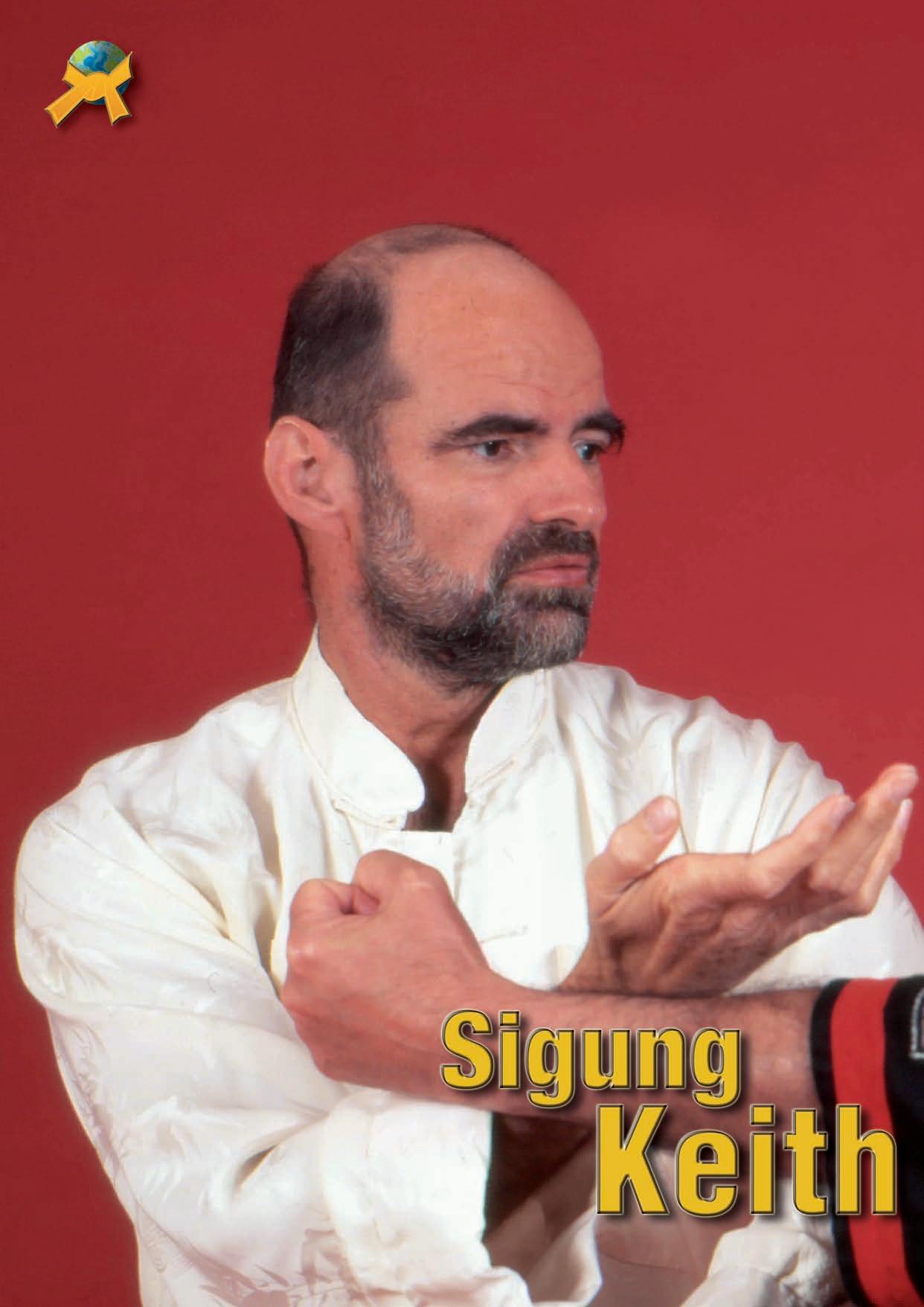

My 1987 book "On Single Combat" already covered this:
1. Kicking
2. Boxing, striking, thrusting
3. Elbows, knees, headbutts, clinching
4. Upright grappling, locks, chokes, throws
5. Groundfighting
All combat sports/martial arts more or less specialise in 1-2 of these distances.
NOR IS MMA A StYlE, BUT RATHER A FORM OF COMPETITON where different styles are mixed (MMA = Mixed Martial Arts).
So what are the styles that can be most easily mixed for this purpose?
Of course those that were already used in sporting competition beforehand:
a priori it is Judo/Jiu Jutsu, Kyokushin Karate, Thai Boxing and Wrestling that come to mind.
Our experts in the EWTO, who on my advice started learning MMA methods and grappling from Jon Bluming, and now train in the USA under Gene leBell and Gokor Chivichyan, i.e. GM Thomas Schrön, who also holds a black belt in Brazilian JuJitsu (BJJ), and GM Oliver König, agree with me that this applies in practice.
Thai boxing is the most versatile, as it covers the first 3 phases.
Boxing is the leader in phase 2 as its speciality is "punching", and boxers are able to clinch in phase 3.
Judo and Wrestling are predominant in the 4th and 5th phase.
It is a fact that Wing Chun in its various spellings, the Russian Systema and Israeli Krav Maga very rarely appear in the selection of styles encountered in MMA, and neither do Kempo, Aikido, Tai Chi, Pakua, Hsing-I, Yi Chuan, I Lik Chuan, Choy Lee Fut, Silat, White Crane, Southern Praying Mantis, White Eyebrow, Tongbei, etc.

So does this mean that these styles do not have the technical prerequisites that qualify them for use in MMA?
Of course not! They all have what it takes to provide techniques for two or more of the five phases.
In fact suitability for MMA is not so much a matter of style-specific techniques as a matter of the MANNER IN WHICH, AND HOW intensively and hard these techniques are practiced, and how much punishment fighters in these styles are prepared to take and deliver. It is all no good without a certain ruthlessness towards the health of your opponent and your own, and nowadays very few can exhibit that.
I therefore contend that if it is only matter of technical means, other styles would also be able to cover certain areas when it comes to preparing for MMA tournaments, but that the necessary NATURAL FIGHTERS are only encountered in sufficient numbers in the 4-5 styles mentioned above.
For example, Tai Chi was formerly a style where fights were a matter of life or death, but today it has become a kind of lifestyle activity with followers of a corresponding mindset.
The uniform picture that MMA fights present is not due to the need for combat to look exactly like that! It could also look different, and would not have to be less effective because of this.
The incorrect assumption that only the techniques seen in MMA are logical in a fight, and that all others are "nonsense", seems obvious to the observer and also its practitioners owing to the sheer number of times the same technical movements are performed. The entire martial arts world is saturated with these stereotypes.


As a result many are mistakenly tempted to believe that only these techniques and only these styles work when things get serious.
To come back to our WingTsun (wing chun, Ving tsun), it has much to offer in the 1st phase (kicking), the 2nd (striking, thrusting), the 3rd (clinching, elbows, knees) and also something in the 4th phase (upright grappling, locks, chokes, attacking nerve points).
At the time of Yip Man in Hong Kong there was no interest in groundfighting. Even Jigoro Kano, the founder of Judo, was contemptuous about groundfighting, as "A man is not an animal, he fights standing upright!". Kano later adopted aspects of other styles, and groundfighting became a major domain of his Judo!


At least my 2nd SiFu Leung Ting (1976-2008) taught special classes with falling exercises and fighting on the ground.
I myself began my martial arts career with wrestling in the late 1950s (in the late 1960s to 1970 I even worked as a "catcher" – now called a "pro wrestler" – to earn a little extra towards my university studies), then Judo/Jiu Jitsu and later also Aikido and Hapkido, so what is nowadays known as grappling was always part of what I did.
However, WingTsun (WT) is not a combat sport but as we understand it, a martial art or pure self-defence. We do not need the stamina for 5 minutes or more, but a maximum of 5 seconds when fighting an opponent. This is in my own experience and that of my students! We do not fight fairly, but rather cleverly and cruelly, because by definition we are the weaker party (our progenitor was a woman, a nun) and only fight to defend ourselves when we are compelled to fight. Or to defend others who are weaker. This is the old code of honour in KungFu.


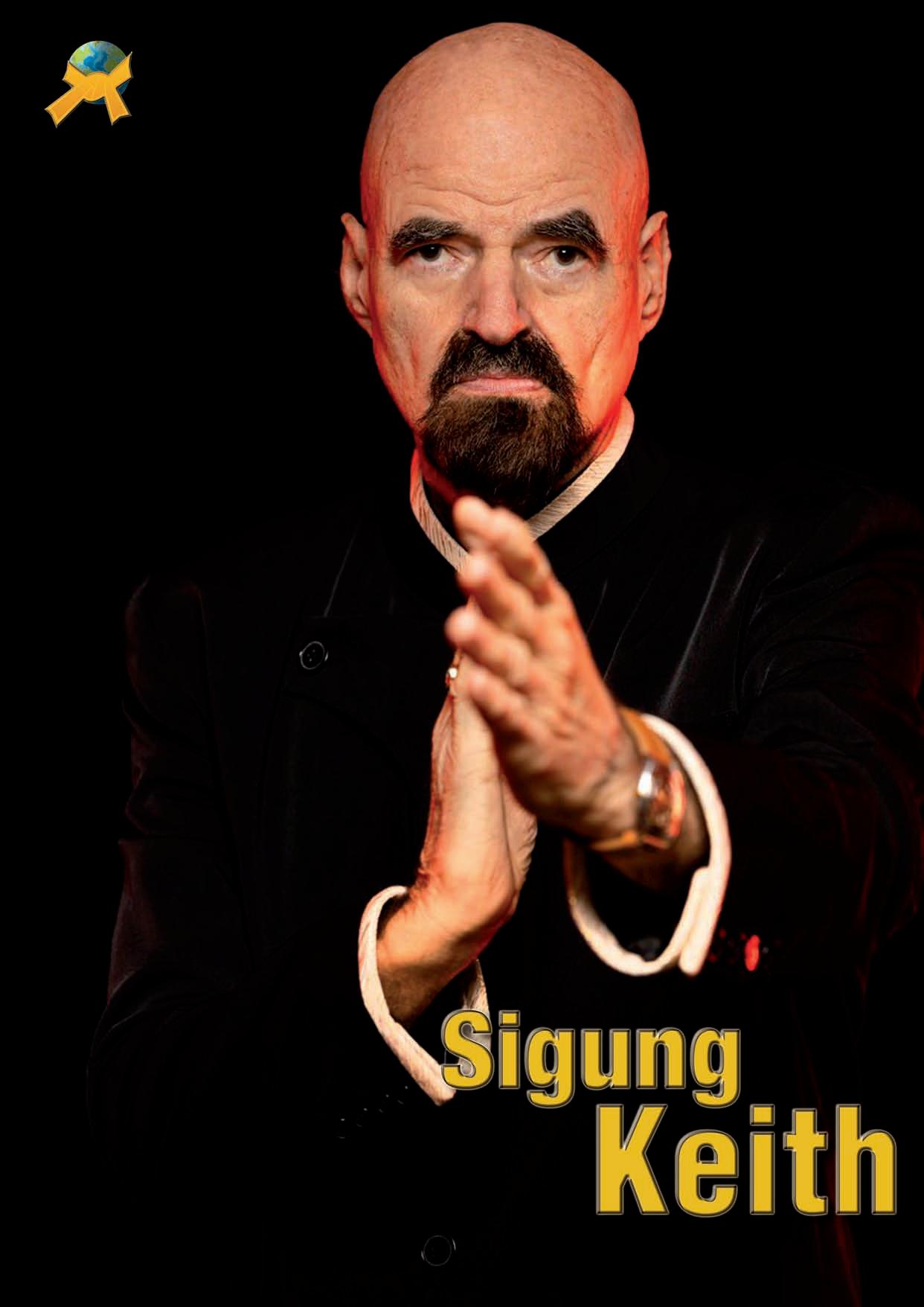

NEITHER IS FIGHTING THE GOAL IN WingTsun, but rather avoiding a fight or winning in seconds when defending ourselves. We know that mindfulness and presence of mind are more important than physical strength and techniques. And we always take the possibility of multiple opponents or an opponent carrying a weapon such as a knife etc. into account. These are things an MMA athlete does not need to think about.
We are usually not (professional) athletes, but rather normal people, and we have a high proportion of women and students.
In brief, most of our 50-60,000 members want to be able to defend themselves and others, but it would never occur to them to take part in UFC tournaments.
Nor is fighting in public compatible with the attitude of other martial arts, and particularly that of the so-called inner styles, which are concerned with quite different things such as selfperfection and reject competitive combat as ego-driven in the Zen-Buddhist sense.
It is therefore very improbable that those practicing these uncommon methods might be drawn to take part in such fights.
An additional factor in the case of 100% inner methods such as Tai Chi, Hsing-I, Pakua, Yi Chuan, I Lik Chuan is that one cannot master them after just 10 years to the extent that one could contemplate such fights. I cannot speak for all of these high developed methods, but to become a combat master in e.g. Tai Chi (Tai Chi Chuan), not even two or three times that number of years would be sufficient.
However, things would be quite different if already active MMA fighters were to acquire SOME KNOWLEDGE of the above arts.
This would give them considerable competitive advantages, as their opponents would find it hard to cope with the unknown.
I am therefore certain that an MMA fighter would decisively improve his chances of winning if he e.g. optimised his infight by additionally adapting sticky hands methods from WingTsun (Ving Tsun or Wing Chun) or the other arts I have mentioned.
Your SiFu/SiGung
Keith R. Kernspecht

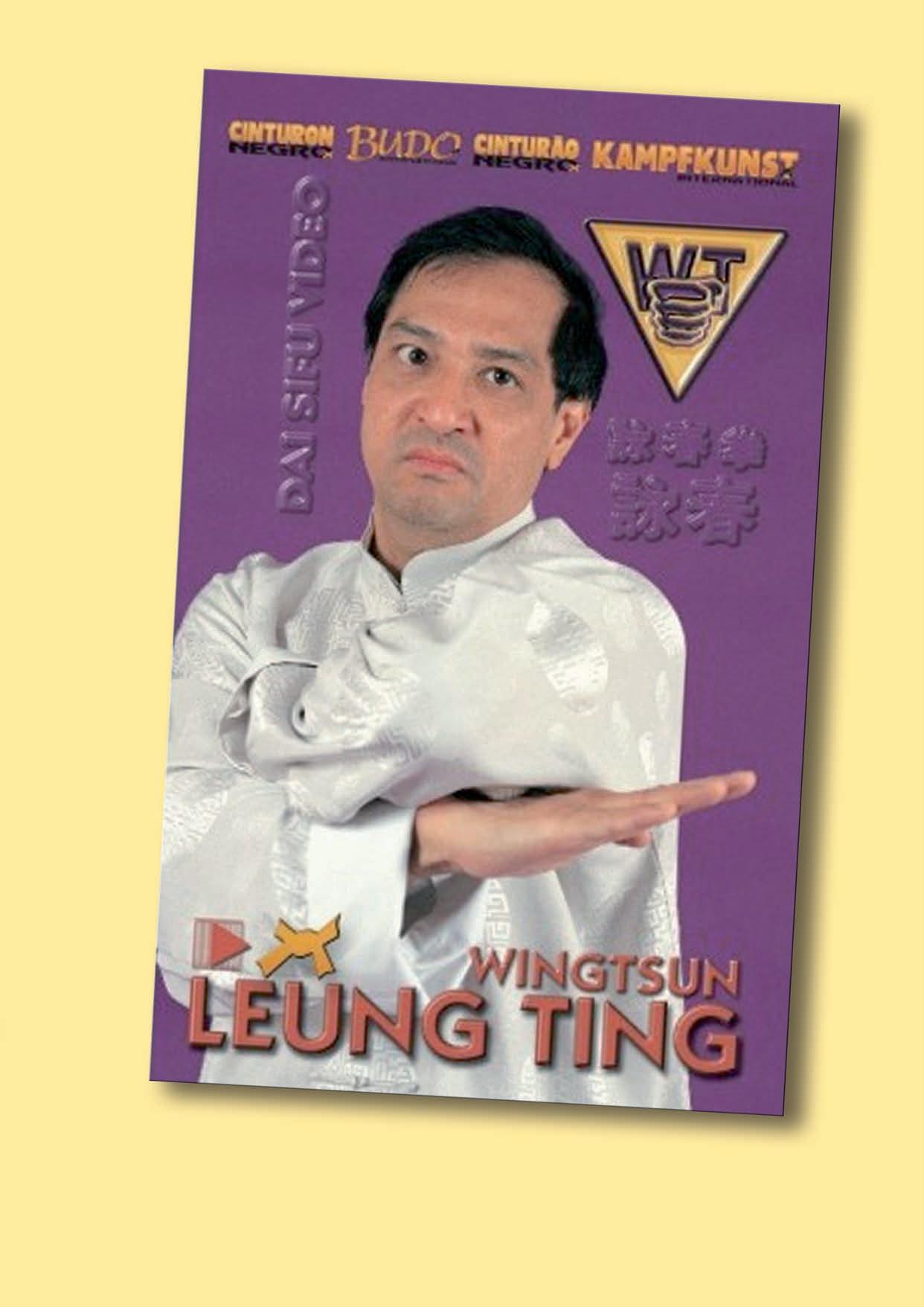

Sifu (Grandmaster) Keith Kernspecht visits Gracie Concepts
I wrote this article immediately after my return from Gran Canarias. The opportunity to meet with Sifu Keith Kernspecht, the father of European Wing Tsun and founder of “Magic Hands”, and to learn from him over several days and exchange ideas, arose shortly before. The completion of the text did not take place until November 27, 2024, one day after the unexpected news of Sifu Kernspecht's death. Sifu Kernspecht's unexpected death came as a shock to me, as I still wanted to spend numerous hours with him and his daughter Nathalie to learn and deepen my understanding of his Magic Hands of Kan-Ki-Fu.




From the perspective of an enthusiastic martial artist for over 35 years, who, regardless of my focus, Gracie Jiu-Jitsu, was interested in Magic Hands as demonstrated by Grandmaster Kernspecht. I can't just see it as a valuable “addon” to my martial arts knowledge, but as a method that I want to practice teaching it to my members and practice with them. Ultimately, everyone extracts the elements that are useful to him or her, in keeping with the motto of the Jeet Kune Do Sijo Bruce Lee: “Adapt what is useful, discard what is useless, and add what is specifically your own.”
Over dinner together in Gran Canarias, it was decided to introduce a small group in Zurich to the art of Magic Hands in my Dojo. The closed-door event gave me the opportunity to get to know the group of martial arts aficionados under the personal guidance of GM Kernspecht.
For this purpose, Sifu even traveled to Switzerland the day before. After the personal welcome at Zurich Airport and checking into the hotel, we had lunch together, followed by dinner. During the dinner, a variety of topics were discussed.
It was an extremely enriching experience for me to be able to exchange ideas with Sifu Kernspecht over such a long period of time, as was the case during the two days in Zurich. In my youth, I was completely devoted to Wing Tsun. At that time, I repeatedly heard stories about the Wing Tsun castle, but these were only spread by people with negative and envious motives. In fact, hardly anyone had personal contact with Kernspecht, and a lot was said to put themselves in a positive light.
He had achieved what many Kung Fu and martial arts teachers had in mind. Instead of learning from him and improving his methods, they always tried to discredit him and present his vision of Wing Tsun as “inauthentic”.
In a conversation, he asked me why I was interested in training with Magic Hands. I explained to him that I had been advised by an experienced Wing Tsun master a long time ago to learn increasingly intelligent methods in training, because at the age of 20 you don't yet have the necessary maturity to grasp the complex content of Wing Tsun. He just laughed, and I continued: “Weren't these your words to me, Sifu?” He just nodded, so I added: “As you get older, it's wise to rethink your approach to things in order to conserve energy and have more stamina than young people.”

www.graciejiujitsu.eu www.graciejiujitsu.eu

As already explained in the first part of the Magic Hands series, the idea described there can also be applied in Gracie Jiu-Jitsu. Intelligent systems have some common characteristics that make them efficient and thus also suitable for practical applications. One element that plays a role in both Wing Tsun and Gracie Jiu-Jitsu is the consideration of the opponent's physical strength and body weight in close combat. Constant pressure, including on an emotional level, plays a significant role in the development of a practitioner. It is possible that such pressure is also present in other styles and systems, which are not known to the author of these lines.

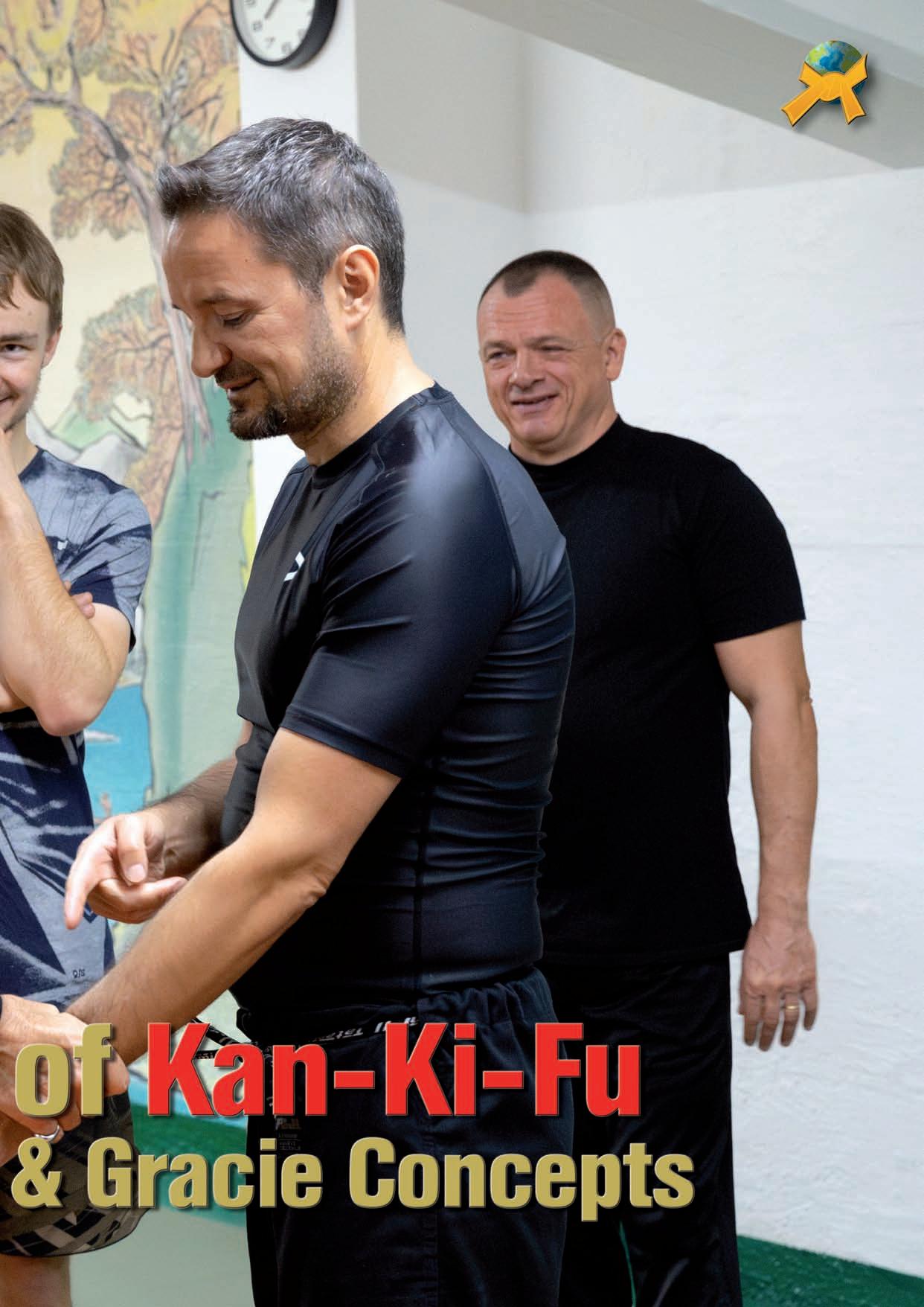


The question arises as to where the so-called “Magic Hands” touchpoints can be found.
When I first learned from Sifu Kernspecht that the beginning was to be found in the “points of contact”, this statement initially seemed familiar to me. As practitioners of Wing Chun/Wing Tsun as well as Jeet Kune Do (JKD), we were trained to know the so-called “reference points” to orient ourselves in combat. It was emphasized that there is always first contact. This insight goes back to Bruce Lee, the founder of Jeet Kune Do. He used this concept to teach his followers the practice of trapping. For several JKD followers, the concept of trapping has become a kind of guiding principle, with the focus being exclusively on this distance in a duel.
During my first encounter with the renowned JKD expert Sifu Larry Hartsell, a student of the first generation under Bruce Lee, in the mid-1980s, I realized that the combat distances could also be explained and trained in different ways. Sifu Larry was not only an expert in trapping, but also an absolute expert in JKD grappling, which was of great importance to me personally.
These encounters, as well as participating in his seminars and training sessions in the US, England and Germany, deepened my understanding of the diversity of the middle and short distances. His approach to the element of “grappling” was more comprehensible to me than the approaches of others.
As a private student of Ajarn Surachai “Chai” Sirisute, Muay Thai boxing forms the basis for my knowledge of stand-up fighting. Bruce Lee's (Jun Fan) Gung-Fu and (Jun Fan) Kickboxing, on the other hand, play a subordinate role for me. In the early stages, the fight can be located between the “long” Kickboxing distance and the clinch and grappling. During this period, I was not always able to achieve the success I was striving for. Training at trapping distance, supplemented by knowledge of “classical” Wing Chun, brought about a fundamental change in my fighting skills. www.graciejiujitsu.eu
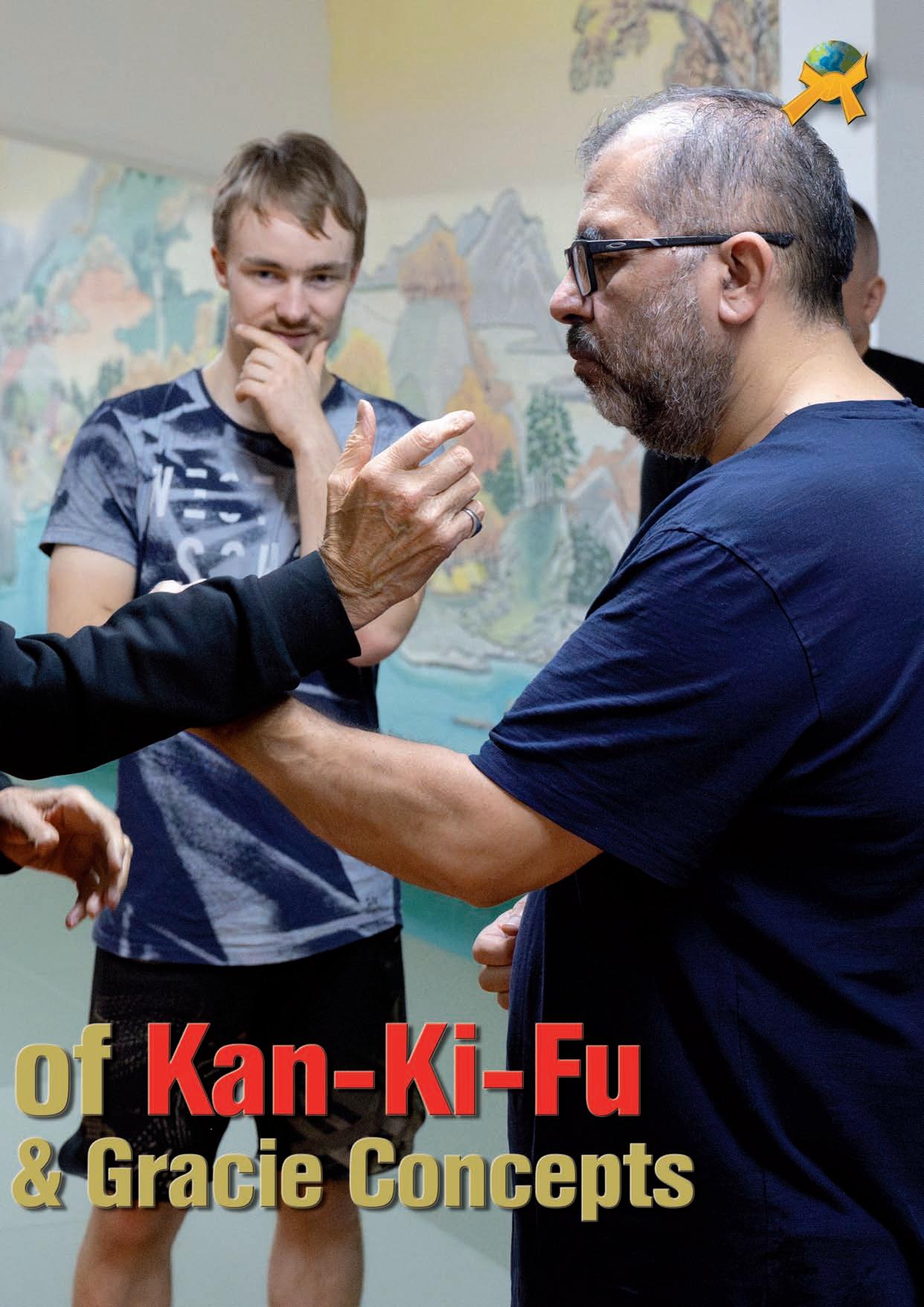
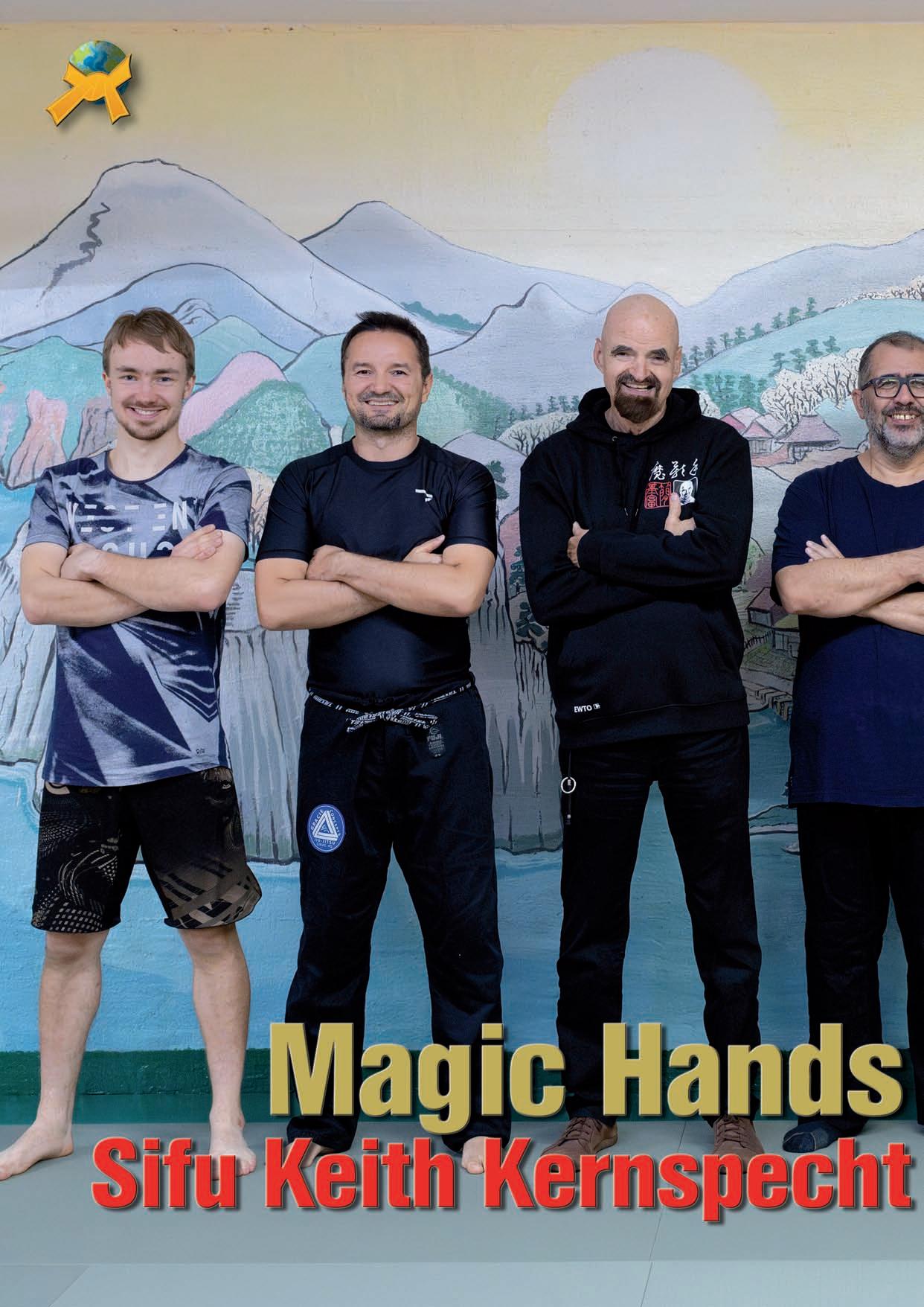
“His knowledge and spirit live on in all practitioners of Wing Tsun. His work commits to us all, regardless of which Wing Chun/Wing Tsun line we belong to. There is no question that this grandmaster has left us all a valuable and true legacy.”

The knowledge imparted by Sifu Kernspecht about the correct execution of the contact points was not only a new insight for me, but also a valuable practical application. The selection of the teacher is of crucial importance, since the student must not only acquire knowledge, but also be able to apply it in practice. The learning process should therefore be designed in such a way that the student is able to apply the acquired knowledge in practice in a short time.
One example of an adequately used point of contact in the context of the “Magic Hands” is the situation in which the opponent is holding “both arms of the victim” at the same
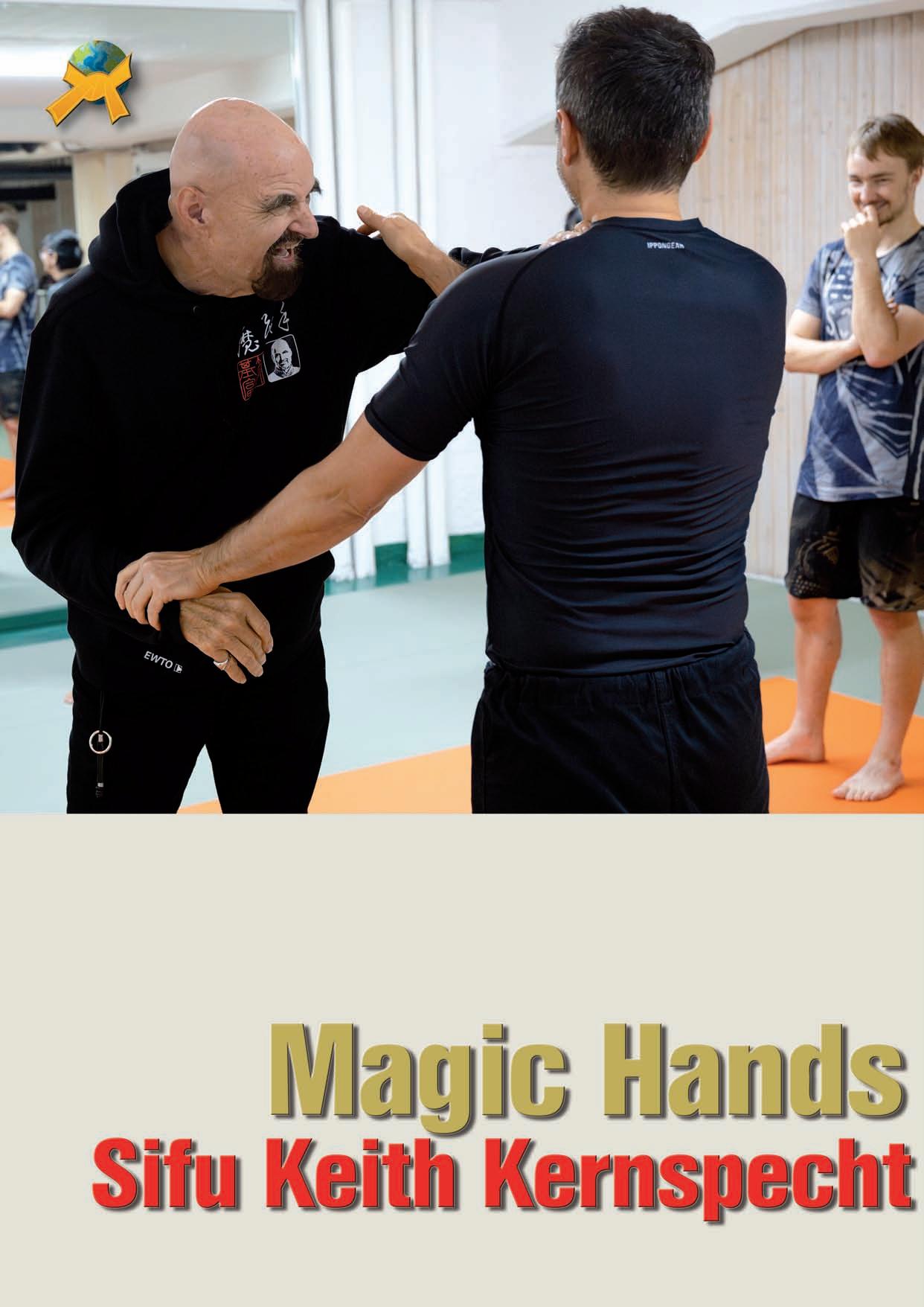
time. This situation can be compared to a realistic confrontation on the open street. This behavior demonstrates the superiority of the attacker and the humiliation of the victim. Furthermore, Sifu Kernspecht addressed the “functional Wing Tsun”, which is not foreign to me as a representative of Gracie Jiu-Jitsu. Similarly, Master Rickson Gracie uses the term “invisible Jiu-Jitsu” to explain a similar concept. In this context, both masters emphasize the relevance of focusing on details as well as the ability to identify further details even in details. This thesis can be compared to the statement that in every ying there is also a yang and of course vice versa.
Magic Hands is based on the extensive knowledge of a man who brought Wing Tsun/Wing Chun and other styles to Europe. It is unfortunate that not everyone, especially the younger generation of martial artists, is aware that Grandmaster Kernspecht not only established Wing Tsun in Germany. It should also be mentioned that he introduced muay Thai boxing to Germany and familiarized people with this art of Thai fighting through Grandmaster (Ajarn) Sunthus Supasturpong.
Sifu Kernspecht was also an influential personality in the field of Escrima (Eskrima) and contributed significantly to

the establishment of the Filipino martial arts in Europe. The Filipino stick and knife arts received a great deal of support, particularly through his collaboration with Grandmaster Bill Newman and Grandmaster René Latosa (who was also one of my Escrima teachers). However, without platforms such as YouTube and social media, which were not yet available at the time, this support would have taken a different form. As already known from the well-structured Wing Tsun, the Magic Hands are designed from the first lesson on in such a way that it can be assumed that nothing has been left to chance. The precise coordination of all elements, techni-

ques and exercises ensures that the “method of non-aggressive defense” can be easily learned by anyone. The concept integrates elements from the nine most important internal (Chinese) styles. In combination with functional Wing Tsun or with the art that you already practice, be it Brazilian Jiu-Jitsu, Grappling, Mixed Martial Arts, Aikido, Karate, etc., a first-class add-on can be realized. The method is based on the logic of combat, organic biomechanics and the theory of energy, making it accessible to anyone, regardless of their physical attributes or previous knowledge.
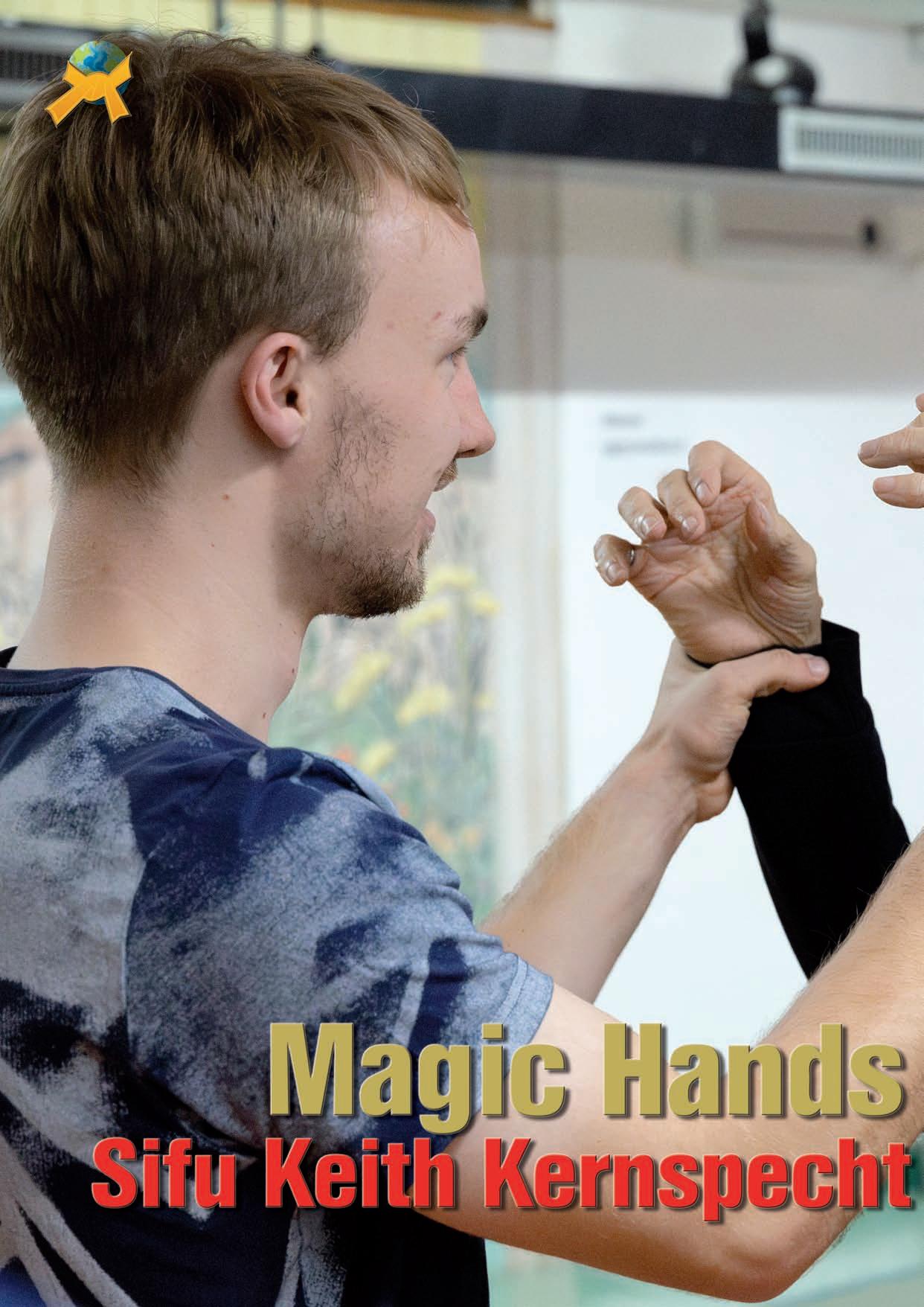

www.graciejiujitsu.eu www.graciejiujitsu.eu
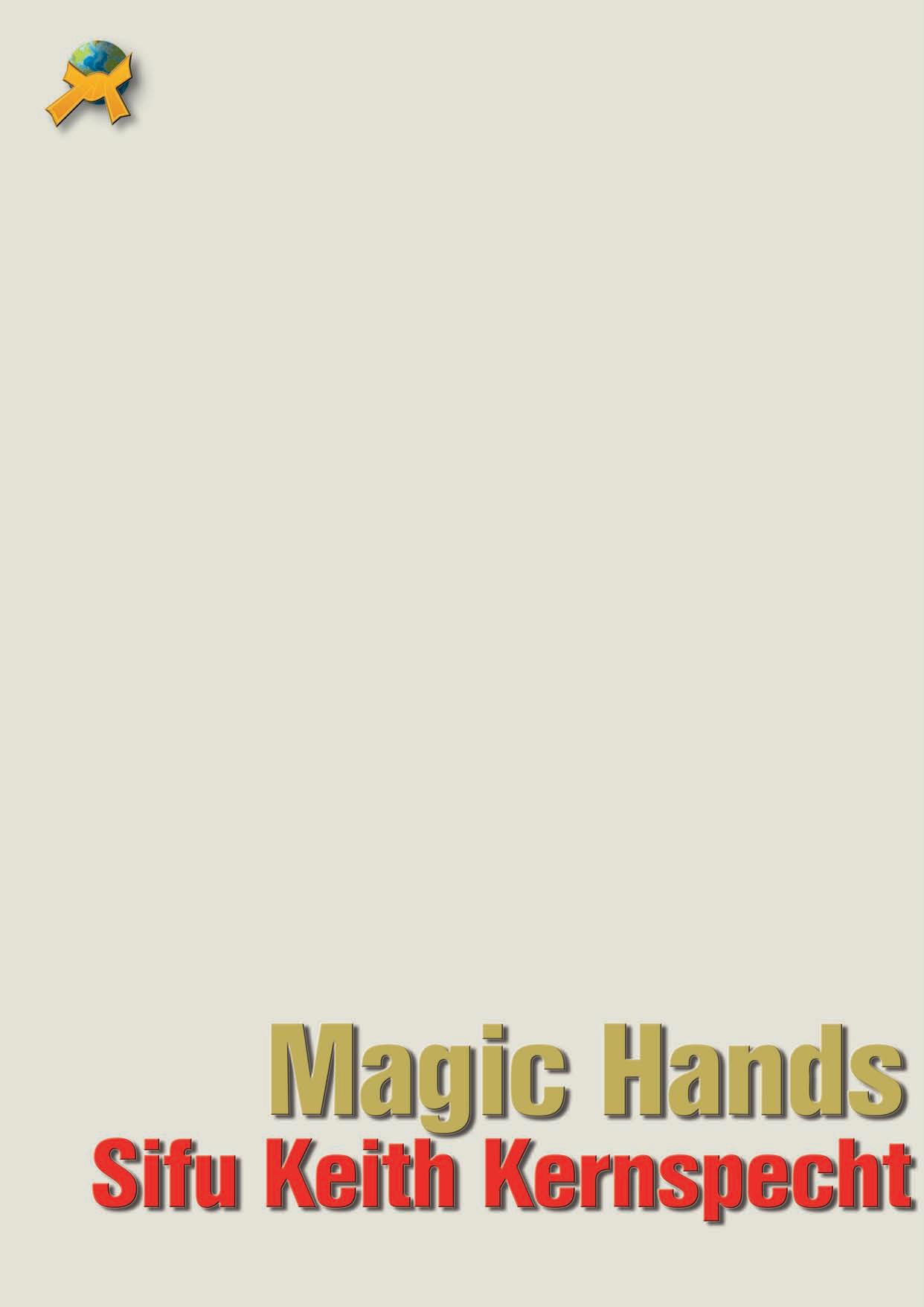
The question that arises for me is whether I need the “Magic Hands” offer at Gracie Concepts.
The request was submitted promptly. During the training session on Gran Canarias, I was asked by some participants what motivated me as a BJJ practitioner to learn Magic Hands from Sifu Kernspecht.
Solid training in striking (punch and kick training) is essential in Gracie Jiu-Jitsu today. It should be noted at this point that the following explanations do not refer to MMA (Mixed Martial Arts). This view is based on the personal assessment that one's own behavior in a self-defense situation is of crucial importance to ensure quick and effective self-defense. In particular, the opponent is to be considered here, since one's own actions are significantly influenced by his behavior.
Therefore, training with Magic Hands proves to be advantageous because it teaches an alternative approach and trains the intuitive movements of the trainee, thereby increasing their effectiveness. Of course, it is not enough to simply take individual elements from the Magic Hands concept and integrate them into your own “game” without reflection. A detailed examination of the content and an open mind towards new ideas are required to ensure successful implementation. This approach requires a great deal of effort, so not everyone will use this method. It should be noted that only those who are willing to take on this challenge will be successful.
In 1995/96, under the supervision of the then Grand Master Pedro Hemetério, the training program for the Gracie Concepts® was defined together with my brother Demetrio and our own older students. We encountered concerns from our students that we intended to redesign “Vacirca” Jiu-Jitsu. It became clear that our audience found it difficult to follow our explanations and that they were not always willing to give something new a chance. Basically, it was not a completely new approach, but rather the need to develop a unified program (or guide) so that we could ultimately test and rank the “external” members, i.e. the students of our representatives in their Dojos.
The focus was on establishing a quality control system under the name “Vacirca Brothers” to protect the reputation of the name. Consequently, the Gracie Concepts® network was established based on the authentic 54-class Gracie/Hemetério method.
Magic Hands are an extremely valuable element of the Gracie concept.
Similarly, Gracie Concepts® Magic Hands can be considered a valuable add-on, as they already are in Wing Tsun. The add-on allows practitioners to become familiar with the concepts of fight logic, biomechanics, and energy flow. These three elements are fundamental to characterizing a defensive system and its practical application. Even if a karateka has excellent kata skills, he or she is limited in their ability to effectively apply them in a fight with the potential challenges of a real fight. This statement can also be applied to the Thai boxer, who trains hard punches and kicks against a punching bag but will not be able to protect himself adequately in an emergency.
In the “Magic Hands” program, the practitioner learns how to use the techniques they have learned to defend themselves against an aggressive attacker without using any force. This type of self-defense is particularly advantageous for people of advanced age, since the goal is not to take blows, but to prevent them from occurring.
In Gracie Jiu-Jitsu, which was passed down from Grand Master Hélio Gracie to my master Pedro Hemetério, the focus was on teaching techniques for self-defense, not on the application of strikes. Professor Pedro Hemetério believed that it was preferable to focus on acquiring the principles of real Gracie Jiu-Jitsu rather than spending time training punches on a bag. The Jiu-Jitsu was thoroughly tested in the “Gracie Laboratory” in the Vale-Tudo fights (Brazilian MMA/Mixed Martial Arts) of the time, from which the knowledge was derived that was finally taught as Gracie Jiu-Jitsu.
Modern Brazilian Jiu-Jitsu training does not correspond to Gracie Jiu-Jitsu in the sense of the Hélio method. Instead, numerous movements, positions and techniques are trained that in many cases originate from Judo, Wrestling, Luta Livre, MMA and similar martial arts. However, these practices do not correspond to the authentic Hélio Gracie system of selfdefense.
“Magic Hands begin with balancing your own body and reorganizing your muscles to develop effective pushing and pulling forces. Then you learn to build a protective shield with circling arms and to deliver targeted blows with your hands that disable your opponent. In the beginning, training is deliberately slow and stationary to learn the correct behavior at the point of contact. After that, you practice footwork and develop customized reactions to surprise attacks. Everyday objects are used against multiple or armed attackers.”
- Grandmaster K. Kernspecht, inventor of Magic Hands

www.graciejiujitsu.eu www.graciejiujitsu.eu


The Gracie’s had an in-depth understanding of the logic of combat long before anyone else, which allowed them to develop an efficient close-combat system. Sifu Kernspecht's understanding of biomechanics is unique. At his age, I don't know of anyone else who has comparable control and is considered a top fighter and expert at the same time. He was able to acquire this knowledge over many years of study and teaching. The latter is the doctrine of energy flow, also a concept of great complexity, which enables the smooth application of techniques. This knowledge is widespread among Jiu-Jitsuka, as energy flow and movement also play a major role in the Gracie system.
I invited Grandmaster Kernspecht to Switzerland in October to introduce the “Magic Hands” to my Gracie Concepts community for the first time. The first live contact with the “Magic Hands” in Zurich was open to all members of the Dojo who were open to new experiences. The event was an excellent opportunity to meet the master in person and to get to know him and his teachings first-hand.
The Wing-Tsun and Magic Hands community was surprised and saddened.
It was with great sadness that Sifu (Grandmaster) Keith Kernspecht passed away on November 25, 2024. It was an extraordinary pleasure for me to participate in the realization of the vision of the inner Wing Tsun, the “Magic Hands of Kan-Ki-Fu”, and to gain a wealth of knowledge as a result. I will hold the knowledge I have acquired in high regard and apply it in my teaching to the best of my knowledge and belief. This is extraordinarily valuable knowledge that can only be imparted by a true grandmaster.
His knowledge and spirit live on in all practitioners of Wing Tsun. His work commits to us all, regardless of which Wing Chun/Wing Tsun line we belong to. There is no question that this grandmaster has left us all a valuable and true legacy. In these difficult times, our deepest sympathy goes out to his family.
Sifu, we miss you.



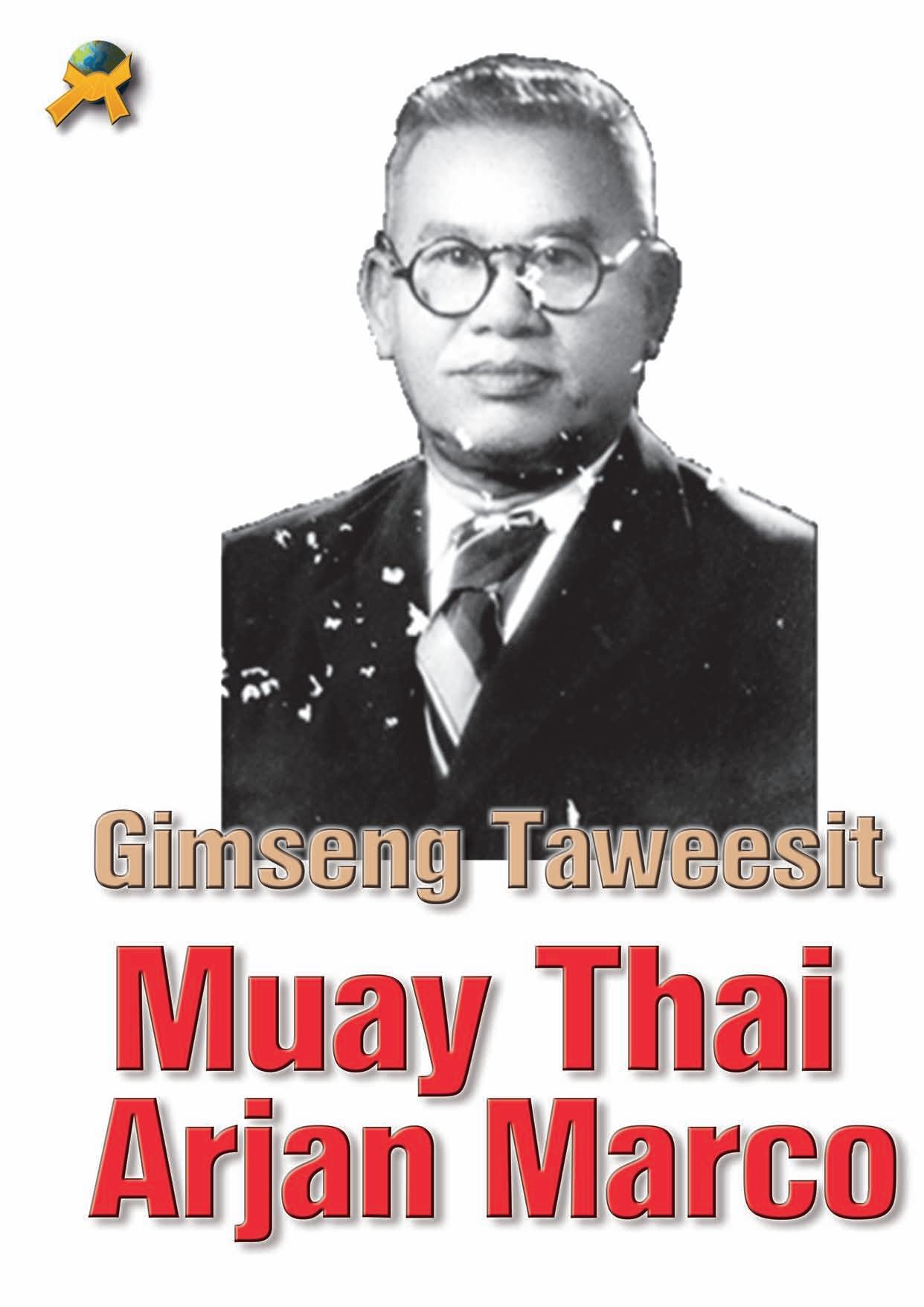
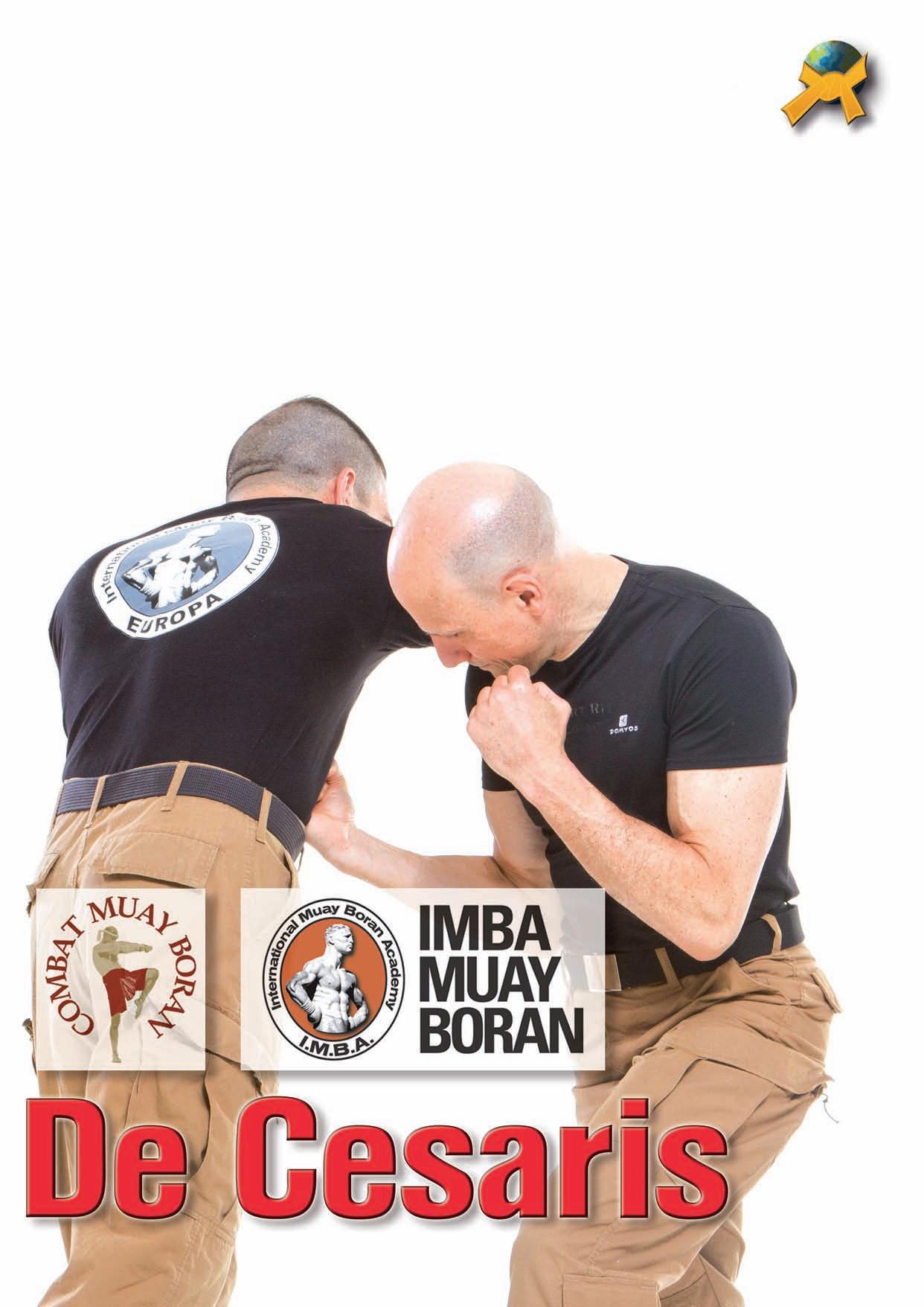
Muay Taweesit, Western Boxing and the development of modern Muay Thai.
Master Kimseng Taweesit was one of the most prominent figures of Muay in modern times. Born in Bangkok in 1890 he was sent to Singapore by his parents to attend school there when he was 14 years old. Singapore in 1905 was a British Crown colony, ruled by a governor under the direct supervision of the British Colonial Office in London. An important trading port since 14th century, Singapore had become a melting pot of different cultures during the years of young Kimseng’s stay. In fact, as history goes, while attending school there, Master Taweesit learned Japanese Ju Jitsu and Kodokan Judo, Western Fencing, one of the many local styles of Silat and a family style of Chinese Kung Fu.


All of these experiences contributed to his growth as an all-round martial artist and in later times helped him to create what we call today Muay Taweesit, probably the first modern-traditional style of Muay. However, the experience that influenced him the most was, without any doubt, the training he received from Mr. Baker in western Boxing. We don’t know much about Mr. Baker: he was a bake-house owner who possessed a vast knowledge of the Sweet Science of Self Defence (as Boxing was labelled at the time). What we know for sure is that Kimseng was trained by Mr. Baker in both the practical skills and the theoretical aspects of the Noble Art. Combining this knowledge with the traditional Muay techniques he learned from Khru Kiao, Master Taweesit went on to become one of the most successful Thai Boxing trainers since 1917 when he founded his own Muay camp in Bangkok.
His fighters dominated the fight game in Thailand in the crucial years of the birth of the “new style” of Muay. In fact, in 1929 (officially due to the tragic death of Jia Khackamen during his fight with Phae Liangprasert) the old style of Kaard Cheuk fighting (no-holds-barred combat with hands wrapped in raw cotton ropes) was abandoned. The rules of International Boxing as well as its techniques were integrated into Muay. This process originated a new hybrid combat sport, that combined the old Siamese traditions of unarmed fighting with the western style of fist-fighting. In fact, Western Boxing was introduced in Asia in the early 1900s. Boxing in Korea began in 1912, when the country was still under Japanese colonial rule. Consequently, it reached Japan in 1920. The first Asian boxer to win a world title was Pancho Villa, a flyweight from the Philippines, in 1923. As mentioned, Western Boxing regulated according to Queensberry rules reached Thailand around the same time. Master Taweesit was ahead of time and probably his knowledge of both worlds (Muay Thai and Western Boxing) and his modern vision of fighting contributed heavily to the creation of Muay Thai as we know it today. Therefore, we can say that the principles and techniques that Mr. Baker taught to young Kimseng proved to be a fundamental skill that helped him create a very effective ring fighting style. The questions that arise are: what kind of Western Boxing did Mr. Baker taught Master Taweesit? Was that style of Boxing similar to today’s modern sport? What was Boxing like in 1904?
In order to answer these questions we shall analyse the technical characteristics of the most prominent fighters of the beginning of the 20th century, their styles and the innovative skills some of them introduced into the fight game. Similarly to Muay, which in 1904 was about to face a revolutionary period of its evolution, so Western Boxing was starting its New Era of development. Bare Knuckles Boxing had been abandoned just a few years before (the last official Bare Knuckles Boxing heavyweight championship fight between J.L Sullivan and J. Kilrain took place in 1889) and fighting according to Queensbury Rules (that introduced the compulsory use of gloves) had become the standard. Boxing had just started a dramatic technical change: the bare-knuckles fighters gave way to the boxers. Some of the most influential boxers who displayed time and again their skills at the beginning of the 20th century and who contributed to shape the new-born Boxing are, in my opinion, the following:

1.Jack Johnson Heavyweight He was undoubtedly the King of counter-fighting. One of the best of all time.
2.Jim Driscoll Featherweight
The Master of straight hitting. He has been the inspiration of many a fighters who followed his steps. Among them also the famous Bruce Lee.

3.Bob Fitzsimmons Heavyweight He was renowned for his explosive power and for his aggressive footwork (Double Shift).

4.Charles Kid McCoy
Middleweight He possessed smart ring-craft and developed a special technique that he used to call “corkscrew punch”
5.Young Griffo
Featherweight
Undisputed Master of defense. He was a shadow in the ring, an artist of dodging and sidestepping.

6.Sam Langford
Heavyweight
A fearsome puncher, the power he expressed in his strikes was due (in his words) to his good application of the hip twists
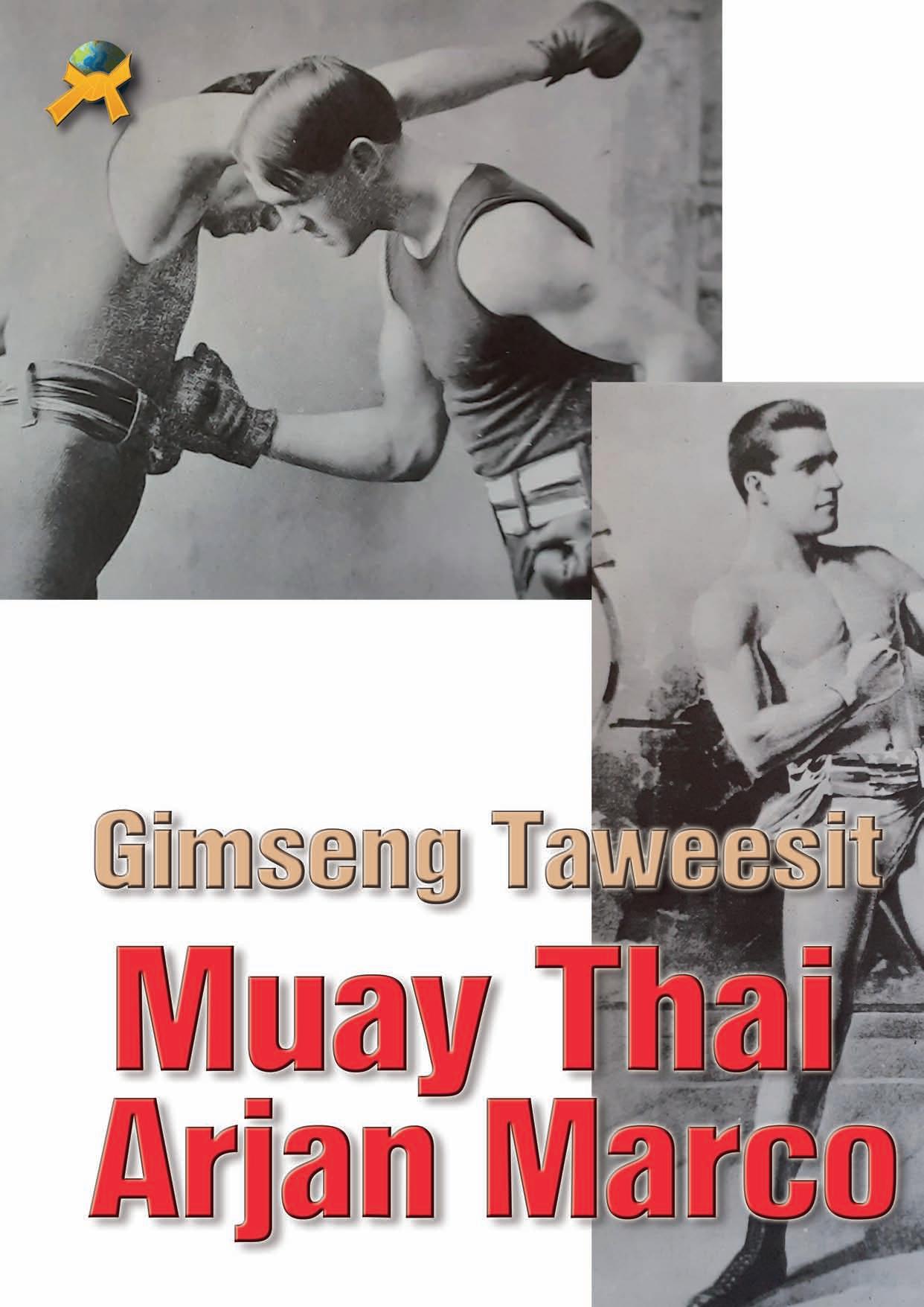
7.Terry McGovern
Featherweight Nicknamed Terrible Terry. He was on of hardest body puncher. Feared by his opponents.
8.James J. Corbett
Heavyweight He is still considered one of the great stylists of this sport. His left short hook was considered the best in the game.
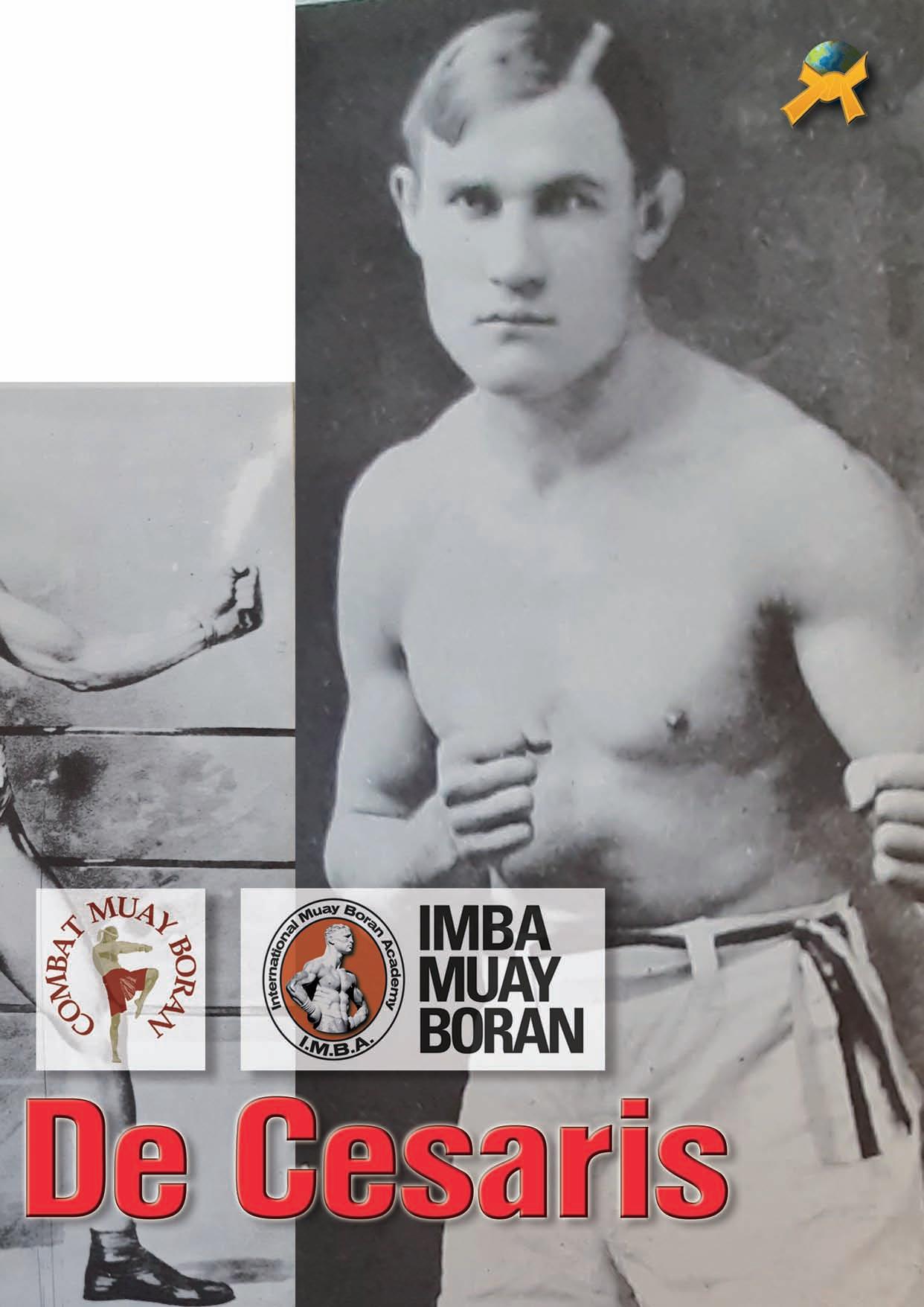
9.Frank Klaus
Middleweight
An aggressive slugger, without any doubt one of the best in-fighters of his time

10.Mike Donovan Middleweight
The professor of boxing. Great fighter and, after his retirement from prize fighting, also a great coach

11.Joe Gans Lightweight
Nicknamed the Old Master for his flawless style. One of the all-time great fighters
12.Stanley Ketchel Middleweight
Aggressive, fierce and powerful (nicknamed the Michigan Assassin)

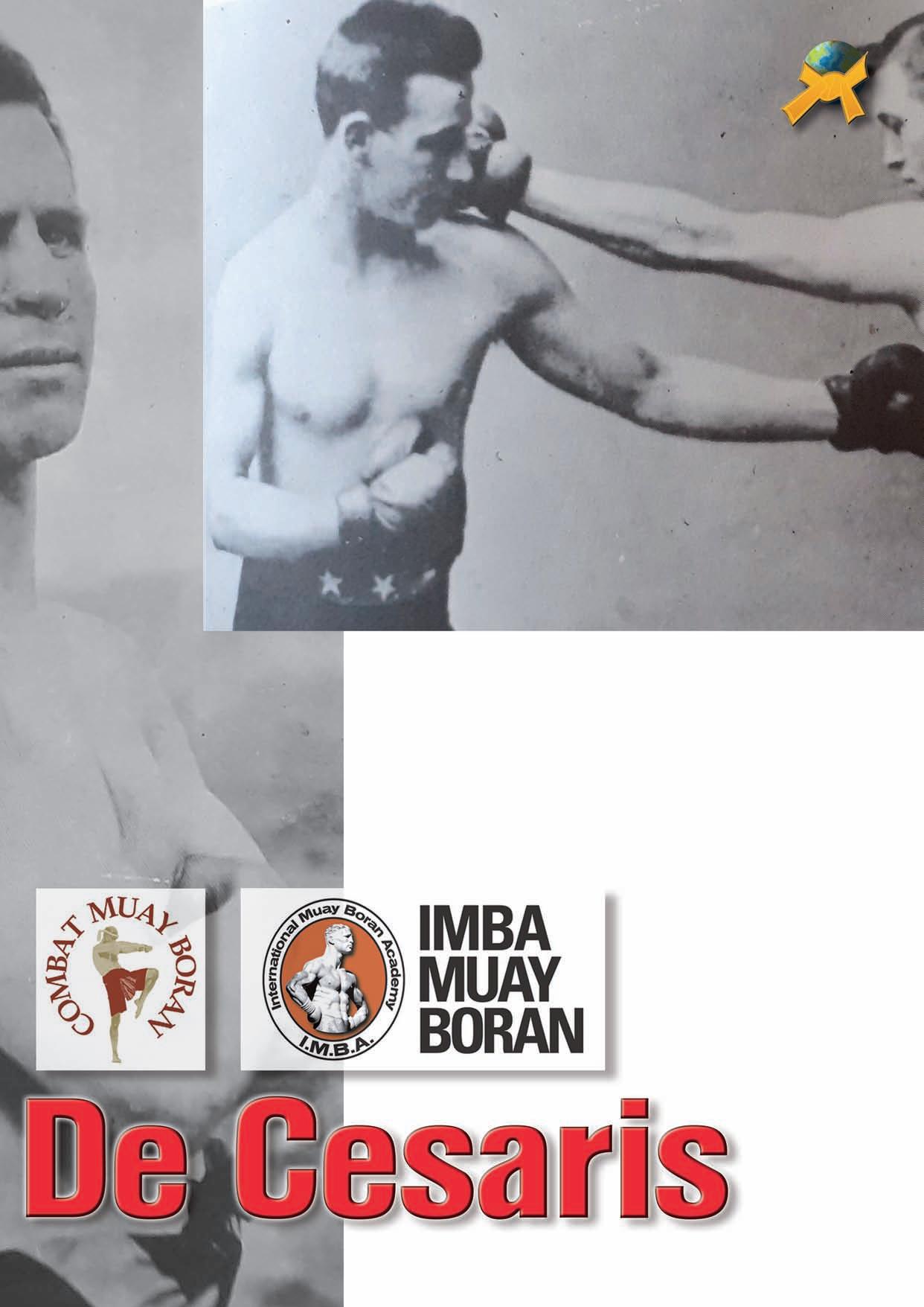
13.Tommy Burns Heavyweight
Hard and durable short range fighter. One of the smallest heavyweight champions (only 5’7’’).
14.Battling Nelson Lightweight
Combative and unstoppable. Nicknamed the Durable Dane for his incredible toughness (fought and won contests that lasted more than 40 rounds)
15.Tommy Ryan Middleweight
Defeated all challengers to his middleweight crown

16.Philadelphia Jack O'BrienLight Heavyweight Technical fighter who fought 185 matches and also knocked out the great Bob Fitzimmons.

All of these champions are widely recognised as great fighters: their unique technical characteristics can be considered fundamental for helping to shape the type of boxing that Mr. Baker had learned. The skills he possessed as an experienced boxing coach at the beginning of the 20th century derived from the innovations introduced by those gifted boxers. These were the skills that most probably Mr. Baker transferred to Master Taweesit during his stay in Singapore and that were later introduced into Muay in order to mold modern Thai Boxing. In the next articles of this series we’ll analyse some of the most intriguing features of these great champions’ styles, in detail.


"... Fifty canarians of the best swimmers to be found, each equipped with a cabarco and a dragon tree tablachina". In this way, indigenous Canary Islanders were used as elite troops in the assault on Tenochtitlan, Mexico, early 16th century. This new work of the Federación de Lucha del Garrote Canario, focuses on the traditional Tolete, its characteristic grip with one hand in the center, the guards (right, troquiada, ...) and the basic techniques (correderas, vueltas, lazos, molinetes...), as well as its application in combat combinations. In the traditional Tolete canario the objective is to break the armed hand of the attacker and to finish off in a forceful way with a definitive blow. There are no controls or reductions. The opposite happens with its police application, where the proportionality to the aggression and even the aggressor's own integrity is protected by law. The military application does not have these limitations, but its use as defense by the military police does. The characteristics of the Tactical Operational Tolete for the operations of civilian and military police forces favor these aspects as it is an extremely versatile implement. Its dimensions and central grip with effective wrist turns facilitate rapid and repeated striking movements to the armed hand, enabling both its cancellation and the consequent control for an effective reduction, thus preserving the life of the agent and eliminating the threat with the minimum of injury.
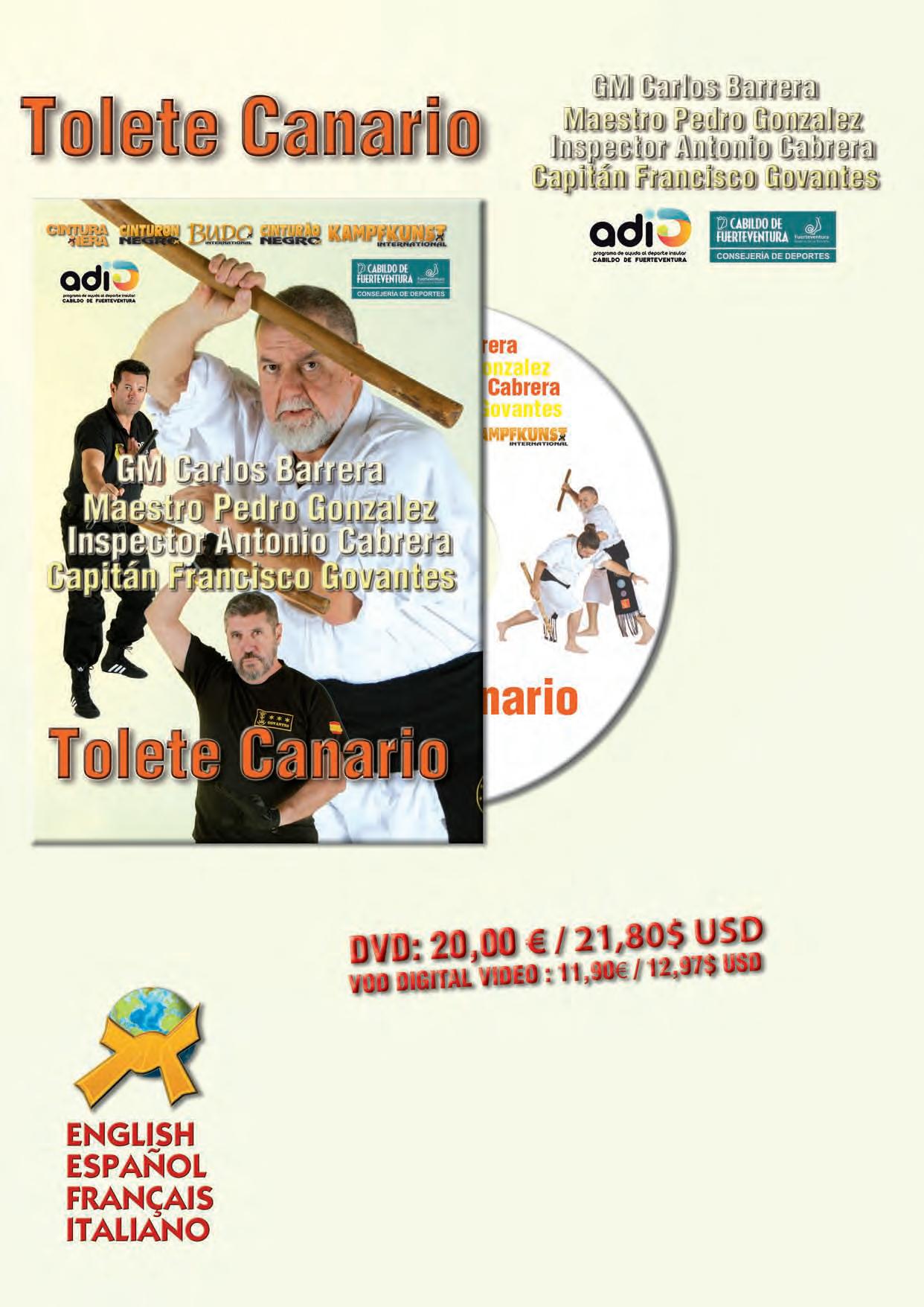

All DVDs, wichi is produced by Budo International, si provided and alone in the formats DVD-5 or MPEG-2, in VCD, DivX or the like is however neves offered with a special holograma sticker. Besides our DVD is characteristed coverings by the hig quality in pressure and material. If this DVD and/or the DVD covering do not corespond to the requirements specified above, it concerns illegal pirat copy.
Sifu Paolo Cangelosi presents a true pearl of the traditional programs of the Hung Gar style, according to the lineage of the Grand Master and hero Wong Fei Hung, considered the father of modern Hung Gar. It is the form “Loon Ying - the Shadow of the Dragon", extracted from the forms Ng Ying Kune and Sap Ying Kune. The beginning of this set involves the study of Dragon techniques, through a very sophisticated and complex system based on psychocorporal techniques, breathing, dynamic tension of the tendon and muscle fasciae, isotonic techniques flanked by emissions of guttural sounds that refer to the emotions and moods of the individual, as well as vibrations that correspond to the energetic tone of the vital organs. All this has a great association with the canons of traditional Chinese medicine and technically in its practice can be seen expressed in the form of the dragon where we will find a succession of combinations of sounds and movements that create this energetic and emotional dance in a chronological order to free the human being of his mental blockages, his physical and psychological weakness and reactivate the vital functions of the organs and viscera connected to each other. This is the main essence of this wonderful exercise that has taken its place in the most important forms of the Hung Gar style. You will surely get the most out of it by going on to study the "Tit Sin Kune" form, where you will specialize and complete this cultural technical panorama, treasure of the great studies carried out and transmitted by the great master Tit Kiu San.

All DVDs, wichi is produced by Budo International, si provided and alone in the formats DVD-5 or MPEG-2, in VCD, DivX or the like is however neves offered with a special holograma sticker. Besides our DVD is characteristed coverings by the hig quality in pressure and material. If this DVD and/or the DVD covering do not corespond to the requirements specified above, it concerns illegal pirat copy.

I reprimanded my soul seven times!
The first time: when I attempted to exalt myself by exploiting the weak.
The second time: when I feigned a limp before those who were crippled.
The third time: when given a chance, I elected the easy rather than the difficult.
The fourth time: when I made a mistake I consoled myself with the mistakes of others.
The fifth time: when I was docile because of fear and then claimed to be strong in patience.
The sixth time: when I held my garments upraised to avoid the mud of life.
The seventh time: when I stood in hymnal to God and considered the singing a virtue.
Kahlil Gibran
One of my favorite spiritual writings comes from the Lebanese poet, philosopher, and artist Kahlil Gibran. In his timeless poem, “Seven Reprimands,” Gibran offers us profound insights into human virtue through the lens of self-examination. In these few, potent lines, he urges us to hold a mirror to our souls and confront the moments of weakness and selfishness we often ignore. This teaching resonates deeply with the ethos of the warrior’s path—a path that transcends combat and embraces life itself as a proving ground for strength, honor, integrity, loyalty, courage, but most of all humility.
A warrior, in the truest sense, is not merely one who wields a weapon or engages in warlike activities. Instead, a warrior is a person who faces the battles of existence with unwavering resolve and moral clarity. They are not defined by the armor they wear or the victories they achieve, but by the virtues they embody. The warrior’s journey is one of constant selfreflection and growth, a relentless quest to refine one’s character.

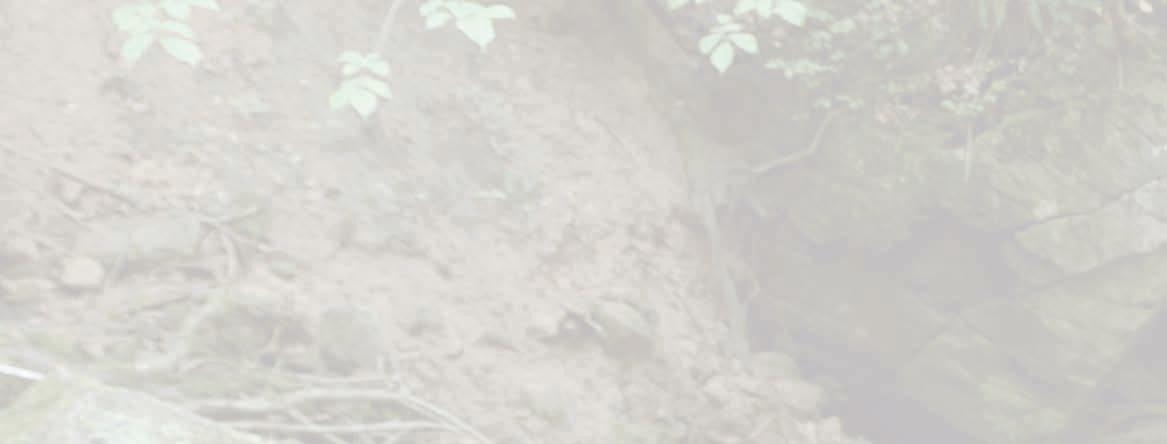
This path is neither easy nor intended to be. It calls upon us to confront the complexities of our failings and contradictions with honesty and humility. It challenges us to hold ourselves accountable for our actions and decisions, to embrace the discomfort of self-reflection, and to strive toward the highest ideals of our humanity. This journey demands that we carefully examine the impact of our choices, recognize where we have fallen short of our values, and summon the courage to rise above those shortcomings. It is a path that requires the shedding of self-centeredness, ego, and pride—those barriers that prevent us from living authentically and connecting deeply with others. Only by relinquishing these burdens can we step into a more compassionate and purpose-driven existence.
Let us, then, examine ourselves:
•How many times have we taken the easy way out and then complimented ourselves by accepting the praise of others?
It is so tempting to choose the path of least resistance and bask in the approval of others, even when we know we have not earned it. We deceive ourselves into believing we are deserving of accolades when, in truth, we have shirked the true work. A warrior does not seek hollow praise but embraces the struggle that leads to genuine achievement.
•How many times have we played sick to avoid responsibility or work?
Avoidance is a natural human tendency, but it is also a form of self-betrayal. By dodging our responsibilities, we not only let others down but also undermine our own growth. A warrior understands that every challenge—no matter how small— is an opportunity to prove one’s mettle.



“True virtue lies in doing the right thing for its own sake, not for the recognition it brings”
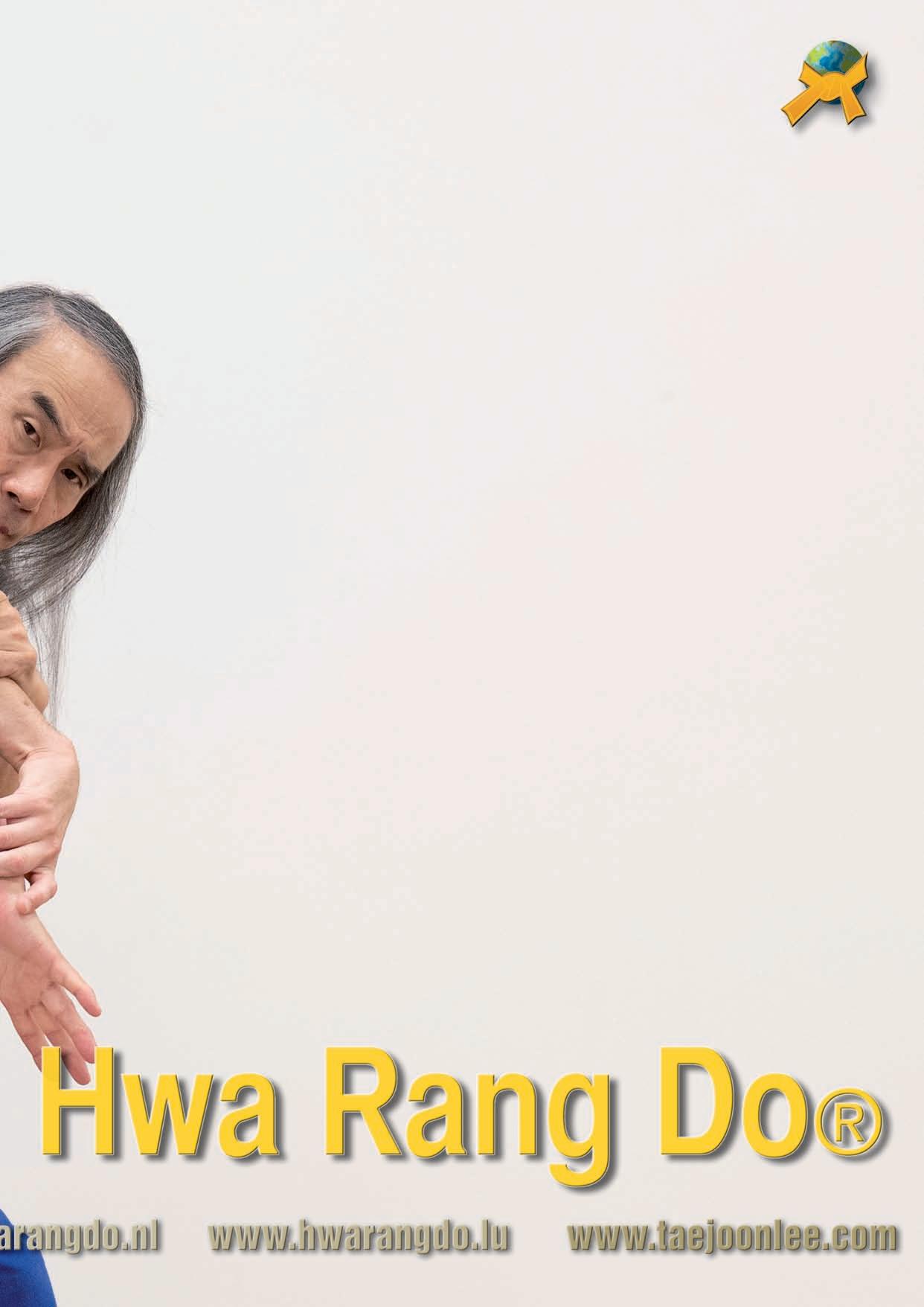
•How many times have we opted to pick up the lightest box when helping our friends move?
These small acts of convenience speak volumes about our character. A warrior chooses to bear the heavier burden, not for recognition, but because they know it is the right thing to do.
•How many times have we stayed quiet, refraining from the truth to avoid conflict?
Silence can be a form of complicity. When we fail to speak up for what is right or confront uncomfortable truths, we sacrifice integrity for comfort. A warrior values truth over harmony, understanding that true peace can only be built on a foundation of honesty and courage.
•How many times have we blamed others for our mistakes?
Accountability is the cornerstone of personal growth and transformation. A true warrior embraces their failures, owning them fully and using them as steppingstones to greater wisdom and resilience. They resist the temptation to shift the burden of blame onto others, understanding that doing so not only diminishes their integrity but also relinquishes their power to effect meaningful change. By taking responsibility for their actions, they claim the authority to learn, grow, and alter their trajectory toward self-betterment. In this way, accountability becomes not a weight, but a source of strength and liberation.
•How many times have we quit when things got tougher and then consoled ourselves by pointing the finger at others?
Life’s greatest rewards lie on the far side of difficulty. A warrior perseveres through hardship, recognizing that adversity is not an insurmountable barrier but a crucible in which strength and character are forged.
•How many times have we done something we were supposed to do and looked for praise?
True virtue lies in doing the right thing for its own sake, not for the recognition it brings. A warrior’s actions are motivated by principle, not ego or praise.
•How many times have we taken credit for something we did not do?
Honesty and humility are hallmarks of the warrior’s path. To claim another’s work as our own is to diminish both ourselves and them.
•How many times have we strutted our fortune in front of those who are less fortunate?
Compassion and gratitude are essential virtues. A warrior understands that material wealth is fleeting and that true wealth lies in the richness of the spirit.
•How many times have we taken things for granted and deluded ourselves by saying we deserve better?
Entitlement is the enemy of gratitude. A warrior approaches life with humility, recognizing that every blessing is a gift and every challenge an opportunity for growth.

The journey of the warrior is a timeless path of personal and spiritual development. From ancient cultures to modern spiritual movements, the concept of the warrior transcends physical battle. It represents an inner struggle, the pursuit of virtue, and the continual striving to reach higher states of being. The Hwarang Warriors, a group of elite warriors in ancient Korea, embodied these ideals, blending martial excellence with spiritual wisdom and integrity. This article explores the intersection between the themes in Kahlil Gibran's Seven Reprimands and the ethos of the Hwarang, illustrating how personal flaws and mistakes, as described by Gibran, are opportunities for profound spiritual growth.
In The Seven Reprimands, Gibran outlines personal transgressions that reflect the inherent flaws of the human condition. Each reprimand is a step in the journey toward self-awareness, encouraging the individual to confront their weaknesses and transform them. Gibran’s reprimands serve as powerful teachings that can guide the aspirant through moments of failure and toward spiritual enlightenment, a closer connection to God, the Devine.
The First Reprimand: "When I attempted to exalt myself by exploiting the weak."
•This reprimand speaks to the temptation of gaining power through the oppression of others. In the context of spiritual growth, it emphasizes the importance of humility and the recognition of the interconnectedness of all people.
•Insight from the Hwarang Warriors: The Hwarang upheld the concept of wimu (justice and honor), rejecting the exploitation of others. They understood that true strength lies in protecting the weak and embodying selflessness.
The Second Reprimand: "When I feigned a limp before those who were crippled."
•This reprimand reflects the falsehood of pretending to be something one is not, especially in the face of those who are suffering. Gibran’s teaching calls for authenticity and the recognition that everyone has their own struggles which is the foundation of compassion and empathy.
•Warrior’s Path: The Hwarang emphasized the importance of cheong (truth) in their conduct. Warriors were not allowed to feign weakness or exploit their position. They were expected to show empathy for the vulnerable while remaining true to their capabilities.


The Third Reprimand: "When given a chance, I elected the easy rather than the difficult."
•In this reprimand, Gibran explores the human tendency to seek comfort over challenge. The easy path may lead to temporary satisfaction, but it rarely leads to true growth. The path of a warrior is one of discipline, hard work, and overcoming obstacles.
•Spiritual Growth: True spiritual growth often requires facing difficulty with courage and determination. Just as the Hwarang warriors trained rigorously to become masterful in their arts, so too must individuals on the path of discovering the “Devine”, the Truth, must embrace the challenge.
•Wisdom from the Hwarang: The Hwarang's training was not about seeking comfort but mastering one’s mind, body, and spirit. The discipline they embodied required a commitment to constant improvement.
The Fourth Reprimand: "When I made a mistake, I consoled myself with the mistakes of others."
•This reprimand reflects the human tendency to find comfort in shared imperfection, easing guilt by recognizing that mistakes are universal. It promotes self-acceptance by deflecting accountability as well as demeaning the value of others.
•Warrior’s Path: A true warrior takes full responsibility for their failings, neither blaming others nor seeking solace in the imperfections of those around them. The Hwarang were guided by a profound sense of honor, taught to confront their mistakes with humility and dedicate themselves to continuous self-improvement.
The Fifth Reprimand: "When I was docile because of fear and then claimed to be strong in patience."
•Here, Gibran critiques the false sense of strength that comes from passivity born of fear. True strength is not simply about enduring passively but is about having the courage to act when necessary, in alignment with one’s inner truth.
•Hwarang’s Wisdom: The warriors of the Hwarang order were trained not to yield to fear. They were taught that true strength comes from patience and fortitude, which is not passive but an active endurance of hardship with resolve.
•Spiritual Insight: Spiritual strength is not about avoiding challenges but facing them with confidence and resolve. True patience is an active form of strength, rooted in wisdom.
The Sixth Reprimand: "When I held my garments upraised to avoid the mud of life."
•This reprimand deals with the desire to remain untouched by the discomforts of life, avoiding the messiness of reality. Gibran suggests that true virtue comes from engaging with the world, even in its roughest forms.
•Hwarang’s Ethos: The Hwarang warriors were not above the hardships of life. They understood that strength comes from embracing the full spectrum of human experience, both noble and humble.
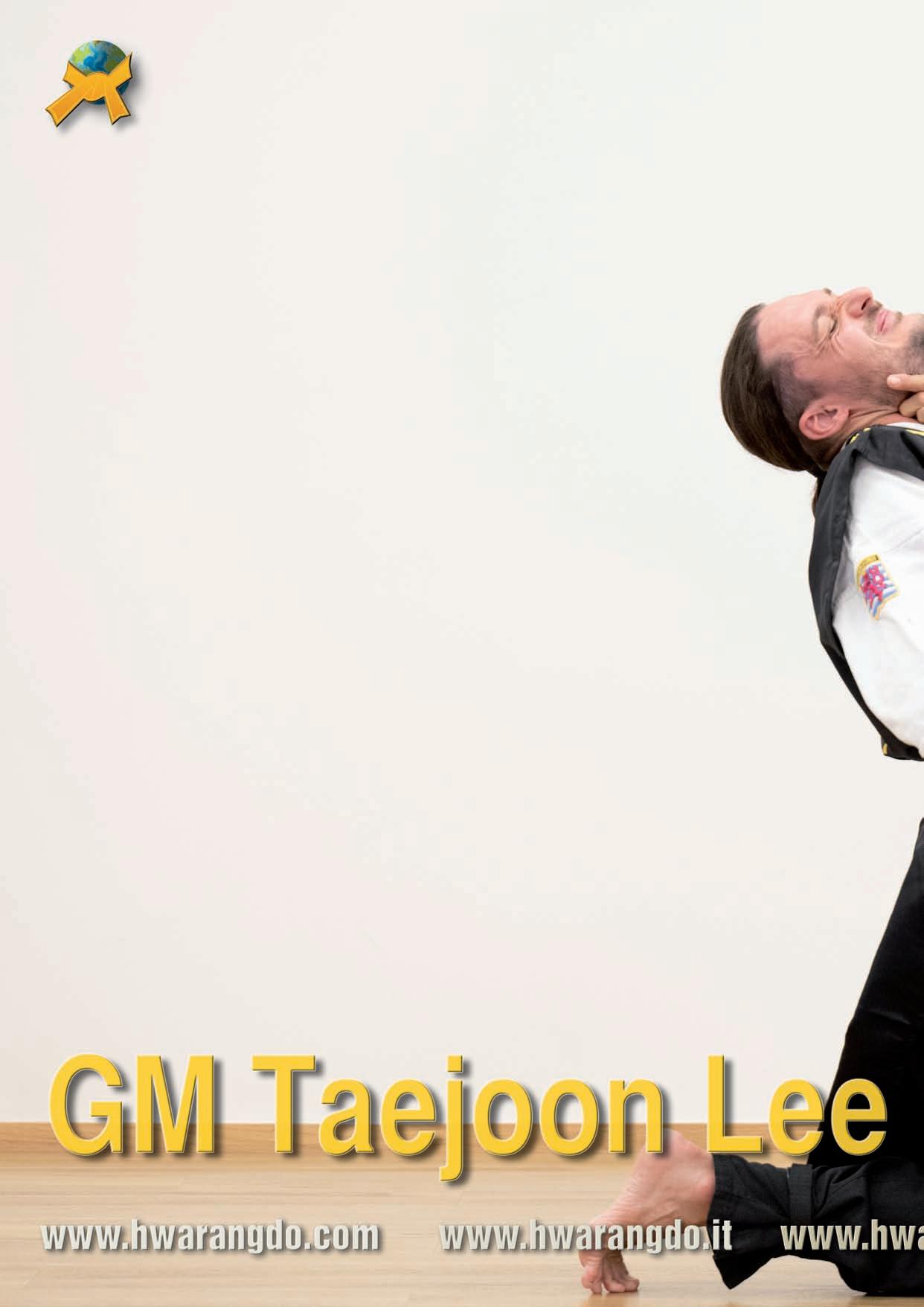
“A true warrior takes full responsibility for their failings, neither blaming others nor seeking solace in the imperfections of those around them.”
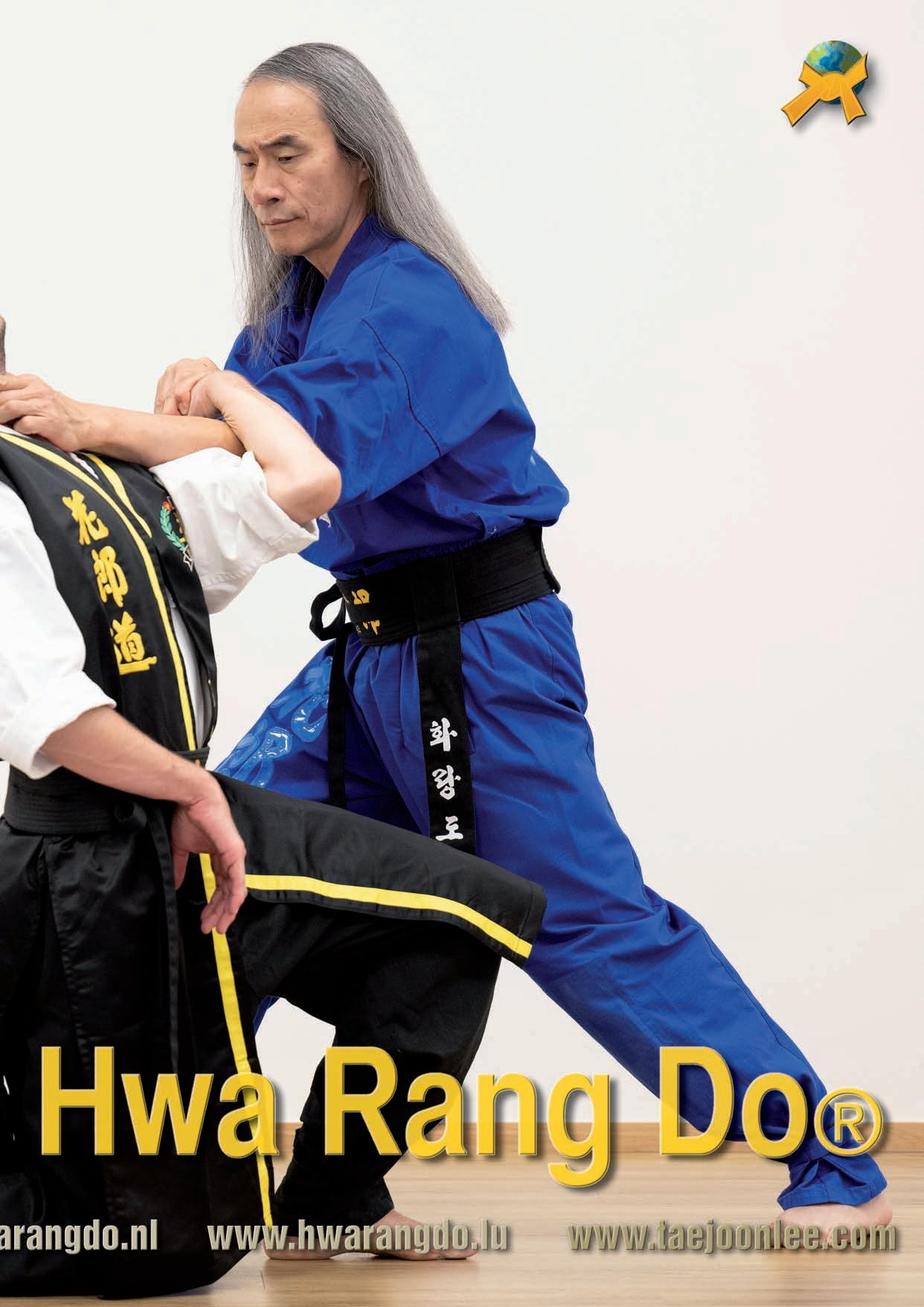


•Spiritual Growth: This reprimand is a reminder that the spiritual path does not involve escaping the struggles of life but engaging with them fully, without distancing oneself from the realities of the human experience.
The Seventh Reprimand: "When I stood in hymnal to God and considered the singing a virtue."
•Gibran critiques the superficiality of ritual and ceremony when they are performed without true devotion. Spirituality is not about outward displays but about genuine inner transformation.
•Warrior’s Path: The Hwarang’s spirituality was not about performing rituals for show but about embodying values such as loyalty, integrity, and justice in their everyday lives.
•Spiritual Insight: Rituals and ceremonies can be meaningful if they are an expression of one’s inner truth. However, they should not become a substitute for actual spiritual practice or self-transformation.
Bridging the Warrior's Path and Gibran’s Teachings
•The Integration of Spirituality and Strength: Both the Hwarang Warriors and Gibran’s Seven Reprimands present a vision of personal and spiritual growth that calls for deep self-awareness, humility, and an ongoing commitment to transformation.
•The Inner Warrior: The inner warrior must engage with the world’s challenges, grow through hardship, and avoid the temptation of superficial virtue. True strength comes not from avoiding difficulties but from embracing them as opportunities for growth.
We have all done these things before, and some of us still do, perhaps more often than we’d care to admit. We get caught up in the cycle of blaming, complaining, or waiting for things to magically improve, forgetting that life is never meant to be a smooth ride. It is, instead, a journey filled with challenges, setbacks, and moments of doubt. Most things of true value demand hard work, sacrifice, and perseverance. It is in the pursuit of these endeavors that we discover not only what we are capable of, but who we truly are.
We often forget, too, that nobody owes us anything—not the world, not others, not even ourselves. And yet, we can be quick to point fingers when things don’t go the way we expect. But the truth is, no one can make us do anything. We are the architects of our own destiny, and it is our choices—every small and large decision—that shape the lives we lead. The power to change our circumstances, to evolve, to grow into better versions of ourselves lies solely within us. If we want transformation, we must first embrace the responsibility for it.
So, no matter what happens—whether it’s the good, the bad, or the ugly—we must learn to accept it all. Life will never unfold according to our ideal script. There will be moments of joy, moments of hardship, and moments of despair. But in the end, it is not the events that define us, but our response to them. And more importantly, it is the conviction within ourselves that no man or woman can ever truly pass judgment on our soul. Our worth, our essence, is far too complex to be reduced by the opinions of others.
It is the strength of our spirit and the vitality with which we live that determine our immortality, bestowed by the ultimate judgment of God. Not through physical endurance, but through the enduring legacy of our character and actions—how they echo in the lives of others and across time. The impact we leave, the courage we summon in adversity, and the love we selflessly give—these are the forces that transcend the boundaries of time and space.
True immortality lies in the humility to accept our imperfect, fallen nature and to recognize the frailty of humanity. This humility, the highest of virtues, brings us closer to the Infinite and the Divine, grounding us in grace and purpose.
In the end, it is our spirit—unwavering and eternal—that endures. Let us rise to life’s challenges with resilience and grace, for it is in these moments that we discover our true power. And through this discovery, we find the essence of immortality.
L'Okichitaw est un art martial indigène basé sur les méthodes de combat des guerriers des nations indiennes Assiniboine et Cri des Plaines. Dans cette compilation, le chef George J. Lépine nous initie à l'utilisation de trois des armes les plus redoutées des guerriers indiens : la massue Gunstock, le Tomahawk et le couteau. Le Gunstock Warclub était l'une des armes d'impact les plus puissantes, car en plus de frapper avec une force incroyable, il pouvait aussi couper ou poignarder. En raison de sa ressemblance avec un fusil, le Gunstock Warclub était également utilisé pour faire croire à l'ennemi qu'il était en possession d'armes à feu. Le Tomahawk de combat était l'une des armes les plus prisées des guerriers, un instrument que l'histoire a inscrit dans nos esprits comme étant agressif et impitoyable. Le chef Lépine explique en détail les concepts de base du Tomahawk, l'entraînement, le lancer, les 20 mouvements, les applications de défense et d'attaque, et les contre-techniques. Enfin, nous découvrirons la méthode traditionnelle d'entraînement au maniement du couteau « Mokiman », seul, en profitant de ce que la nature nous offre, les arbres, le sol, l'eau, ... afin de développer une mécanique corporelle optimale pour offrir le maximum d'impact à l'adversaire. Avec ce travail, Okichitaw continue d'honorer les traditions indigènes pour s'assurer non seulement que ces connaissances demeurent, mais aussi que nous continuons à nous déplacer de la même manière que nos ancêtres.


All DVDs, wichi is produced by Budo International, si provided and alone in the formats DVD-5 or MPEG-2, in VCD, DivX or the like is however neves offered with a special holograma sticker. Besides our DVD is characteristed coverings by the hig quality in pressure and material. If this DVD and/or the DVD covering do not corespond to the requirements specified above, it concerns illegal pirat copy.
!9)#J8-/)8#,-1&167#*.;,"171#(.-E#.6#,)&7."#/)&8-;)6F'# :)";1/#/0-)6F#8#(.-E&+.,#87#>8&71-#K.+6#>8*+8/.L&# 4KK#!*8/1;3#)6#M1N8&'#OP!G#P78-7)6F#:-.;# 1N7-1;1"3#&);,"1#;.91;167&'#?-.:1&&.-#J8-/)8# &+.(&#)6#/178)"#86/#)6#8#,-.F-1&&)91#(83# 98-).0&#;17+./&#.:#/)&8-;)6F#8F8)6&7#,)&7."# 7+-187&#)6#;863#/)::1-167#&)7087).6&'#,)&7."# :-.;#7+1#:-.67'#:-.;#21+)6/'#:-.;#7+1# &)/1'#:-.;#7+1#E611&#.-#1916#(+)"1# /-)9)6F#.0-#*8-G#Q1#()""#&11#7+1#*"8&&)*# RNS#86/#)7b-)867&'#7+1#&,..6'#7+1# R48&128""#C+.E1S'#7+1#8&&8&&)6'#7+1# ;8F)*)86'#GGG#8""#.:#7+1;#91-3#&);,"1# ;.91;167&1/#.6#7+1#P?@C# *.6*1,7#TP1*0-1'#?.&)7).6'#@::1*7'# $)&786*1U'#86/#.:#*.0-&1'#*.;2)61/# ()7+#*"8&&)*#1"1;167V/# 71*+6)H01&#.:#4-8V)")86#K)0#K)7&0# T!-;28-'#+18/".*E'#"191-&'#&(11,&'# 17*UG#Q1#;0&7#,"83#()7+#7+1# ;.91;167&'#7-3#8""#&)7087).6V/# E6.(#+.(#7.#8/W0&7#.0-#2./3'#21*80&1# )6#7+1#&7-117#6.7+)6F#)&#(-)7716G


!""#$%$&'#()*+)#)&#,-./0*1/#23#40/.# 5671-687).68"'#&)#,-.9)/1/#86/#8".61#)6#7+1# :.-;87&#$%$<=#.-#>?@A<B'#)6#%C$'#$)9D# .-#7+1#")E1#)&#+.(191-#6191&#.::1-1/#()7+# 8#&,1*)8"#+.".F-8;8#&7)*E1-G#41&)/1&#.0-# $%$#)&#*+8-8*71-)&71/#*.91-)6F#7+1# +)F#H08")73#)6#,-1&&0-1#86/#;871-)8"G#5:# 7+)&#$%$#86/I.-#7+1#$%$#*.91-)6F#/.#6.7# *.-1&,.6/#7.#7+1#-1H0)-1;167&#&,1*):)1/# 82.91'#)7#*.6*1-6&#)""1F8"#,)-87#*.,3G

«¡Alla
Galeota!»
As everyone knows by now, the knife can be held in two ways: with a straight handle or with an inverted handle. In the former the blade sticks out from the side of the thumb, in the latter from the side of the little finger. These two positions in the U.S. are named after the metaphorical hammer grip, hammer grip or ice pick grip (an ice pick used to chip frozen slabs). Less well known are the names: mediterranean for the former and galley for the latter.
The name Mediterranean grip emphasizes the use of the knife as a practice of short fencing, that is, with a weapon considerably smaller than the sword whose strategies it nevertheless follows, as far as possible. The galley name attributed instead to the inverted knife suggests much more. In fact, it seems that the leading experts in the inverted-hilt system came from galleys where, because of confined spaces, it was more effective to use the weapon by holding it in this way. Of course, it is not necessary to have been in the galleys to develop combat with this grip since, one who practices a discipline for years always, inevitably, looks for new ways to surprise the opponent, to adapt to the environment, to have a different set of deadly moves to employ as needed. If we look closely in the military world, the dagger used with the reversed grip is a common thing, it is a very common modality. Other non-European peoples have developed such a system without necessarily passing through the homelands.
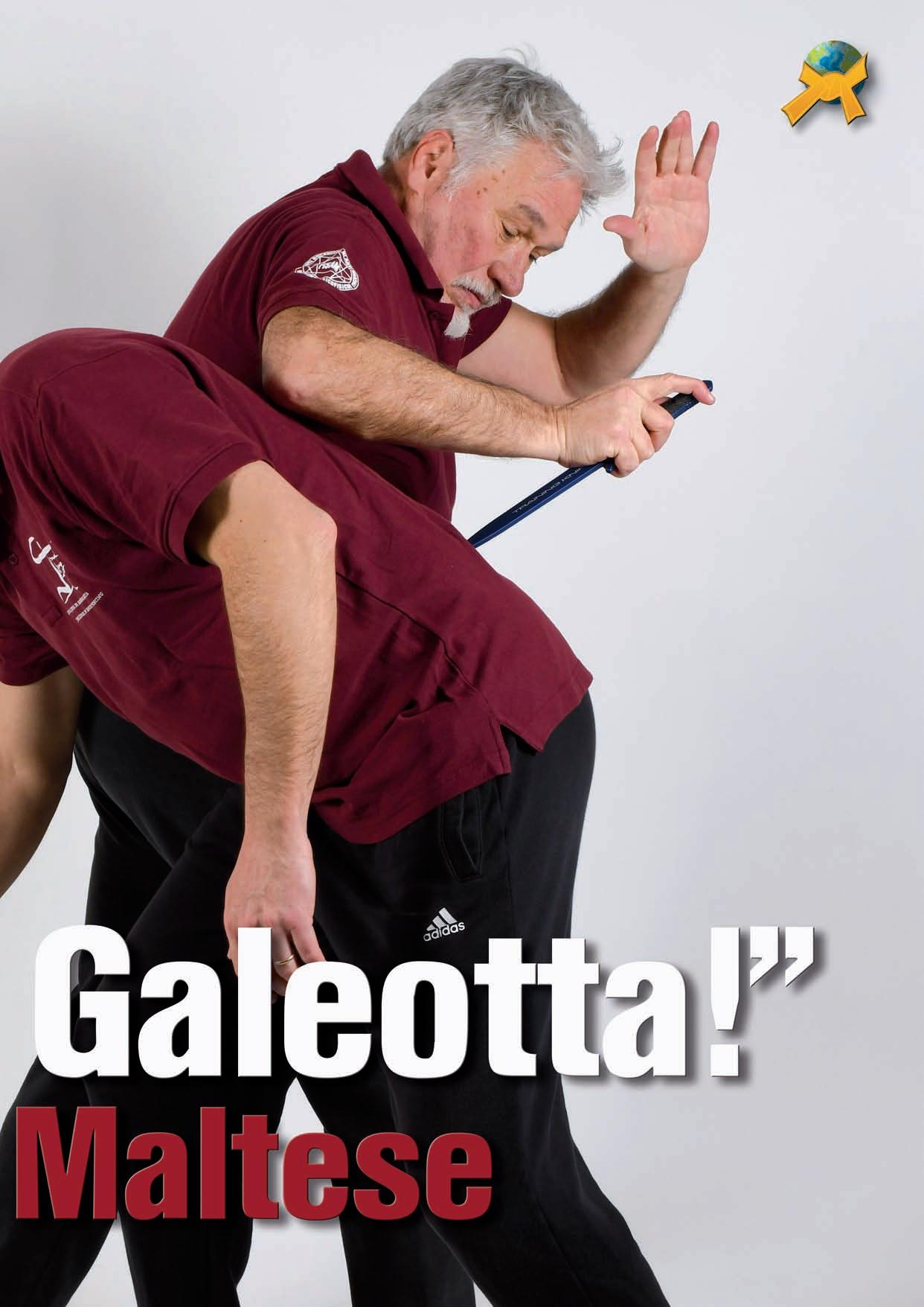

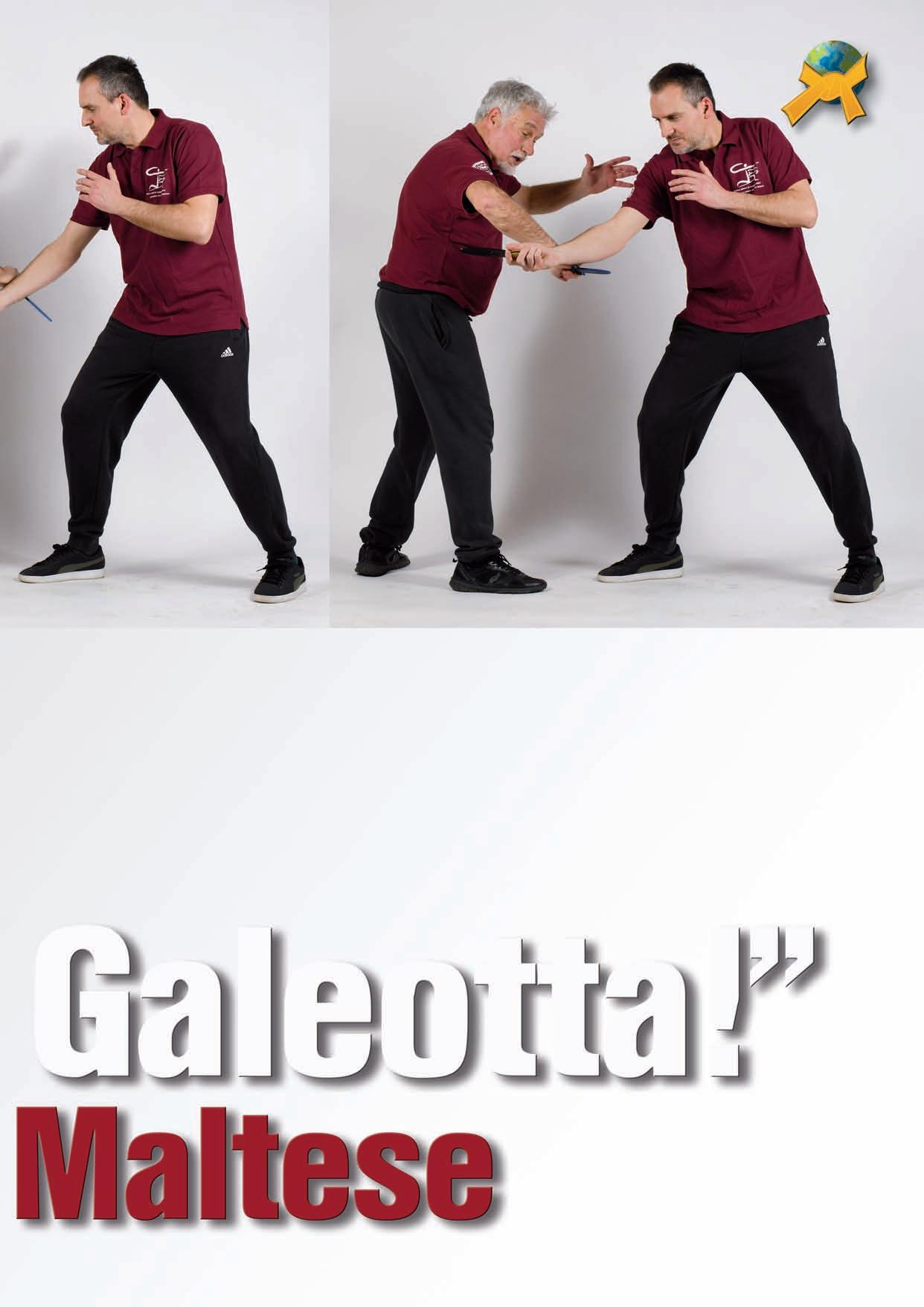
First of all, it is true that in the absence of space, in order to move easily, this technique is advantageous, however, the grip alone does not guarantee victory if the one who employs it does not have sufficient skill and courage. Such a system of fighting easily allows the “hooking” and moving of the opponent's arm, maneuvers that allow not only the parrying of a blow, but also the positioning of the enemy's weapon in an area where it can no longer do harm, while we, on the other hand, with ours can counterattack with a slashing or pointing blow. If the other makes, for example, a parry, we with a simple semicircular movement of the arm can evade it while at the same time making room to strike.
The lethal areas that are easily reached with the blade attacking the target with the gallows hold are:
1) the subclavian artery. The blow drops from above and the tip fits between the clavicle and the neck.
2) The eyes
3) The heart.
4) the kidneys (on the posterior wall).
5) the base of the back of the neck.

As for slashing shots, the most suitable targets are:
1) the inside of the arms (up to the armpits)
2) the inner thigh,
3) the neck both laterally and at the front.
4) the nape of the neck. A greater explanation should be given to the cut under the nape of the neck this action leads to losing control of the position of the head which as a result, will fall heavily forward making the opponent lose balance and unable to react.
When making an exposition like the one just made, it seems that the choice of either grip is an irreversible decision, but it is not so. Or rather, it is not so among knife fencing experts. Indeed, the latter practice switching from one grip to the other with such speed and skill that the change is almost completely imperceptible to the opponent.

The idea of the fixed grip arises most often from military schools that having to create in the soldier, whether belonging to special corps or not, a considerable amount of combative and tactical skills, the art of the knife represents only one of these innumerable tasks, so a few techniques are chosen that are repeated many times and above all the grip best suited to the task at hand is chosen. Even the modern dagger is built to remain firm in the hand and is often uncomfortable for sudden changes. This was not always the case, however, even in the military; U.S. knives during World War II, especially the celebrated Fairbain Sykes, allowed for rotational and change maneuvers that hinted at greater attention in the past than today to the use of the white weapon. In Italy, home of fencing, the sword and the dagger, during the two world wars the battle engagement of the short blade especially in the trenches, in hand-to-hand assaults, was always highly valued.
Value that stemmed not only from the schools of arms of conscription, but from the prior skills acquired in the home region. That is why at least until World War I, the assault units, thus also devoted to hand-to-hand combat, were made up


“We must not forget that it is a true fencing, rare to see, because they said the old ones : “you can die because of the art you have shown.”

of southerners from Calabria, Puglia, and Sicily, people who had a brotherly relationship with the short blade. In the south, in the past, people grew up learning how to use the knife, it was a need related to personal safety and the protection of their possessions and family. Gradually this knowledge was lost due to greater civilization and especially given the knowledge that the knife had two brothers: blood and grief.
Those who for a variety of reasons were able to attend one of these schools, whose membership often demanded a price far greater than money, learned to use the blade with both upright and inverted sockets and always paired with a jacket, hat or belt. In the schools of the honored (or dishonored) society they also learned defense without the weapon by learning to use the chair, how to kick, jump on the table, or make simple but effective holds to give headbutts or, more likely, to reach as soon as possible an adequate weapon with which to face the duel. One should not, however, think of it as a school as we understand it today in the world of oriental martial arts; it was most often a series of tips given by the more experienced to the apprentices but the latter understood that in order to learn, they had to “steal with their eyes” rather than “stretch their ears,” rather than wait for a cathedrical lesson from the one who was acting as master.
This is undoubtedly an obsolete method for modern times. It is by no means possible to repeat such a teaching model; there is no longer either the time available or the appropriate mindset, let alone the patience. Without a precise organic program and a scientific method, one gets to perform movements that may give some momentary excitement by imagining oneself an expert in the short weapon. Staging a supposed duel, closer to a brawl between unawares than to real fencing as understood in our ancestors, may satisfy the sporting or goliardic soul rather than prepare for the deadly art. We must not forget that this is real fencing, rare to see, because the old people used to say : “you can die because of the art you have shown.”
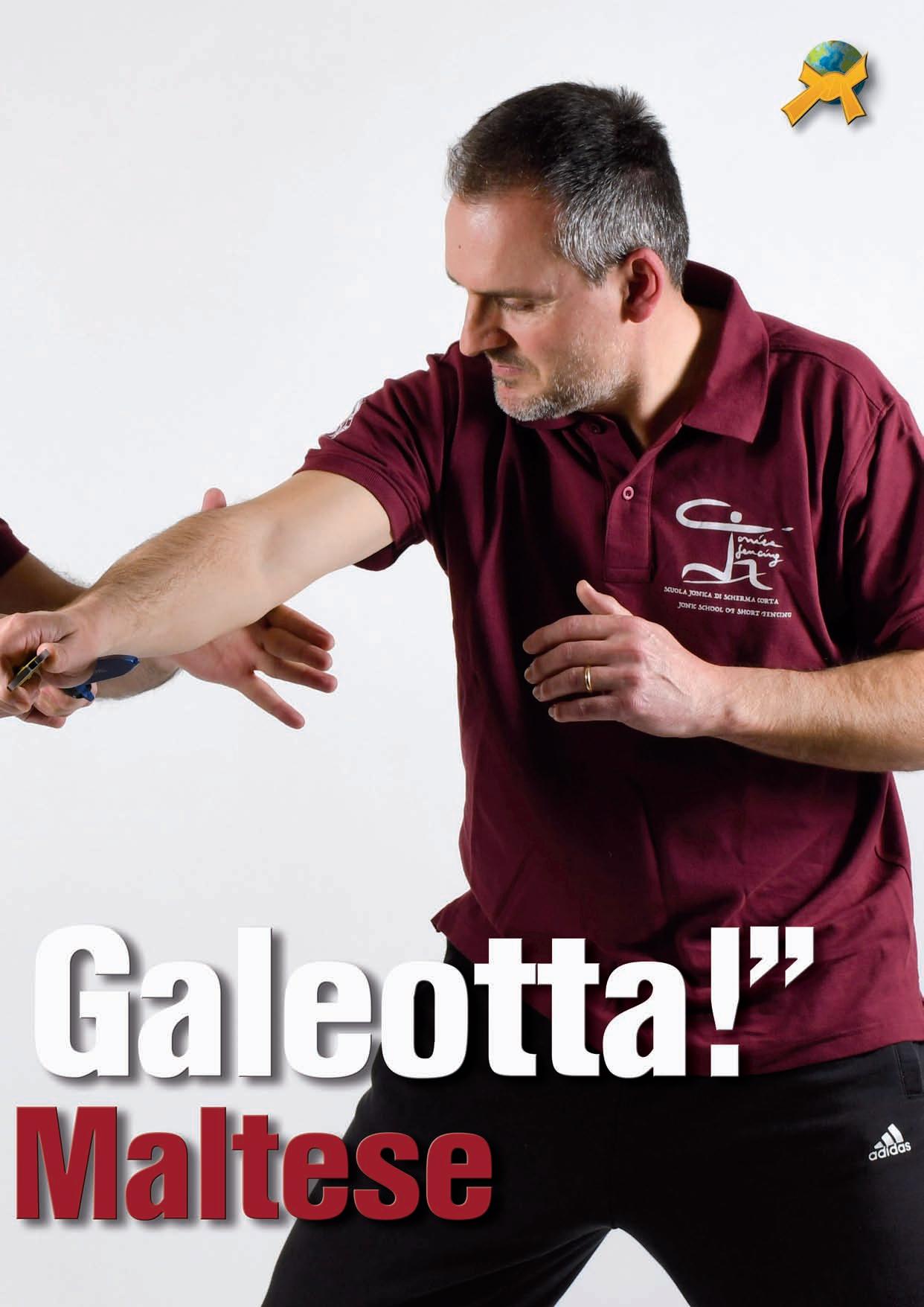
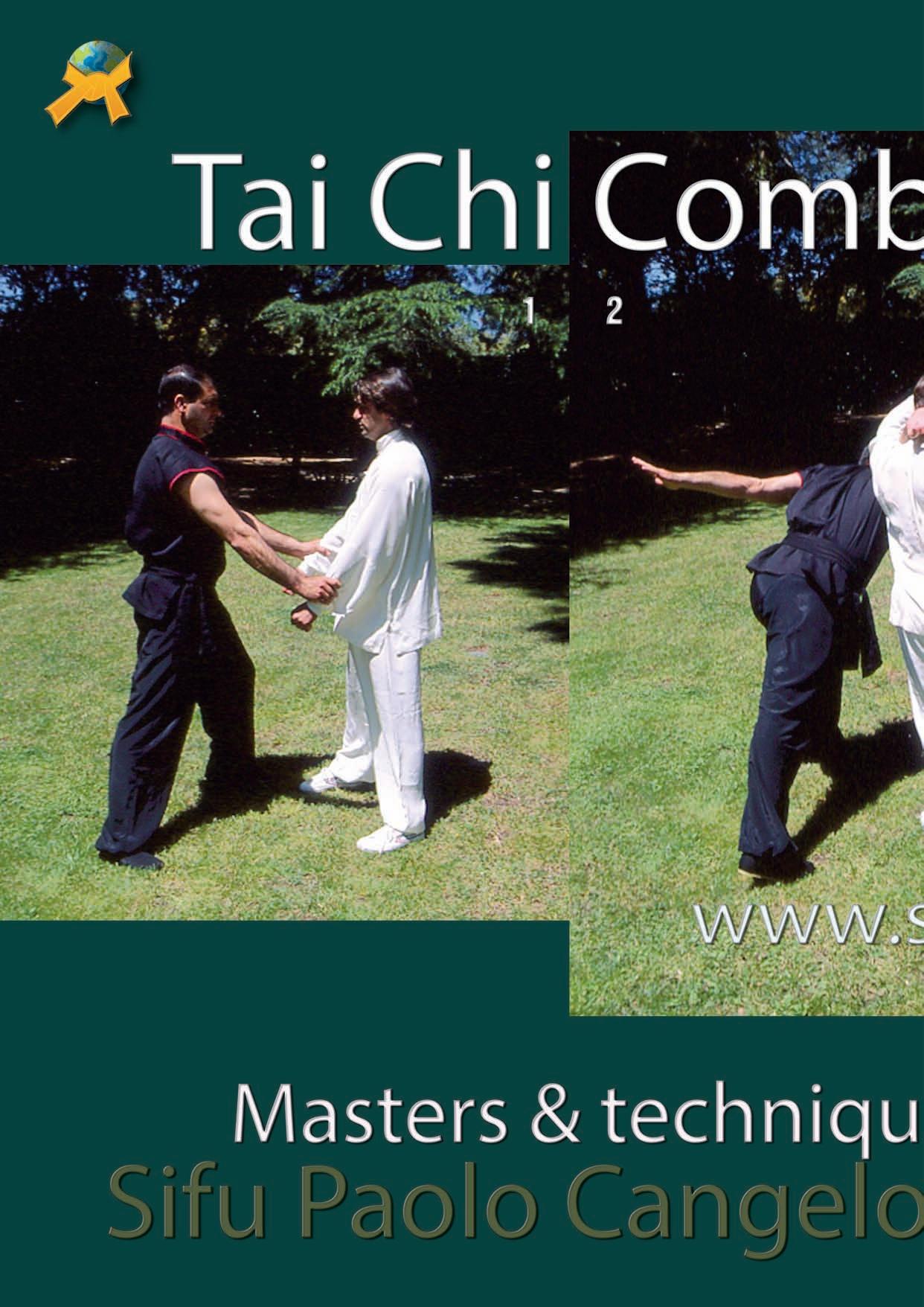


Written by Sharon Fridman

Avi Nardia CDC (Close Distant Combat) IJJ ( integrated Jujutsu)
There is a phrase in Japanese saying that we become another person each time we walk though a door into another room. In his travels, Master Avi Nardia shares the path of the sword to the depth of the readiness of the student. The names of the arts presented may differ from Krav maga to Kapap to Israeli Jiu Jitsu but the philosophy of them all is that of the sword. This is why Avi is choosing to embark on a second breath of life in 2025 with the new name CDC - Close distance Combat. Why this name, is the question and the answer is ethics and honor. To come close to your enemy is to bring the hidden to the surface and put your spirit to the test.
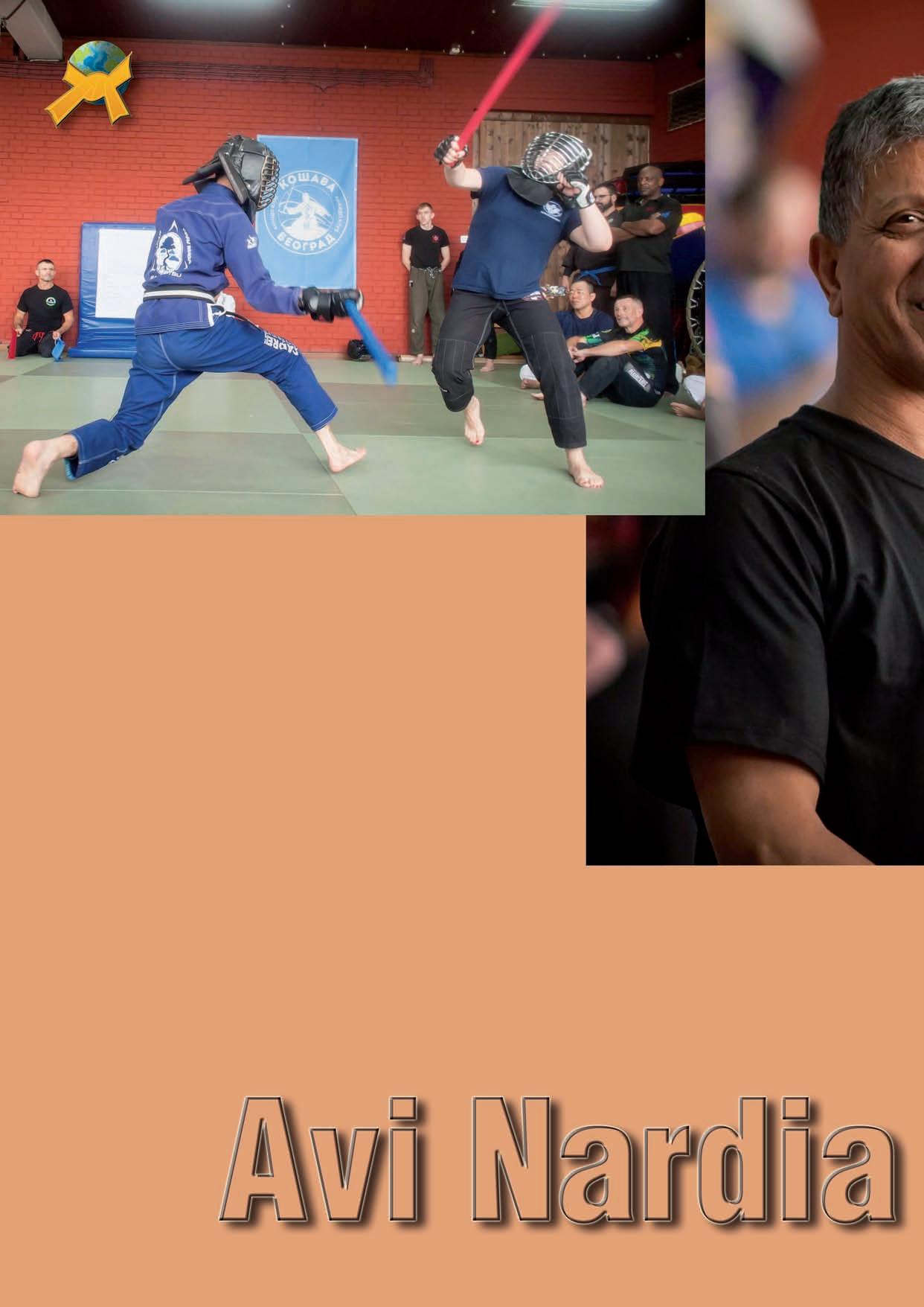
The lines on the map begins in Belgrade where Avi met instructors to share his CDC the how the evolution from Israeli BJJ into Jiujitsu and now in Integrated Jiujitsu blending the old with the new.
From there Avi flew to Japan to share both instructor training and VIP protection including how to protect your family in a professional way and also how to employ different manners of walking to evade and negate attacks. Avi continued to demonstrate how the blending of Japanese Jiu Jitsu and BJJ form Integrated JiuJitsu and become a separate branch than Kapap or Krav Maga.
Breaking down the oar into its separate particles we begin with Krav Maga which is a basic short program taught in the IDF and derive from Police Hagana-Hatsmit which akin to Defensive tactics in the USA police forces. Each different program has its own liabilities and premises. All of them use force but are subject to different laws. Any soldier in the IDF knows that the few days or weeks of training and instruction amount to little in the martial world and a trained soldier is a novice in hand to hand at best. The Israeli Jiujitsu program grew and included additions from different arts and wasn't taught at the IDF. Each name carries meaning with it. Kids programs do not suit the military and vice verca. Honesty demanded to create a new progression from a short program as an introduction then progressing into the the IJJ, mixing the alloy of the blade with additional knowledge from other martial arts. This way the student can receive much more that any one path may offer and hone their edge on several rocks into a new shape.
The path is not one for show but for deep learning. The warriors of old such as the Samurai did not compete in the modern sense but strove for self-improvement.
“The martial way is our path to self-discovery, selfrealization and finally in transcending the self.”
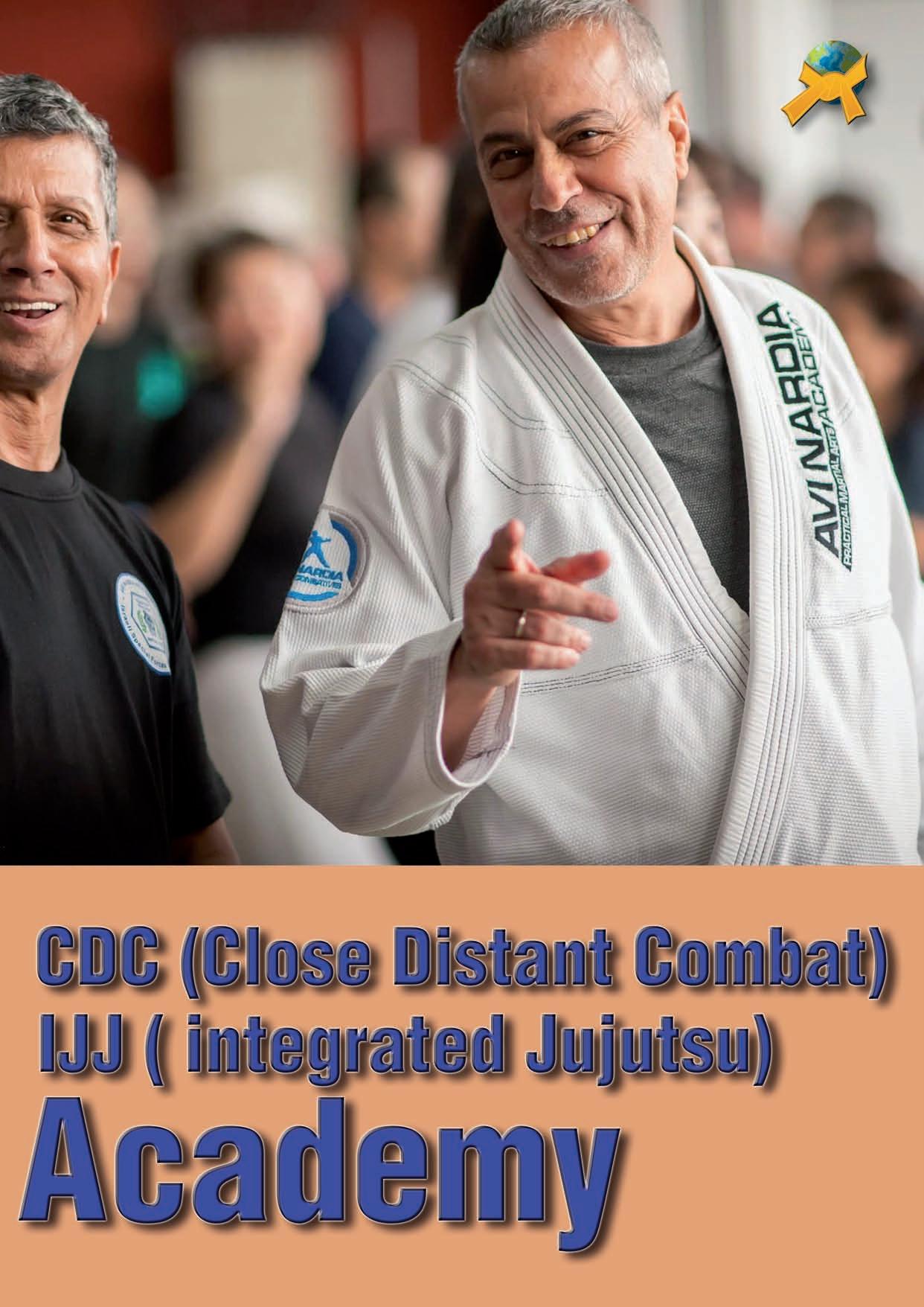

"We have two lives and the second begin when we realize we only have one" Confucius
Avi's travels continue in various locations in the US. Dallas to South Carolina to Lynchburg and more where he gave private classes and Mui Tai workshops. He continued with blade and firearms disarming classes and next he flew to Hanover Germany to teach both Kempo Arnis and hold tests for BJJ and IJJ. The scabbard slit becomes smooth the more the sword is run through it. With an open mind, a student and teacher can learn no matter the name of the art.
When a glass breaks it shatters into shards of intricate lines and sharpness. The same goes for conversations over time with our teachers and nature itself. Our internal battles are fought night and day between good and evil, right and wrong. The martial way is our path to self-discovery, self-realization and finally in transcending the self. Why do we discuss these terms and why do we pursue the martial arts? We do not walk down the street with a scabbard on our belt nor do we shoot a bow or use a sling to topple over giants?
Avi Nardia a teacher and scholar of the martial arts for several decades has a layered answer to this query. It is near impossible to see the top of the mountain from it's base and the same is true in reverse. The seed to mastery is given to the student in the first lesson and when it hits you, you realize that the road is given to you by he who walked the road ahead of you or in Japanese, A sensei.
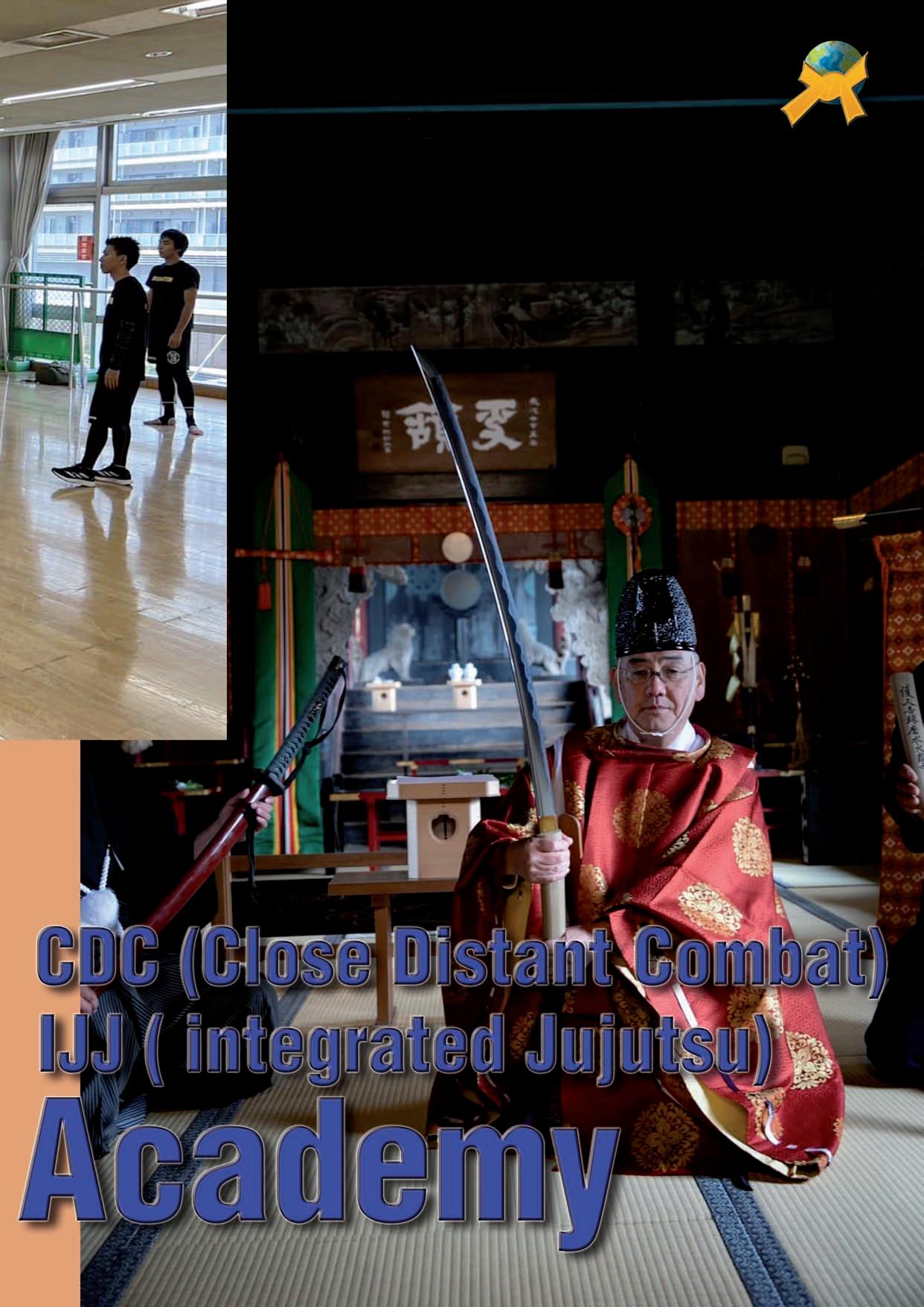
“The warriors of old such as the Samurai did not compete in the modern sense but strove for selfimprovement.”

It is also said that the right teacher appears when the student is ready and to allow this Avi has created a three tier system of learning.
We begin with the Student individual who attends classes when and where they wish over the net or in person. Those are given the seed to mastery, but it is their choice on how and in which planes of life they apply and manifest it.
We progress to the Associate who teach on their own and can only mention their association with the Nardia name. These teachers are committed to the way of martial art but not yet to the path of mastery.
The final tier are the members who commit to the path of morality and ethics and embody the knowledge and skill of the Kengo or sword master. Only those are allowed to use the Name and Logo of Avi Nardia.
Let's go on a journey to ancient Japan where the same structure existed in this form. In the beginning, a student of the sword or Ken in Japanese would be called Kenshi or swordsman. In the beginning, a swordsman learns to cut and stab. He or she learns how to take a life in the service of their will or that of their country. It is the temptation of the life taking sword or "satsujinken" which begins most journeys. The practice is hard at first and the student aims are outside themselves.
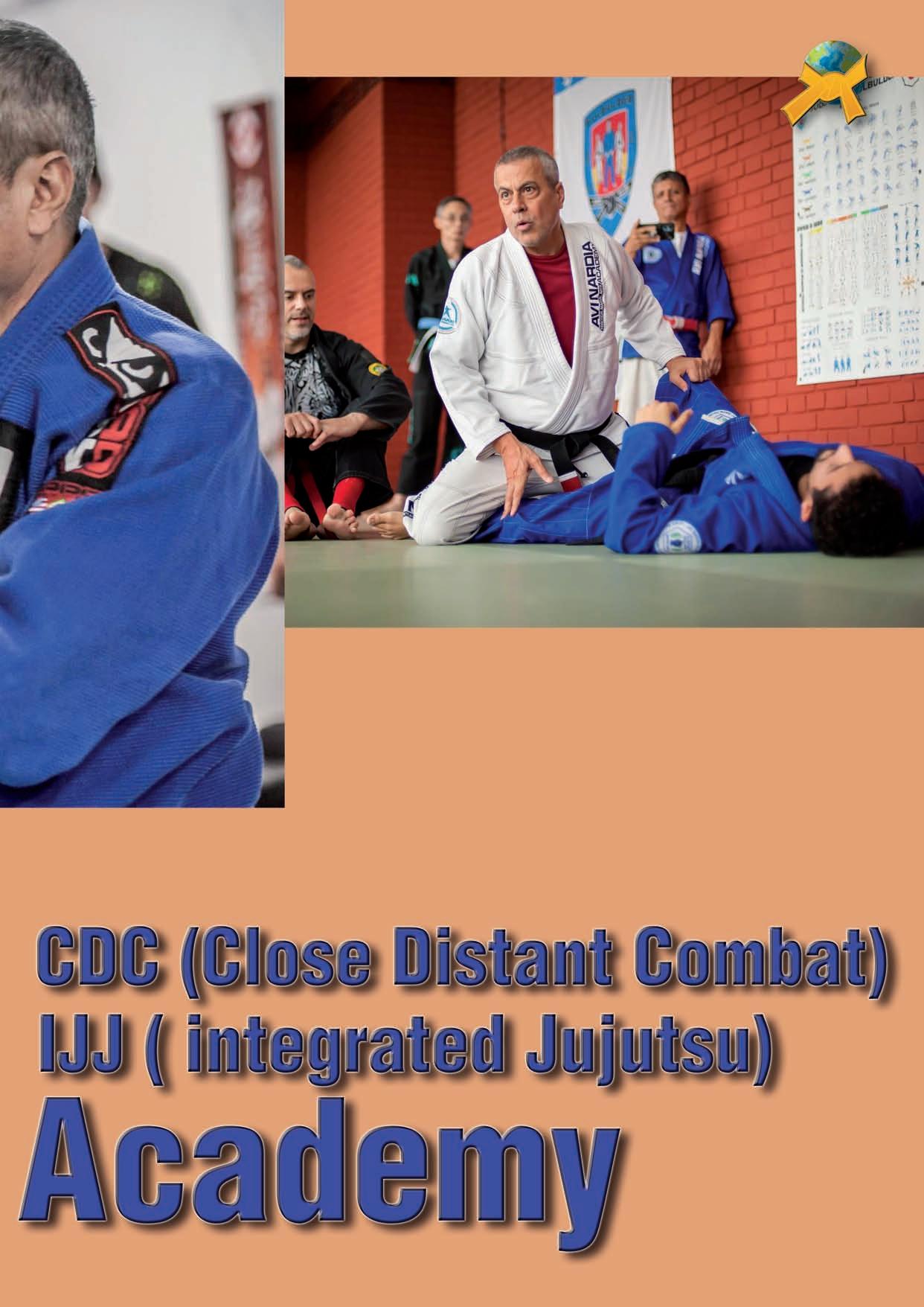
“Avi
Nardia a teacher and scholar of the martial arts for several decades has a layered answer to this query. It is near impossible to see the top of the mountain from it's base and the same is true in reverse.”

Next on the path comes a higher level of competence in the use of the sword but still the swordsman is attached to his weapon in thought and action. This stage can be called "kengo" or sword master and during this phase the student knows more and can do more with the blade but still there is reliance on the blade and the technique instead of what lies within.
The final level involves the way of the life-giving sword or "katsujinken" where the student teacher transcends the learning and the sword itself. Avi sees his teachings as a combination of both swords. Both taking and giving life to reach internal balance and achieve the level Kensai or sword saint who does no longer rely on the sword but carries the spirit of the sword in each thought feeling and action. Consider being able to include all facets of our humanity during the trials of combat. Our humanity is tested to its limits and beyond and one who carries his sword within can be one with their morals and honor despite such pressure.
We mentioned the concept of disarm using both cold steel and firearms. When you are the embodiment of the martial way, there is no way to disarm you from the outside.
Every action we take affects our loved ones and the world. The ability to take a life and to elevate those who are living brings out the best in all of us and is the true and complete meaning of the martial way.
Sharon Friedman
A student of Avi Nardia and teaching the martial way in Israel https://vigilanceandtranquility.com sharon.friedman@yahoo.com

“Every action we take affects our loved ones and the world.”
“Larga Mano” (Long Hand) simply means long-distance combat, a method that teaches you to stay away from your opponent and hurt him without even entering the hand-to-hand distance. In a way, the Filipino people were ahead of the times, perhaps because, little conditioned by their traditions, they suffered many invasions and, frequently, their habits and customs were altered. But they knew how to turn their misfortune into advantage, and they learned to absorb and integrate everything that could be useful and increase effectiveness. Their Martial Arts are an excellent example of this. Philippine Arts masters did not pose the problem of remaining tied to such or such custom, but without hesitation, integrated into their own systems personal experiences of Karate or Japanese Judo, Western Boxing, Silat of neighboring Indonesia and the ancient traditions linked to Scrima, the art of self-defense perfected in the Italian peninsula.
When the Philippine Arnis spread in the West, to distinguish it from Fencing, it was called "the living hand fencing", because the hand that did not hold the weapon, actively collaborated in the actions of defense and offense. Thus, the difference between the two systems, the East and the West, is that in Olympic fencing, the unarmed hand is kept safe and used at most to balance the impulse in assaults; in Arnis the unarmed hand is alive and active.
In this work, Professor Maltese shows us the basic positions, defenses and fundamental attacks, guard exercises, blocking, crossing and counterattack in Redondo, the fifth, seventh, eighth and contras defenses, dynamic training and free combat exercises with protections. We will also see the bag training (blows, blockades and counterattacks) and a final chapter dedicated to Sword and Dagger, the Italian art in the Philippine Kali, executed with authentic weapons.


All DVDs, wichi is produced by Budo International, si provided and alone in the formats DVD-5 or MPEG-2, in VCD, DivX or the like is however neves offered with a special holograma sticker. Besides our DVD is characteristed coverings by the hig quality in pressure and material. If this DVD and/or the DVD covering do not corespond to the requirements specified above, it concerns illegal pirat copy.
More than a century ago, in our cities, men of different social classes still resorted to sword and saber duels to settle their disputes and in the streets one could meet thugs and muggers ready to use a knife. Times when it was common for a gentleman to leave the house with his cane, often animated, i.e. equipped with a hidden blade. Starting from the treatise of Master G. Martinelli (1908) "Trattato di scherma con bastone da passeggio" interpreted and integrated according to the methodology of the Nova Scrimia, masters Chiaramonte, Galvani, Girlanda and Proietti present a complete work on the use of the cane, which even today can be extremely valid and effective. For cane fencing, Martinelli draws inspiration from the Italian school of saber, with a classical approach, as well as boxing as a means of selfdefense: guard, strikes, parries, feints, spinning and circling steps, jumps, strong blows to the hand, arm, groin and terrifying jabs to the face. The stick placed in good hands is as good as a saber. Of course, it does not cut or pierce, it does not kill, but it brings to reason and, if necessary, brings even the fiercest offender to his knees.

All DVDs, wichi is produced by Budo International, si provided and alone in the formats DVD-5 or MPEG-2, in VCD, DivX or the like is however neves offered with a special holograma sticker. Besides our DVD is characteristed coverings by the hig quality in pressure and material. If this DVD and/or the DVD covering do not corespond to the requirements specified above, it concerns illegal pirat copy.
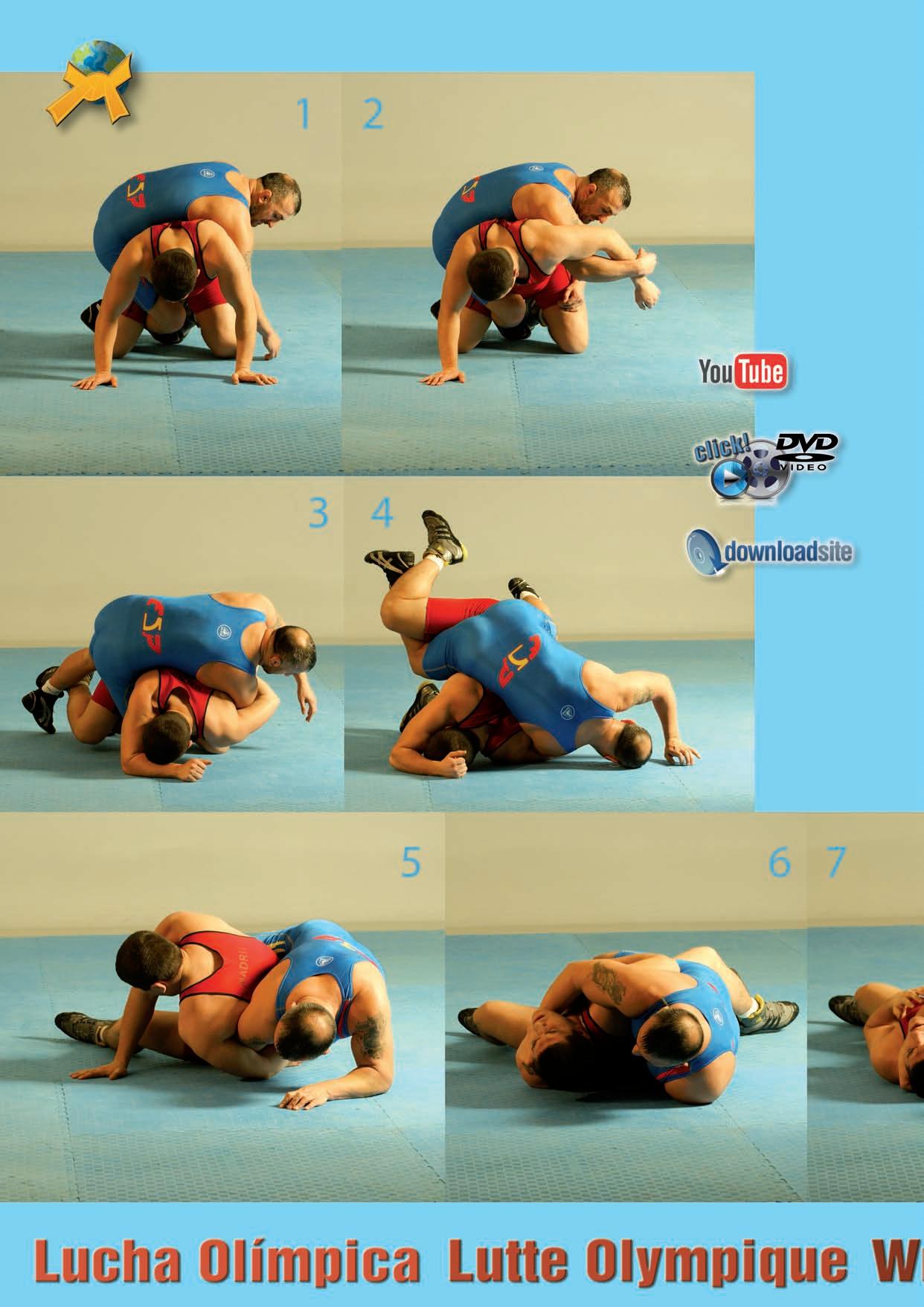

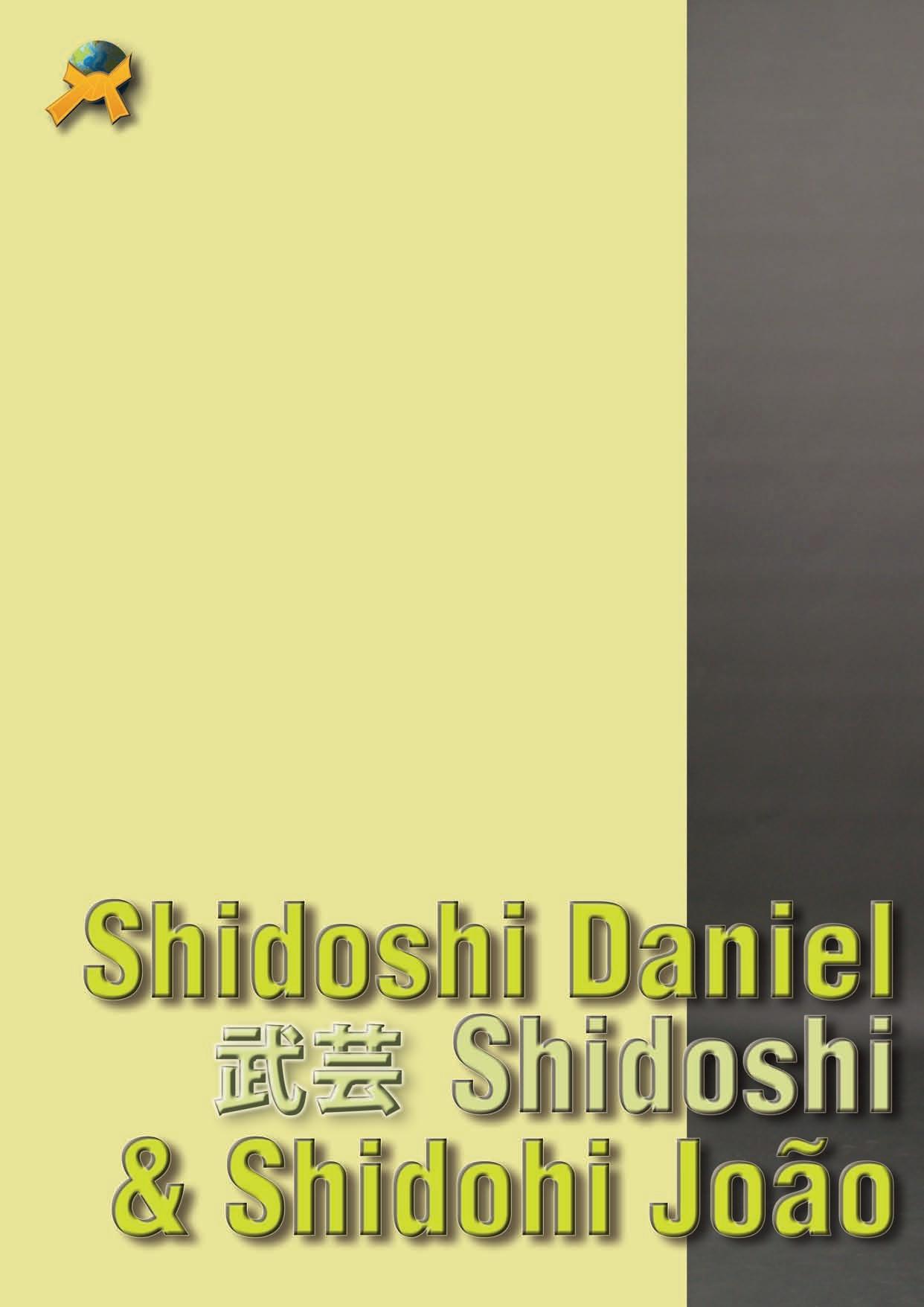
“The Master-Student Relationship and Consciential Myopia: Reflections on Learning and Tradition”
“When a wise man points to the sky, the ignorant looks at his finger” (Author unknown)
In Buddhism, there is a teaching that says: “The finger that points to the moon is not the moon”. This means that the teachings (the finger) are only guides to understanding a greater truth (the moon) and should not be confused with the very essence of what is being indicated.
The concept of “consciential myopia” often comes up in discussions about personal development, spirituality and self-knowledge. It is a limitation in the perception of broader and deeper realities, both about oneself and about others and the world. Similar to physical myopia, which restricts vision to nearby objects, consciential myopia reflects “short-sightedness” in the field of consciousness, making it difficult to understand situations from a broader and more integrated perspective.
In the traditional arts, this myopia manifests itself as a difficulty in transcending the superficial aspects of practice. Masters and students, by limiting themselves to immediate results or the mechanical repetition of techniques, often fail to see the depth and richness that traditional learning can offer. Self-centeredness, the hasty pursuit of achievements or a misinterpretation of the true traditional essence are just some of the factors that fuel this limitation.
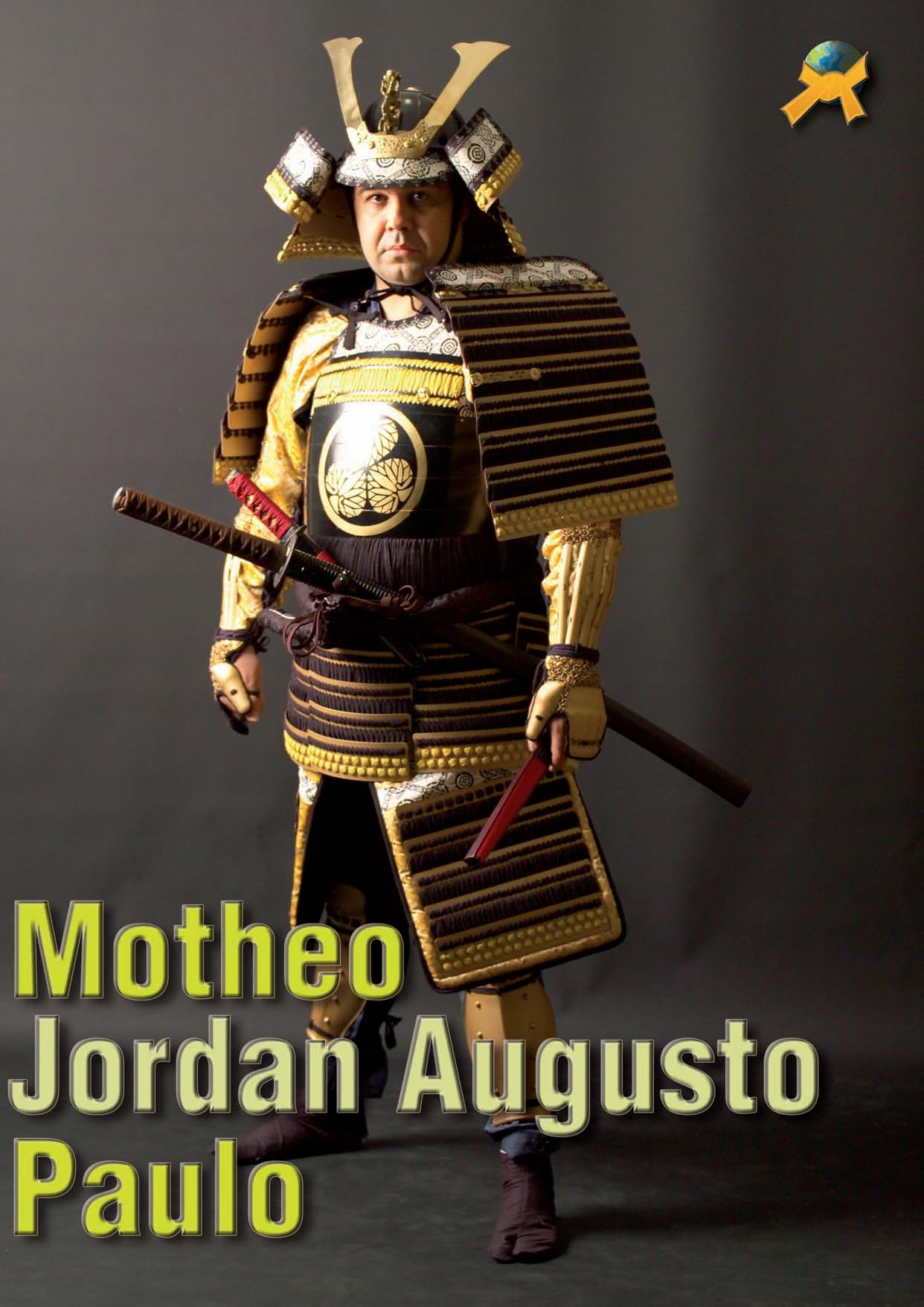

In any art that respects its traditions, the master-student relationship is one of the fundamental pillars for the continuity and authenticity of the practice. When this relationship is neglected or distorted, it ceases to be a bridge for the transmission of knowledge and becomes, in a way, a betrayal of the principles that underpin the art.
Curiously, the words “tradition” and “betrayal”, despite appearing to be opposites, share the same etymological root: the Latin traditio, which means “delivery” or “transmission”. This common origin reveals a profound paradox. Both refer to the act of passing something on, but the meaning that this delivery takes on depends entirely on the context and the intention behind it.
The Latin verb tradere, from which traditio comes, is formed by: - Tra-, a reduced form of trans, meaning “beyond” or “through”; - Dare, which means “to give” or “to deliver”.
Originally, tradere meant “to hand something over to someone”, which could be a physical object, a teaching or even a responsibility. The word traditio, derived from this verb, represented the act of transmitting or sharing something, usually with the intention of preserving and perpetuating it.
Over time, however, the act of “handing on” took on opposite meanings in different contexts:
1. Preservation and continuity: Handing down as an act of care, guaranteeing the survival of something valuable.


“In any art that respects its traditions, the master-student relationship is one of the fundamental pillars for the continuity and authenticity of the practice.”

2. Abandonment or betrayal: Handing over as a breach, breaking trust or resulting in loss.
While “tradition” has evolved to represent the preservation of values, practices and beliefs, “betrayal” has come to symbolize the breaking of trust and the loss of integrity. Both, however, share the same initial gesture of “handing over”, showing that the line between preserving and betraying is often blurred.
In traditional arts, this is directly reflected. A master who insists on
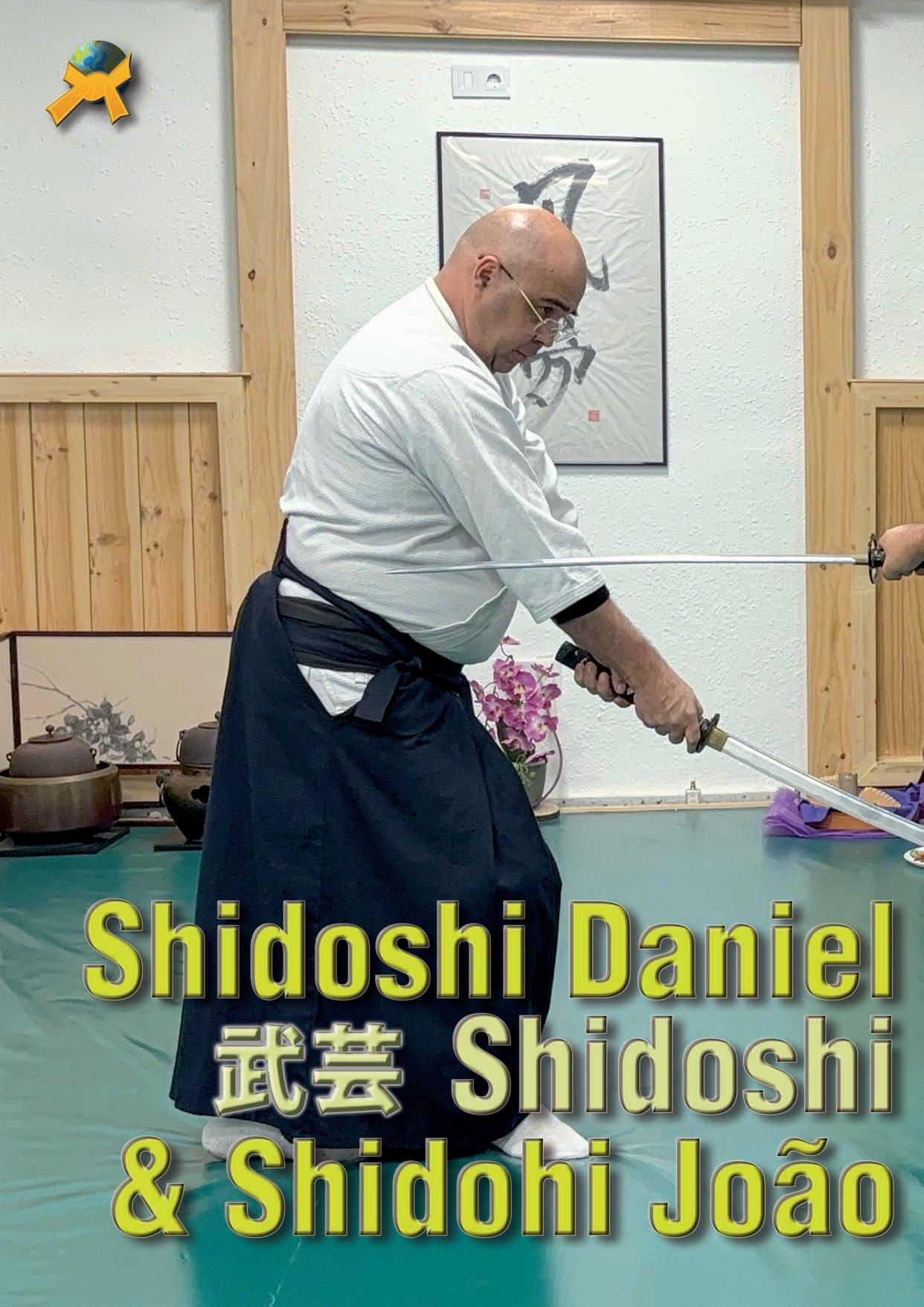
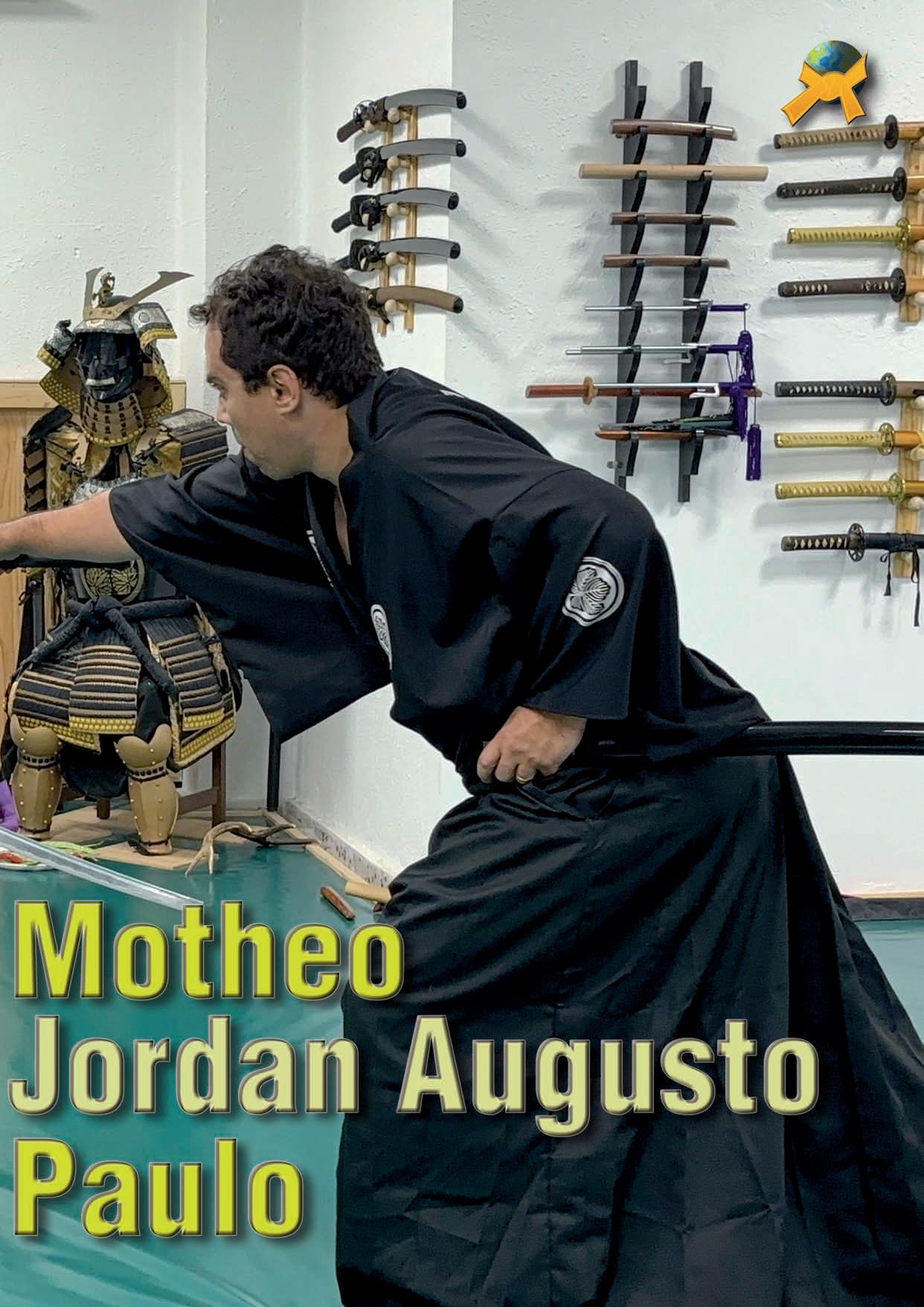
maintaining outdated practices, ignoring the context and needs of his students, can betray the spirit of evolution and adaptability that is essential to keeping art alive. Likewise, a student who is only concerned with external achievements, neglecting ethical and spiritual values, betrays the essence of their training.
Tradition, when well preserved, is a living connection between generations, a commitment to honor the past while preparing for the future. On the other hand, betrayal is the denial of this responsibility, either through negligence or selfishness. Understanding this duality invites us to reflect deeply on how we conduct our practices and relationships in the traditional way.
More than a theoretical term, overcoming consciential myopia is a constant exercise. It is a choice to see beyond the immediate, to honor what has been handed down and, at the same time, to have the courage to adapt it when necessary, ensuring that traditional arts remain alive and relevant for future generations.
Although they are semantically opposed, tradition and betrayal share a common origin: both involve the idea of surrender. What distinguishes them, however, is the intention and impact of that surrender:
- Tradition represents the surrender to preserve and honor.
- Betrayal implies surrender that breaks and dishonors.
This duality leads us to reflect on our roles as teachers and students in the traditional arts. When we understand the importance of tradition in its depth, we avoid inadvertently transforming this surrender into betrayal, promoting a traditional practice that is true to its essence and truly transformative.
In this context, the role of the master transcends the simple act of teaching techniques. He is, above all, a mentor who guides the student on a path that unites body, mind and spirit. In turn, the student is not just a passive recipient; he is also a co-creator of this process, bringing the teachings into his life and thus contributing to the continuity of the tradition. However, consciential myopia can obscure this relationship, diverting it from its higher purpose.

“More than a theoretical term, overcoming consciential myopia is a constant exercise. It's a choice to see beyond the immediate, to honor what has been handed down and, at the same time, to have the courage to adapt it when necessary, ensuring that traditional arts remain alive and relevant for future generations.”


When the master is affected by consciential myopia, his vision of his own authority and responsibility becomes limited. This often results in behaviors such as:
1. Exclusive focus on the technical: The teacher only values physical and technical excellence, neglecting the philosophical and ethical teachings that form the student's character.
2. Authoritarian leadership: Respect is confused with submission, creating an environment based on fear or emotional dependence, rather than a space for mutual learning.
3. Resistance to evolution: There is an inability to adapt teaching to social changes or individual needs, which ends up crystallizing outdated dogmas.
These attitudes restrict the student's potential and limit the transformative impact that traditional arts can offer, reducing practice to something merely technical.
The Myopia of Learning in the Student
On the student's side, consciential myopia can be a major obstacle to making full use of traditional teachings. Some common attitudes illustrate this problem well:
1. Searching for quick results: Many students end up focusing only on external achievements, such as belts or medals, without realizing that these steps should reflect deeper internal learning.
2. Disconnection from philosophy: Seeing traditional practice as just a physical or recreational exercise, ignoring its cultural and spiritual depth, is another clear sign of this short-sightedness.
3. Idealization of the master: When the master is placed on an unquestionable pedestal, this can prevent the student from critically reflecting on the teachings and hinder their own autonomous development.
These attitudes make traditional practice superficial, distancing the student from their true purpose and compromising their integral growth.


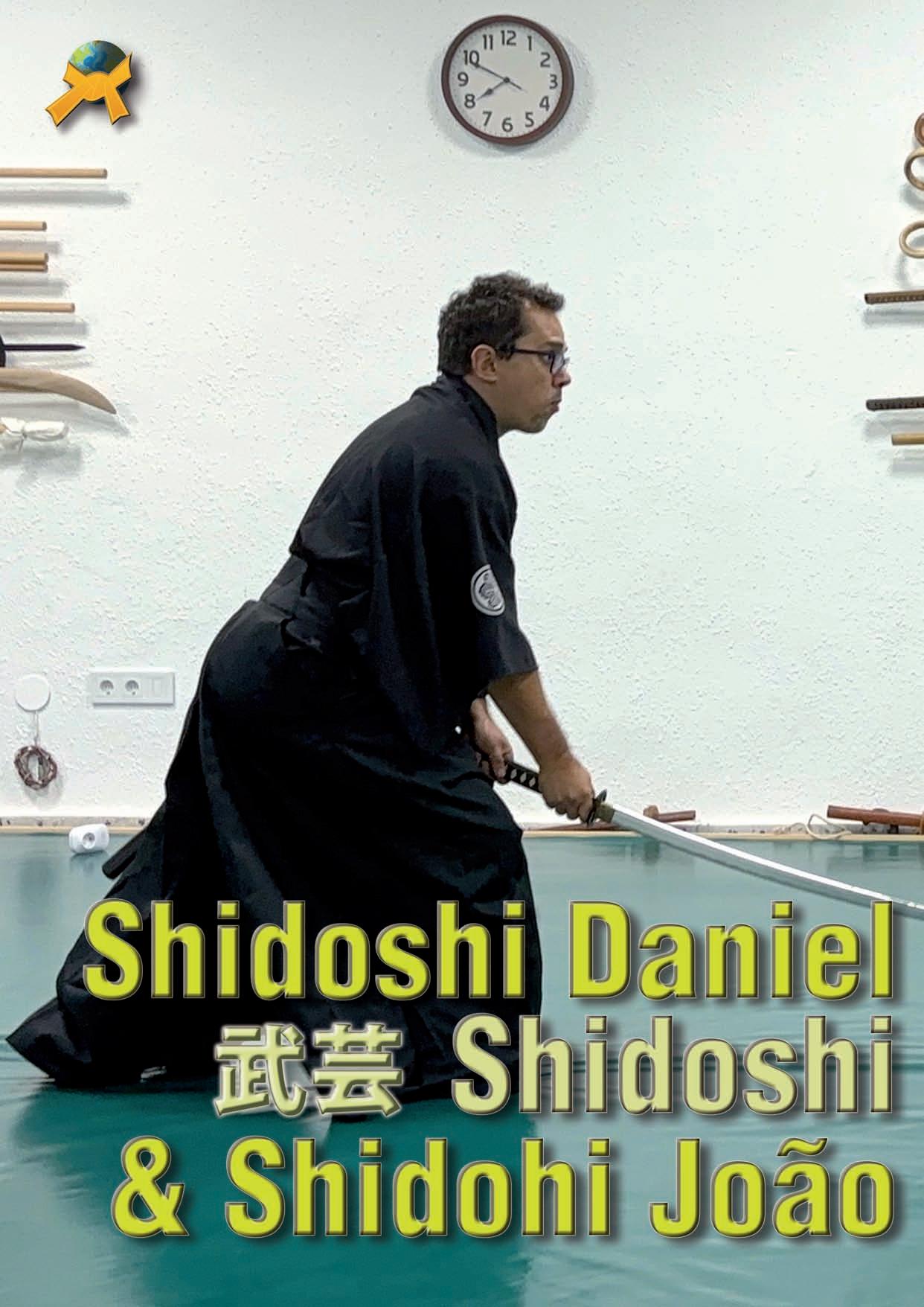
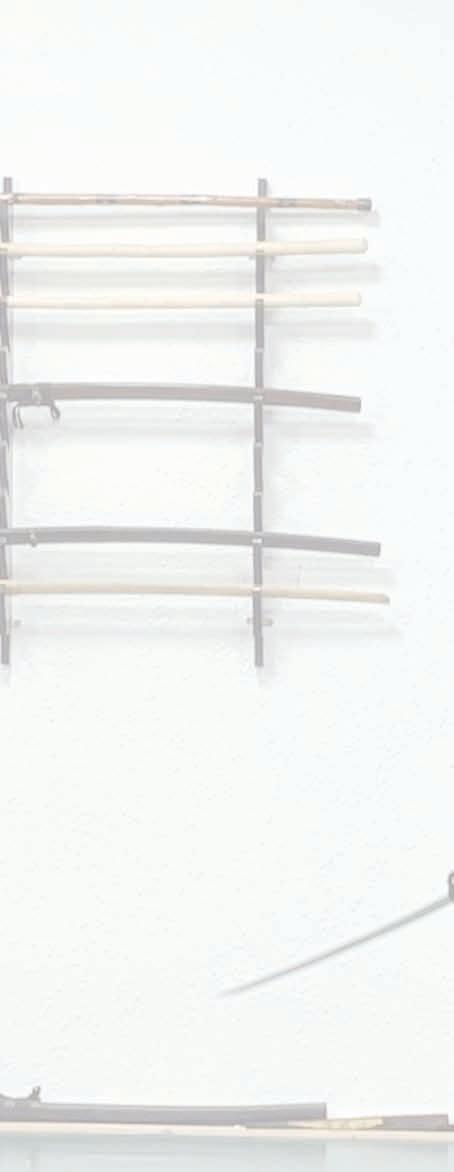

The relationship between teacher and student only reaches its full potential when both are committed to overcoming this limited vision. For the master, this means understanding that teaching goes far beyond the techniques applied in the dojo. They need to cultivate humility, be willing to listen and accept that they too are constantly learning. Inspirational leadership does not come from imposing authority, but from empathy and the ability to create an environment where the student can fully flourish.
The student, on the other hand, needs to approach the practice with an attitude of openness and reflection. They need to understand that traditional arts are more than kicks, punches or perfect positionsthey represent a lifestyle that values respect, perseverance and self-knowledge. Technical learning must go hand in hand with personal growth.
The master-student relationship is a twoway street, where clarity of purpose and a willingness to learn become indispensable. When marked by consciential myopia, this relationship loses its depth, and the true traditional spirit is weakened. However, by overcoming these limitations, master and student not only strengthen their bond, but also ensure that the tradition of traditional arts lives on as an instrument of personal and collective transformation.
This path requires patience, introspection and commitment on both sides. However, the result is worth every effort: a traditional practice that not only connects the student to the past, but also inspires them to build a future based on the deepest values of art.
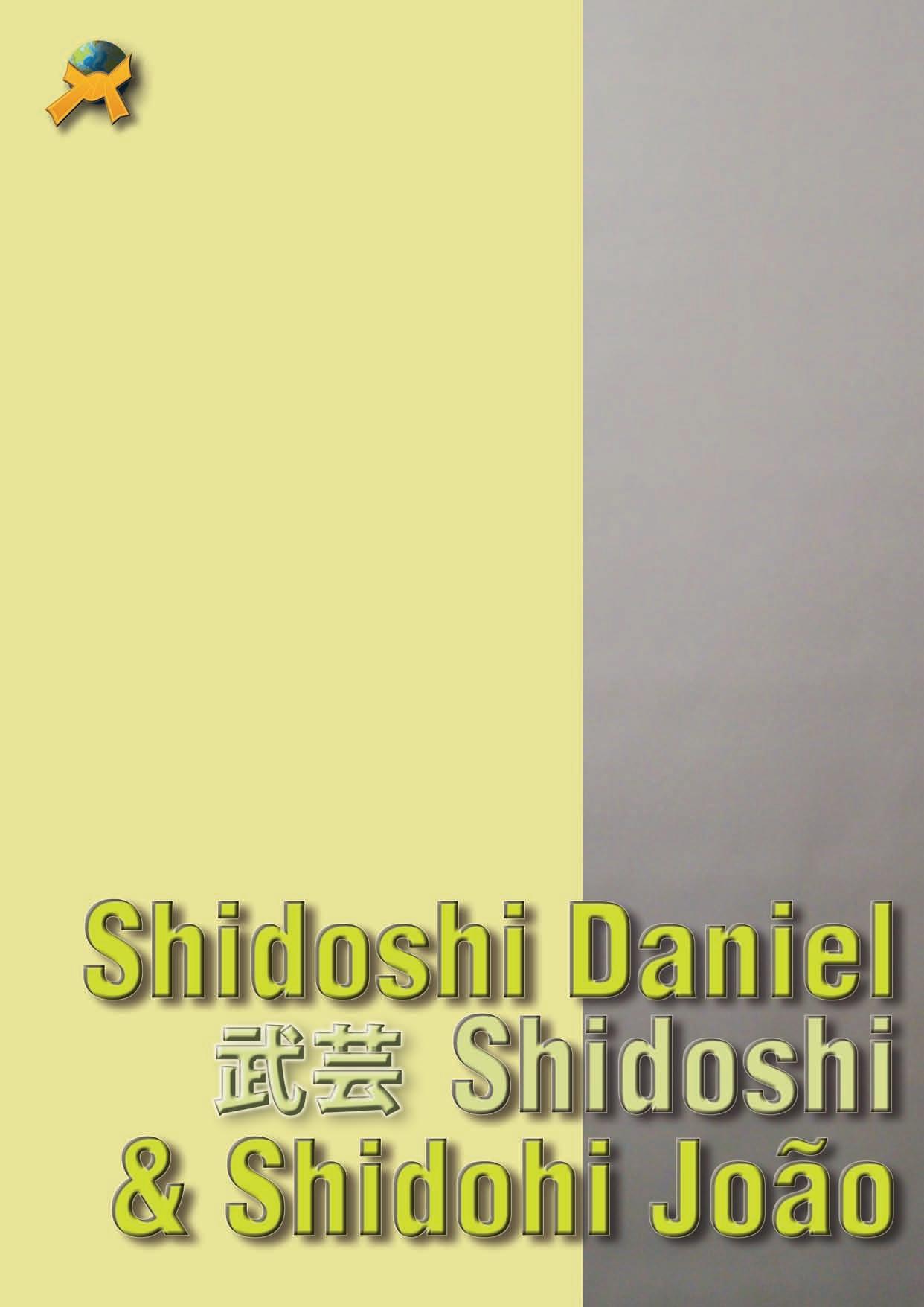
Overcoming consciential myopia is more than a challenge; it's an opportunity to honor the traditional legacy, bringing meaning and humanity to every movement, every teaching and every relationship that is built along the way.
The relationship between master and student is much more than a hierarchy or a pedagogical contract. It is, in fact, a mirror that reflects both the virtues and limitations of both. When this connection is overshadowed by consciential myopia, learning stops flowing authentically, and the deeper values of the traditional arts end up getting lost in superficiality. On the other hand, when there is clarity, openness and a willingness to learn, master and student become catalysts for transformation, mutually feeding a virtuous cycle of evolution.
Overcoming consciential myopia is a call to all practitioners, whether beginners or experienced, to transcend immediacy and superficial desires. True learning in the traditional arts is not just about acquiring techniques; it touches life in a comprehensive way, shaping character, worldview and human relationships. It is in this deep dive that we find the true traditional spirit.
Consciential myopia is not just a technical or philosophical problem. It has profound ethical and cultural implications. When masters and students don't fully understand the meaning and responsibility of their roles, the transmission of traditional arts ceases to be a living link between generations and becomes a rupture, something that can be seen as a betrayal of the principles that underpin the practice.
Tradition, in this context, should not be confused with mere repetition of gestures or rituals. It is a vibrant commitment, a pact between past, present and future. It is the surrender of something valuable, with the intention of preserving its essence while allowing it to renew and adapt. On the other hand, betrayal, although it shares the same etymological root, represents the breaking of that pact - whether through negligence, selfishness or misunderstanding.
In traditional arts, the line between tradition and betrayal is often blurred. A master who clings to obsolete practices without recognizing the demands of today's world can, without realizing it, betray the evolutionary purpose of art. Likewise, a student who seeks only external rewards - such as degrees or titles - while ignoring the spiritual and ethical values that underpin the practice, loses sight of the essence of learning.

Overcoming consciential myopia requires an active stance from both teachers and students. For the teacher, it means abandoning authoritarianism and understanding that teaching goes beyond techniques: it means inspiring, guiding and growing together with the student. For the student, it is an invitation to reflection, humility and the search for something greater than material achievements or external recognition.
The master-student relationship, when seen in its depth, transcends the mere transmission of knowledge. It becomes an exchange, where the master learns from the student and the student reflects the teachings of their master, improving them on their journey. When both commit to this genuine exchange, the traditional art ceases to be just a practice and becomes a way of life.
More than combat techniques, traditional arts offer a way to honor the past and illuminate the future. The true traditional spirit is found in clarity of purpose, respect for traditions and the courage to renew them when necessary. In doing so, masters and students ensure that the essence of traditional art remains alive, vibrant and relevant for generations to come.
Koan: “Nothing Exists”
A young Zen student visited one master after another. Then he went to Dokuon in Shokoku. Wishing to show how much he already knew, the student said, vainly:
“Mind, Buddha, and sentient beings, apart from anything else, do not exist. The true nature of phenomena is empty. There is no realization, no delusion, no sage, no mediocrity. There is no giving and nothing to receive!”
Dokuon, who was smoking patiently, said nothing. Suddenly he hit the young man on the head with his long bamboo pipe. This made the young man very angry, shouting curses.
“If nothing exists,” asked Dokuon calmly, ”where did all your anger come from?”
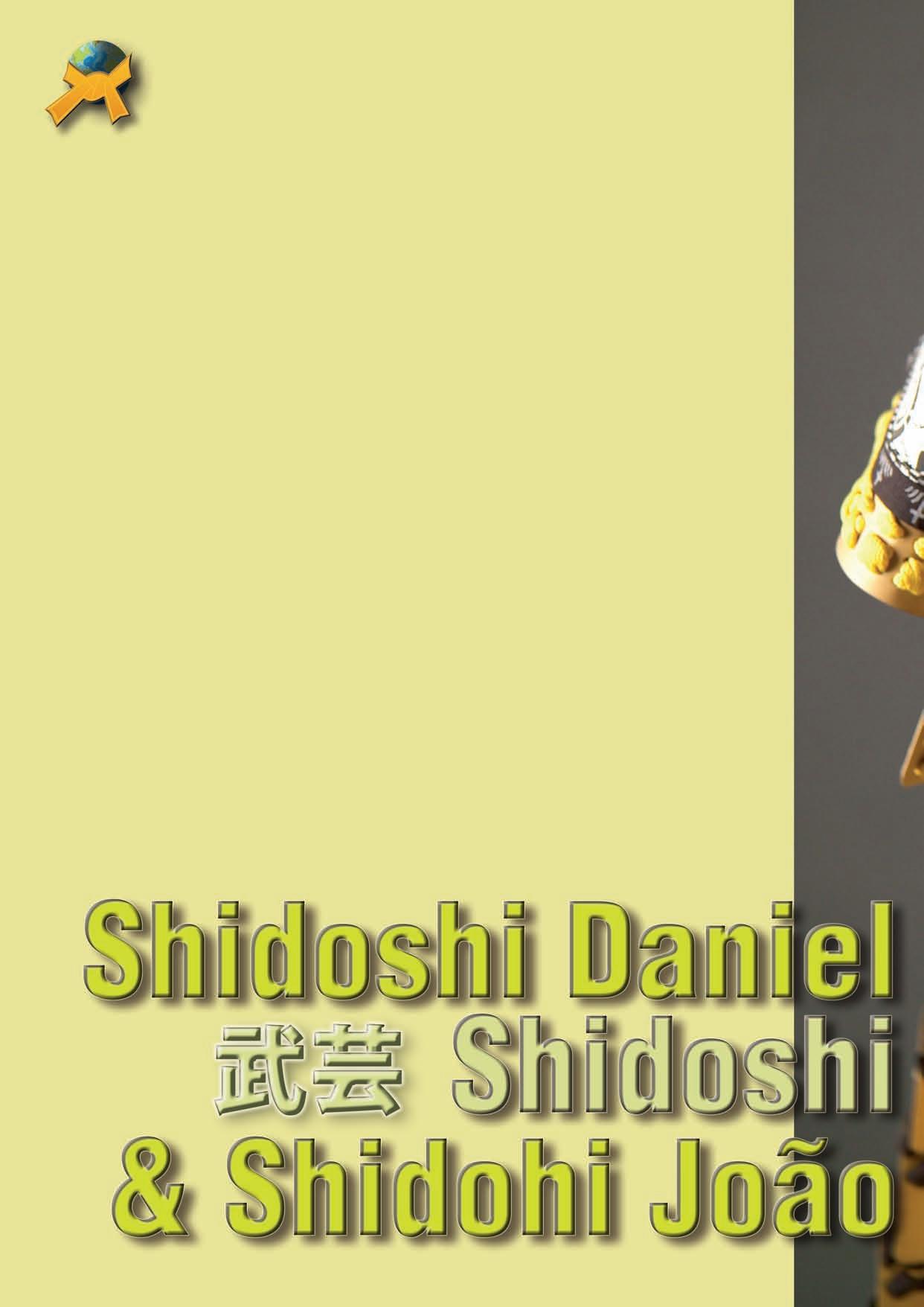
“The master-student relationship, when seen in its depth, transcends the mere transmission of knowledge. It becomes an exchange, where the master learns from the student and the student reflects the teachings of their master, improving them on their journey. When both commit to this genuine exchange, traditional art ceases to be just a practice and becomes a way of life.”





by Chief Okimakahn George Lepine;
In Okichitaw Indigenous Combat Arts, our primary fighting knife is better known as the Northern Plains Dagger, or as “Dag” for short. This style of knife was and remains to be an effective combat tool in Okichitaw. For a clearer understanding of our history, it should be noted that the Northern Plains tribes inhabited a vast area that spanned from present day Canada and into the United States. It is a territory that is characterized by its rolling prairies through the Mid-West and its mountainous landscapes in the West. Northern Plains Indigenous societies were somewhat nomadic, and we effectively relied on buffalo hunting. The need for effective tools and weapons was always paramount which led to the creation of various implements including the Northern Plains Dagger.


The Northern Plains Dagger was also a significant cultural implement that truly reflected the rich heritage of Indigenous tribes and their respective communities located throughout the Northern Plains and Upper Plateau territory. Indigenous tribes and communities such as the Cree, Metis, Blackfoot, Nez Perce, Chippewa/Ojibway, Assiniboine, Lakota, Cheyenne, Crow, and the Arapaho as well as many other Indigenous nations acquired and utilized this unique design of knife throughout their daily lives. This component of the warrior’s arsenal served its holder with multiple purposes which not only included hunting and self-defense, but it also played a ceremonial role through symbolic contexts within our Indigenous communities. These knives were more than merely tools, they represented our deep connection between our people, the environment, and our cultural practices.
Historically, Northern Plains Dagger production was always influenced by the availability of materials. The use of knives by Indigenous tribes’ dates back thousands of years. We would craft our knives from materials readily available in our environment which would include stone, bone, and antler and all of which was captured through the unique design of the Plains Dagger. As trade expanded and contact with European settlers increased, the introduction of metal truly revolutionized knife-making. Metal blades became not only desired, but very prevalent across the Plains. The Plains Dagger was known by different names during the trading period which included the Beaver Tail Dagger, the Columbia River Dagger, the Northern Plains Dag, the Red River Dagger, and the Blackfoot Dagger.


These Dags were provided through various trading companies throughout the territory which included companies like the Northwest Company and the Hudson’s Bay Company. Most of these trading blades were provided with handles, but when the trading companies ran out of handles in the early 1850’s, they were provided to us without handles until the end of the 19th century.
The craftsmanship of the Northern Plains Dagger is a blend of functionality and artistry. Knives are typically designed with a single sharp edge. This edge is primarily used for slicing and cutting tasks. In contrast, the Norther Plains Dagger possess a distinct blade shape. The blade is typically wide and thin diamond shaped in cross section, being reminiscent in shape of a Beaver's Tail. This style of knife would be noted as symmetrical which features two sharp edges which converge to a central point. The design of the Plains Dagger has always been tailored for stabbing as well as hacking actions. The knife has always been designed with a spear point blade with a thick central spine that proceeds into a spear head. The spear point on the Plains Dagger is very strong and is ideal for penetrating targets, throwing, as well as thrusting. Northern Plains Daggers are very large knives. The blade lengths could be anywhere between 17 to 22 centimeters (7 to 9 inches) and up to 20 to 25 centimeters (8 to 10 inches). Adding the average handle length of around 15 to 17 centimeters (6 to 7 inches), the Northern Plains Dagger held a big presence throughout the Indigenous territories being seen as large as 33 centimeters (over a foot).


However, what truly set the Northern Plains Dagger from other knives is the unique adornments, design and detailed artistry which was a part of their creation. Warriors frequently adorned their tools with intricate carvings, beadwork, inlays, or painted designs which held personal, cultural, or spiritual meaning. These unique additions to their weaponry could represent their society, clan, or tribal affiliations, while others depicted symbols of protection and strength. My uncle would say, “making your knife is a spiritual experience”. This is why the Dagger was not only highly personal, but also rich in meaning as it was always adored through a spiritual context. They served as status symbols, indicating rank or achievement within the tribe. Daggers could be gifted as part of a marriage ceremony, or to honor a person always embodying a sense of respect and tradition. Additionally, the Northern Plains Dagger played a role in various rituals and ceremonies and the presence of the Northern Plains Dagger during these events indicates its importance as a spiritual object. In this regard, Indigenous artisans always took great pride in their Dagger designs. These knives have been passed down and continue to be treated with the utmost respect as each piece tells a story.
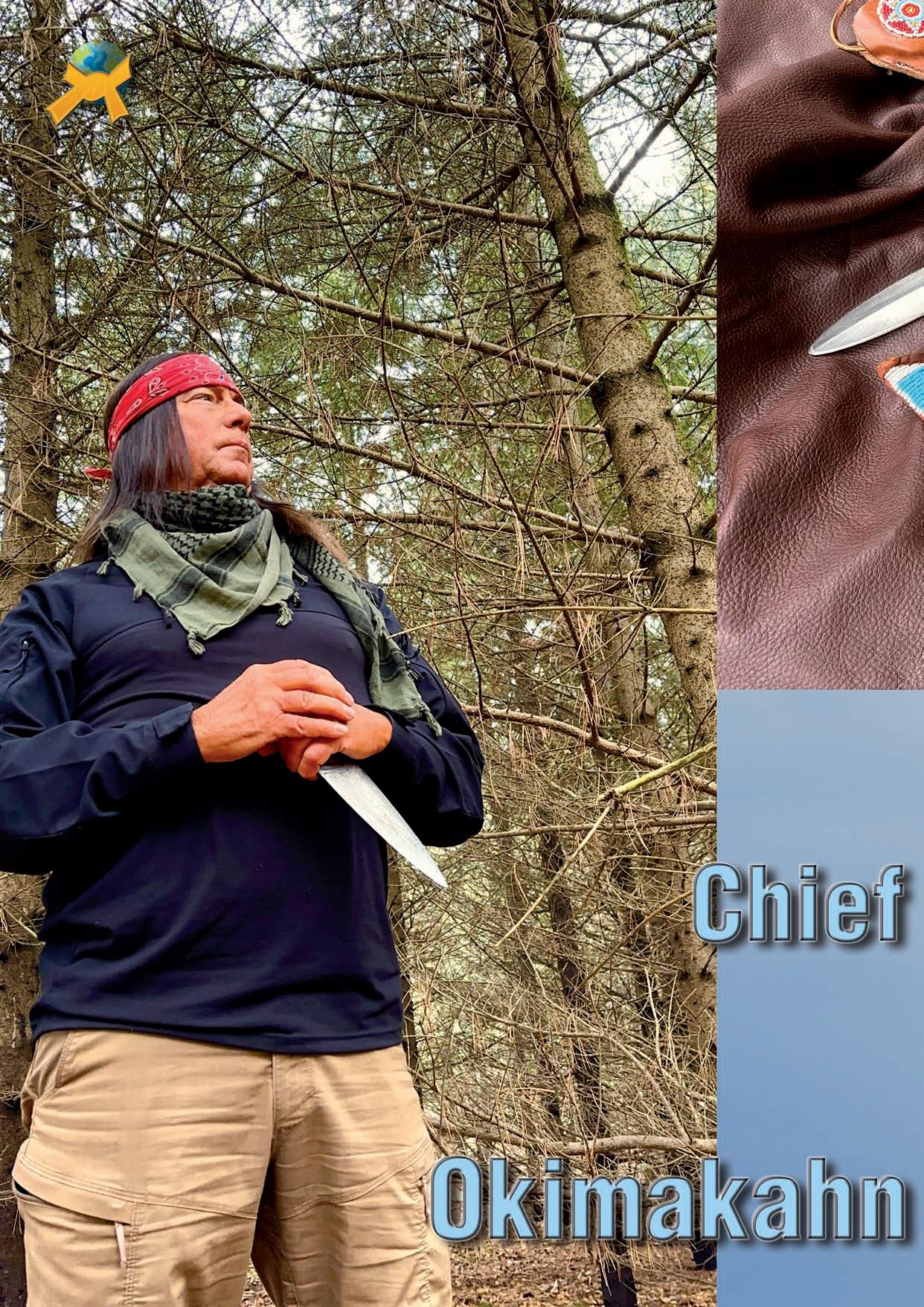

The Northern Plains Dagger is a weapon that was used by us for hunting game as well as in fighting during wars or skirmishes. The Dagger is a thrusting weapon and an effective fighting knife. Its design is to assist in reducing friction while at the same time increases the penetrating application of the knife. As well, the blade of the Northern Plains Dagger is designed much thicker and heavier to prevent any easy breakage. Daggers sold or traded without handles could be hafted with Bear Jaw, Buffalo Horn, Buffalo Bone or Wood. The handle materials for the knife scales would be cut down and would consist of two wooden or buffalo horn scales which would be riveted in place using brass or copper rivets. The pommel of the Dagger could either be clear of carvings, or in some cases have elaborate decorations symbolizing spiritual beliefs or playing a role in rituals.

Notably, the Dagger showcased the tribal identity and artisan skills of the makers who often decorated these knives with motifs that represented tribal stories, natural elements, or important symbols such as thunderbirds, which held spiritual significance. The largest Northern Plains Dagger was carried in a leather sheath at the waist. All forms of drawing placement for the sheath could be used; on the belt left side or right side, as well as horizontally across the back which drawing the weapon works effectively while sitting on horseback. Smaller and lighter knives were worn in pouches or small sheaths that were tied around the neck. The sheaths and pouches which held these knives were also decorated and could be seen dressed with feathers, fringe, and brightly colored beadwork all of which displayed extraordinary talent and attention to detail. These were made to be aggressive weapons; this is why the Northern Plains Dagger has a clean long double-sided blade without any serration to effectively prevents any hang-ups while increasing its speed in combat.
The Plains Dagger symbolized many things — Determination, Skill, Accomplishment, Victory, Loss, Spirit, Authority, Respect and Honor.
Moreover, the Northern Plains Dagger served as a tool of survival, embodying the skills and connection to nature inherent within our Indigenous culture. For many tribes, a wellmade knife was considered to be a vital tool for sustenance, while at the same time showcasing the relationship between us and the natural world. The craftsmanship involved in making the Northern Plains Dagger always signified a deep respect for the resources provided by Mother Nature and the Creator.
The Northern Plains dagger is a testament to the skill, creativity, and cultural depth of Indigenous people. Each Plains Dagger is not merely a weapon; it encapsulates stories, traditions, and the identity of our people who were deeply connected to the land and culture. Okichitaw Indigenous Combat Arts recognizes and celebrates the craftsmanship and significance of these artifacts, and we also acknowledge the enduring legacy of the Northern Plains traditions and practices. Each knife tells a story that reflects the rich history and traditions of our communities, embodying a balance of practicality and artistry. Through the Northern Plains Dagger, we gain insight into our culture which continues to value craftsmanship, community, spirituality as well as our respect for nature. Okichitaw Indigenous Combat actively works to reclaim and preserve our art and artifacts, thus ensuring that the legacies of our ancestors continue to be honored and remembered.
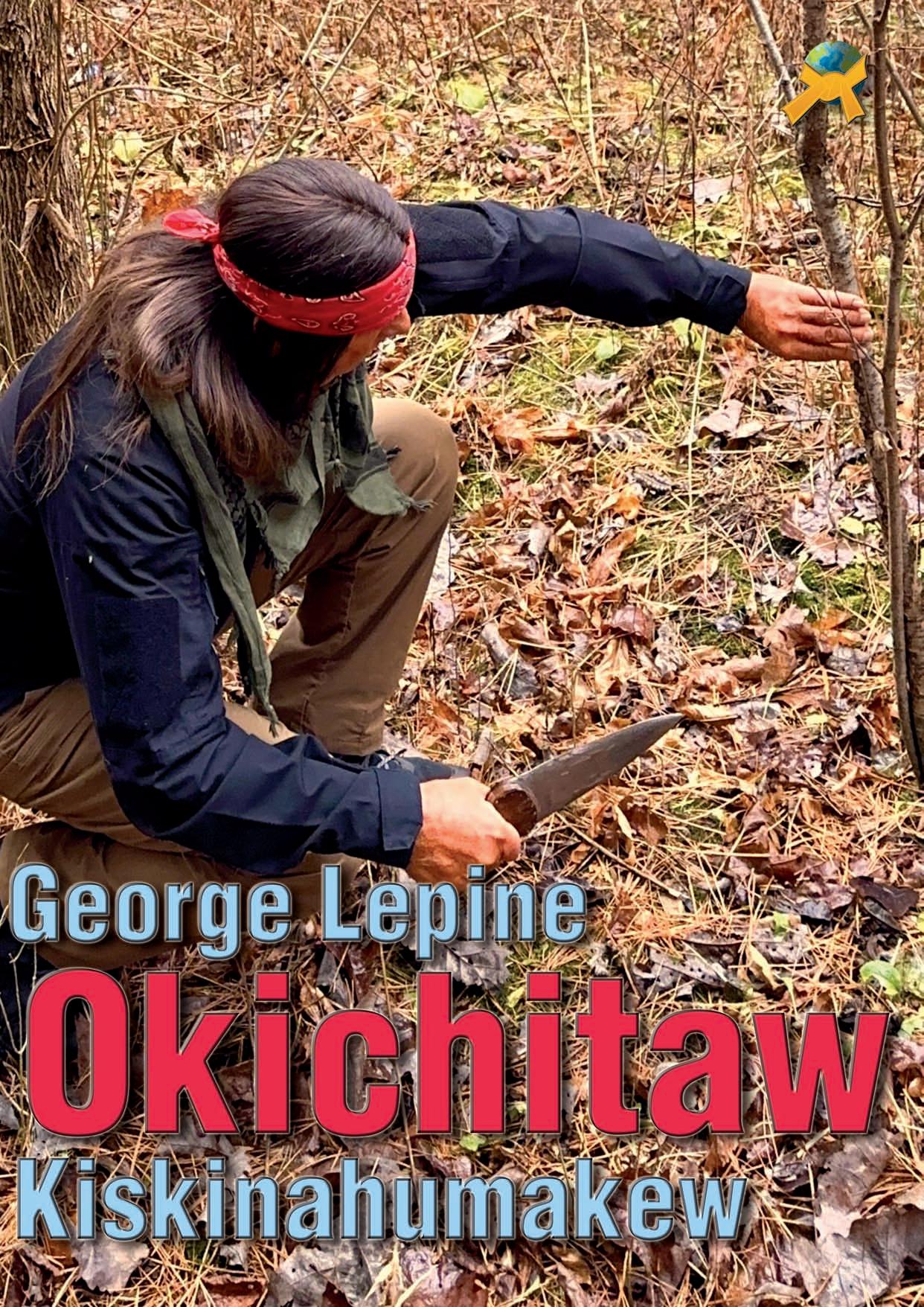



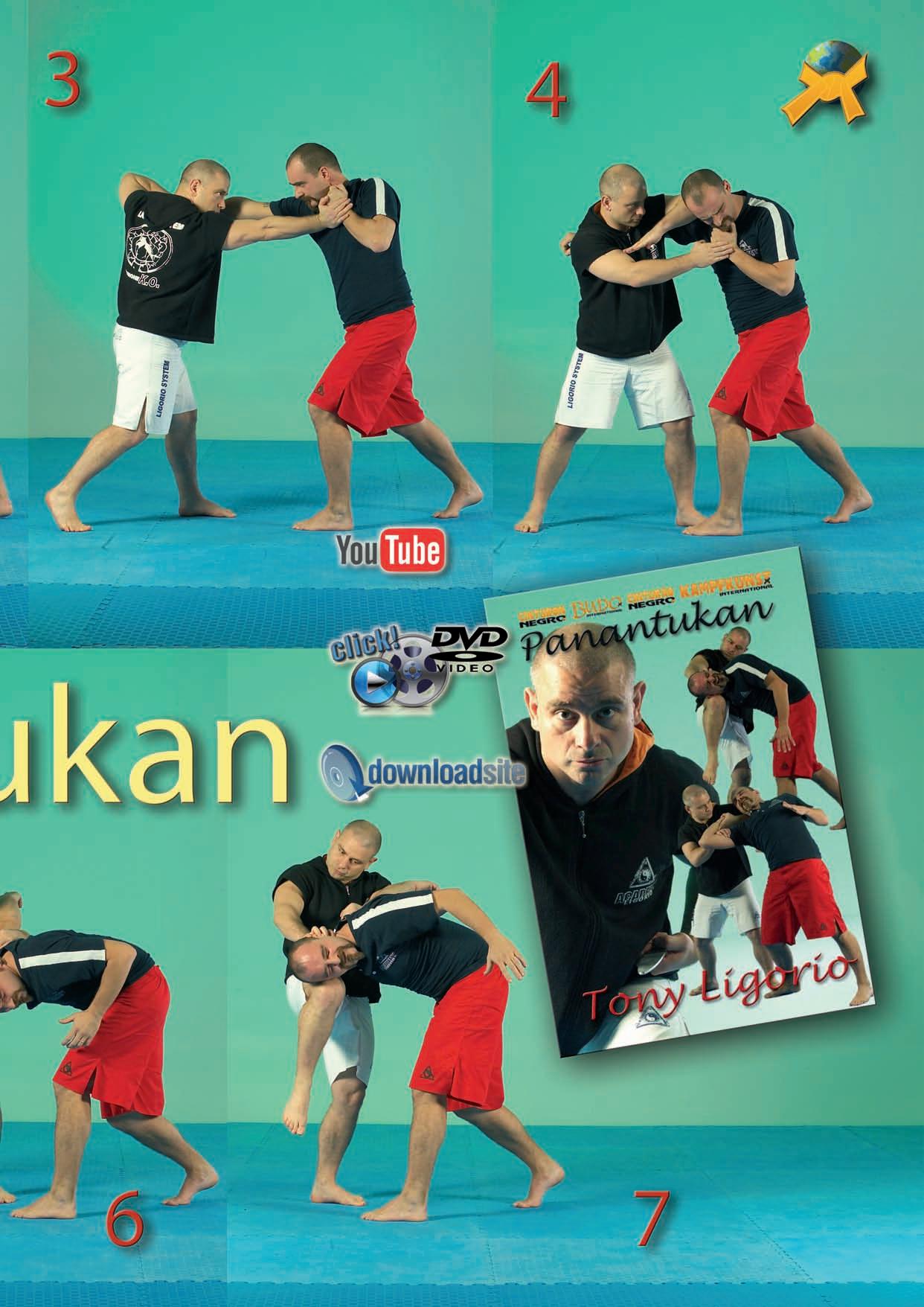

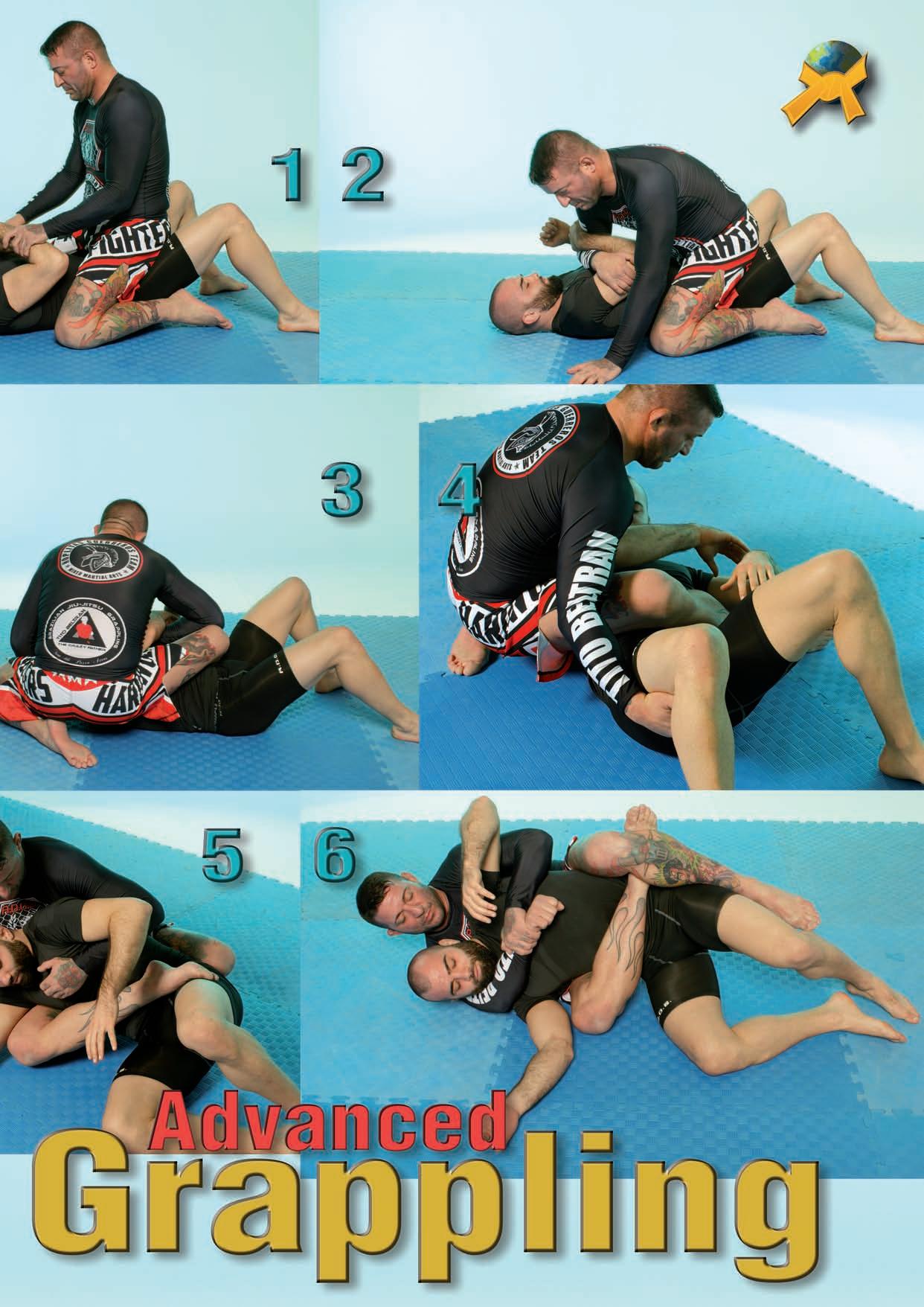

Welcome to the second issue of the 'KYUSHO LIVE' series, with which you will be able to advance in our Instructor training reserved for black belts of any art, style or method. The 2nd DVD will provide you with all the information of the first level of learning. Students at this level will focus on these 3 guiding principles of the PinPoint™ method: body movement, center control, Kyusho: arm, head and leg points. These elements however, create only the "basic box" capable of containing the more advanced connecting principles, which represent the true effectiveness of the martial arts: root, center, wave, spiral, which together with the study of the axes, lead to a level of effectiveness where the saying "maximum effect with minimum effort" can finally find its concrete expression. The knowledge of the weak parts of the opponent's body combined with the awareness of the correct alignment and structure of our body merge into one. Kyusho becomes real, it ceases to be mystical, there are no secrets in Kyusho! Master Gianluca Frisan and Master Pascut Fulvio will make available to everyone the information learned in over 30 years of experience... information often kept secret, principles perhaps shown but not explained, now they are explained in detail so that you too can learn them and make them yours!
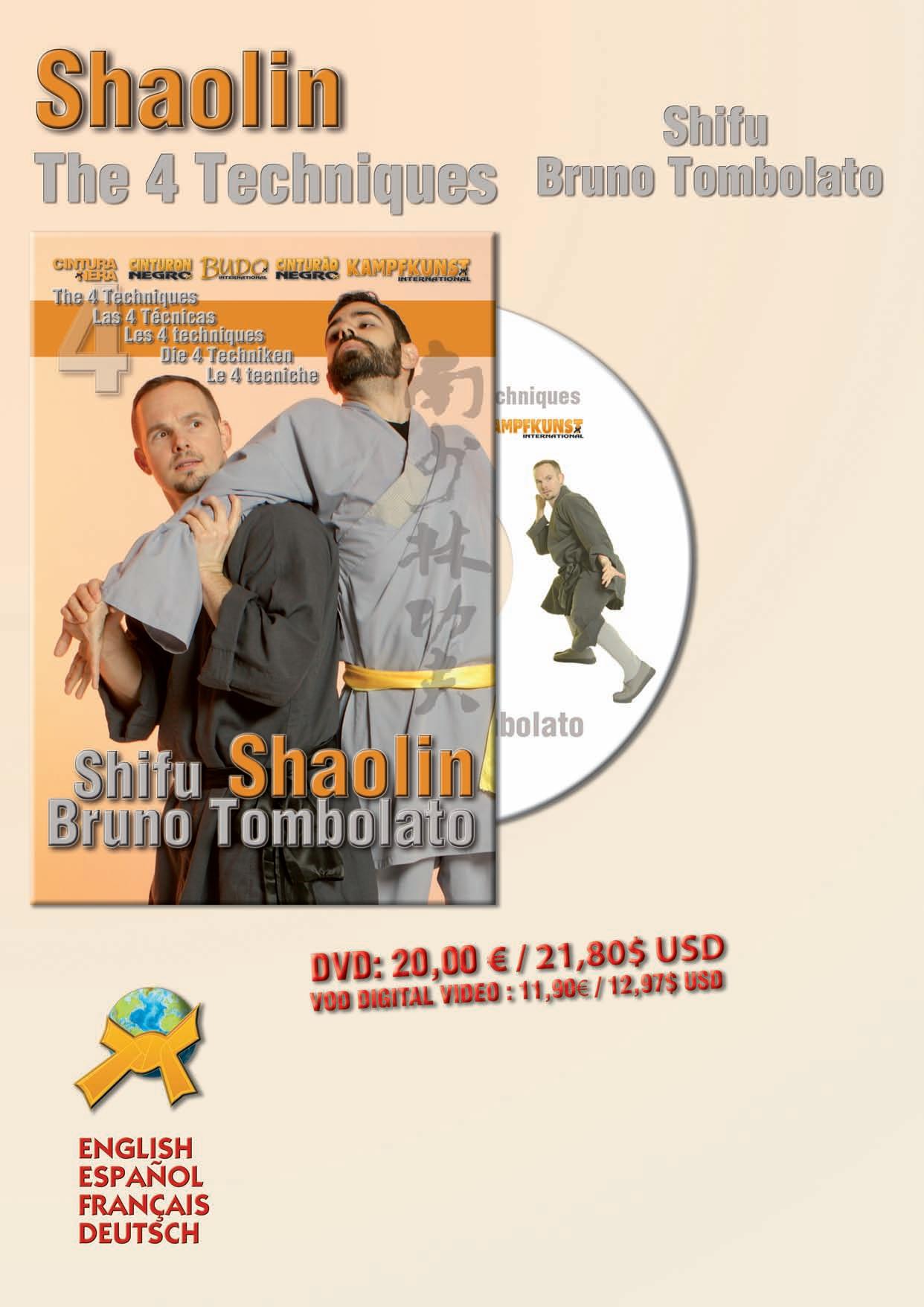
All DVDs, wichi is produced by Budo International, si provided and alone in the formats DVD-5 or MPEG-2, in VCD, DivX or the like is however neves offered with a special holograma sticker. Besides our DVD is characteristed coverings by the hig quality in pressure and material. If this DVD and/or the DVD covering do not corespond to the requirements specified above, it concerns illegal pirat copy.
What comes after you have mastered the fundamentals and intermediates? What is the next step in your journey of learning Gracie Jiu-Jitsu? The Vacirca Brothers' Gracie Concepts program structure defines three main levels of student development: GC Fundamentals, GC Intermediate, and finally (in two separate parts), GC Advanced Gracie Jiu-Jitsu. These levels indicate different levels of maturity for Gracie Jiu-Jitsu students to eventually achieve the Faixa Preta (Black Belt). By this stage, most Gracie Jiu-Jitsu practitioners have spent several years practicing with us and can demonstrate a high level of experience, a deep understanding of the Gracie Concepts philosophy, and a strong bond and passion to train and share Jiu-Jitsu with other training partners, regardless of their belt level or physical attributes. Welcome to the GC Advanced Gracie Jiu-Jitsu program to take you to the next level of flow. Remember, Gracie Jiu-Jitsu is much more than just self-defense, it is a positive way of life. 47 min.
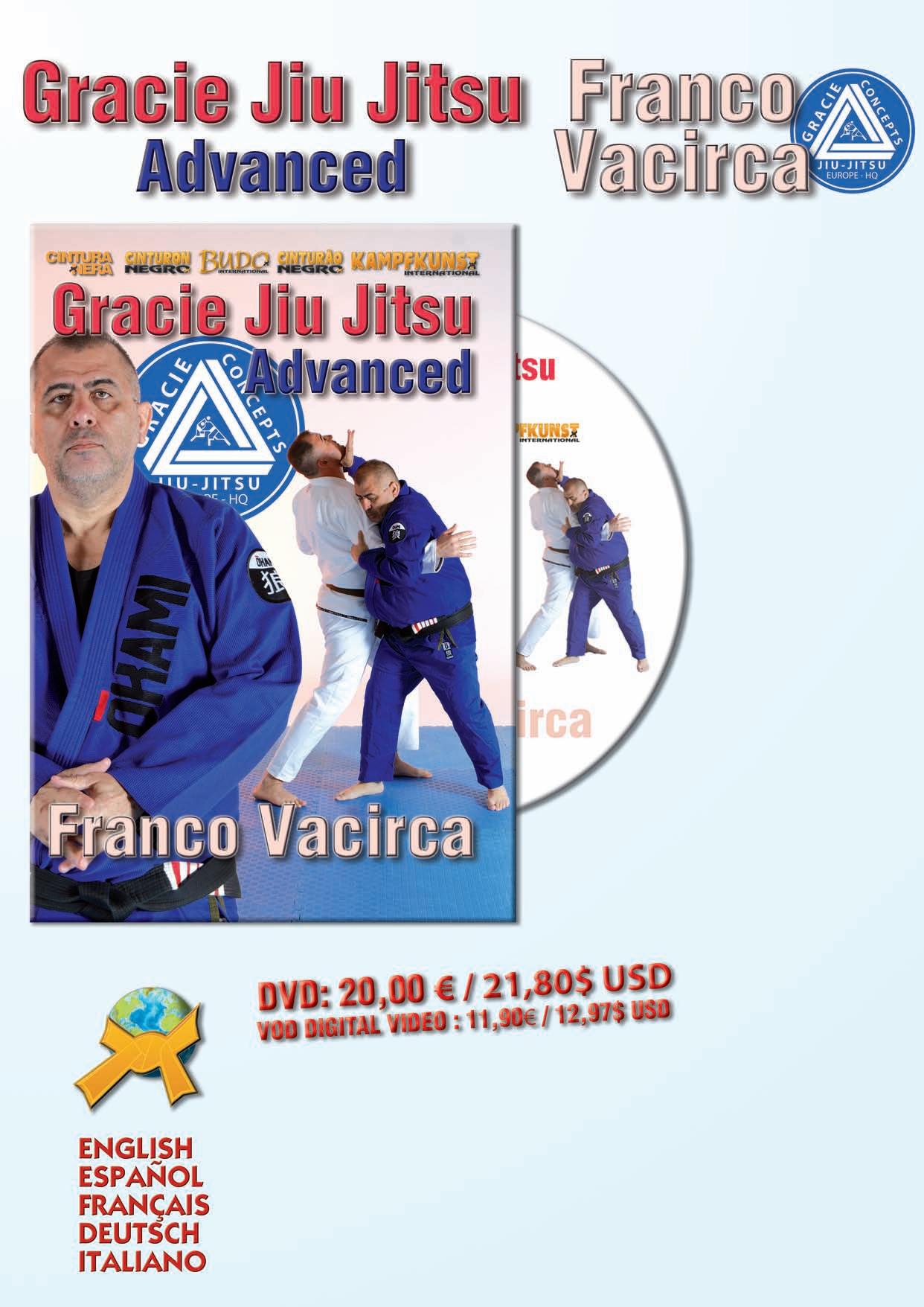

All DVDs, wichi is produced by Budo International, si provided and alone in the formats DVD-5 or MPEG-2, in VCD, DivX or the like is however neves offered with a special holograma sticker. Besides our DVD is characteristed coverings by the hig quality in pressure and material. If this DVD and/or the DVD covering do not corespond to the requirements specified above, it concerns illegal pirat copy.